- Home
- Camino Inglés
- Day One Camino Teresiano
Jump to Camino Teresiano Stages
Day One on the Camino Teresiano ~ Ávila to Gotarrendura, 23.1 Kilometers (14.4 Miles)
Our day one on the Camino Teresiano was an easy first day's walk, with a beautiful start by the fortress walls of Ávila, a walk on medieval roads and a long downhill cruise into Gotarrendura.
While initially this Camino walks on quite busy pavement as it leaves Ávila, it eventually gives way to secondary paved roads and then to long and open country lanes as it meanders from town to town.
“May today there be peace within. May you trust God that you are exactly where you are meant to be. May you not forget the infinite possibilities that are born of faith. May you use those gifts that you have received, and pass on the love that has been given to you. May you be content knowing you are a child of God. Let this presence settle into your bones, and allow your soul the freedom to sing, dance, praise and love. It is there for each and every one of us.” ~ Santa Teresa de Jesús
It is important to remember that between the towns of day one on the Camino Teresiano, Ávila and Gotarrendura, was the area where Santa Teresa lived her formative years. Keep this in mind as you tread on the ancient roads, and the country lanes, knowing that you may be following in her very footsteps. In my own heart, I tried to carry her spirit with me, throughout the walk.
Maps and Stats of Day One on the Camino Teresiano
Here is our Google map, created from our GPS tracks, with services also placed on the map. While there are services in the towns, our experience was that not many were open, so be sure to carry supplies, as well as plenty of water for your day's journey.
If you are planning to prepare your own meals at the albergue in Gotarrendura, you will need to buy your supplies in Ávila. There are no grocery stores along the way, nor in Gotarrendura! You may wish to purchase both dinner and breakfast prior to setting off on day one!
As stated above, the Way is easy, with barely 100 meters in elevation gain, with some minor ups and downs, followed by the long downhill for the second half of the journey.
If you are looking for accommodation in Ávila, there is the Albergue de Peregrinos de Ávila, right across the street roundabout in front of the western gate to the medieval city, called the Puerta de la Adaja. You can also stay at the Albergue/Hostal in the Convento de Santa Teresa.
We always enjoy a hotel prior to and after our Caminos, so we chose the Hostal El Rincón, inexpensive yet comfortable, in the center of town. For even more choices you can book ahead at Booking.com, to see what is available.
Caminos Teresianos EBook
Our downloadable Caminos Teresianos Guide in PDF Format contains all the valuable information from our web pages, for comfortable reading offline and without ads on your personal device. Don't carry a heavy guide book to increase your pack weight. Use our digital guides on your next Camino instead!
Our eBook guides are packed with frequently updated information, because a digital format is more nimble than hard-copy publishing. Our eBook Guide is unique because we also entertain and immerse you with our story! Click here for more info or BUY NOW!
Jump to Camino Teresiano Stages
Photo-Rich Travelogue for Day One on the Camino Teresiano
To begin your day one on the Camino Teresiano, start at the Convento de Santa Teresa, shown below, and walk out the Puerta de Santa Teresa, or St. Teresa's gate, shown farther below.
After exiting the walls, through the gate, immediately turn right.
Keep on walking, following along the fortress walls.
There is no waymarking here that we could see at the beginning of the route. Just follow the clear wall path shown below.
After about 400 glorious meters along the wall, descend on this stairway to the main street below. The light was beginning to glow in the distance, creating a beautiful backdrop to our walk.
Turn right onto the main street and crossover to the other side of the street and walk along this main street for a bit more than one hundred meters.
Come to the bridge across the Río Adaja. There is still no way marking until you get down to the level of the foot bridge. This is where all the yellow arrows of the Camino Levante start presenting themselves in abundance!
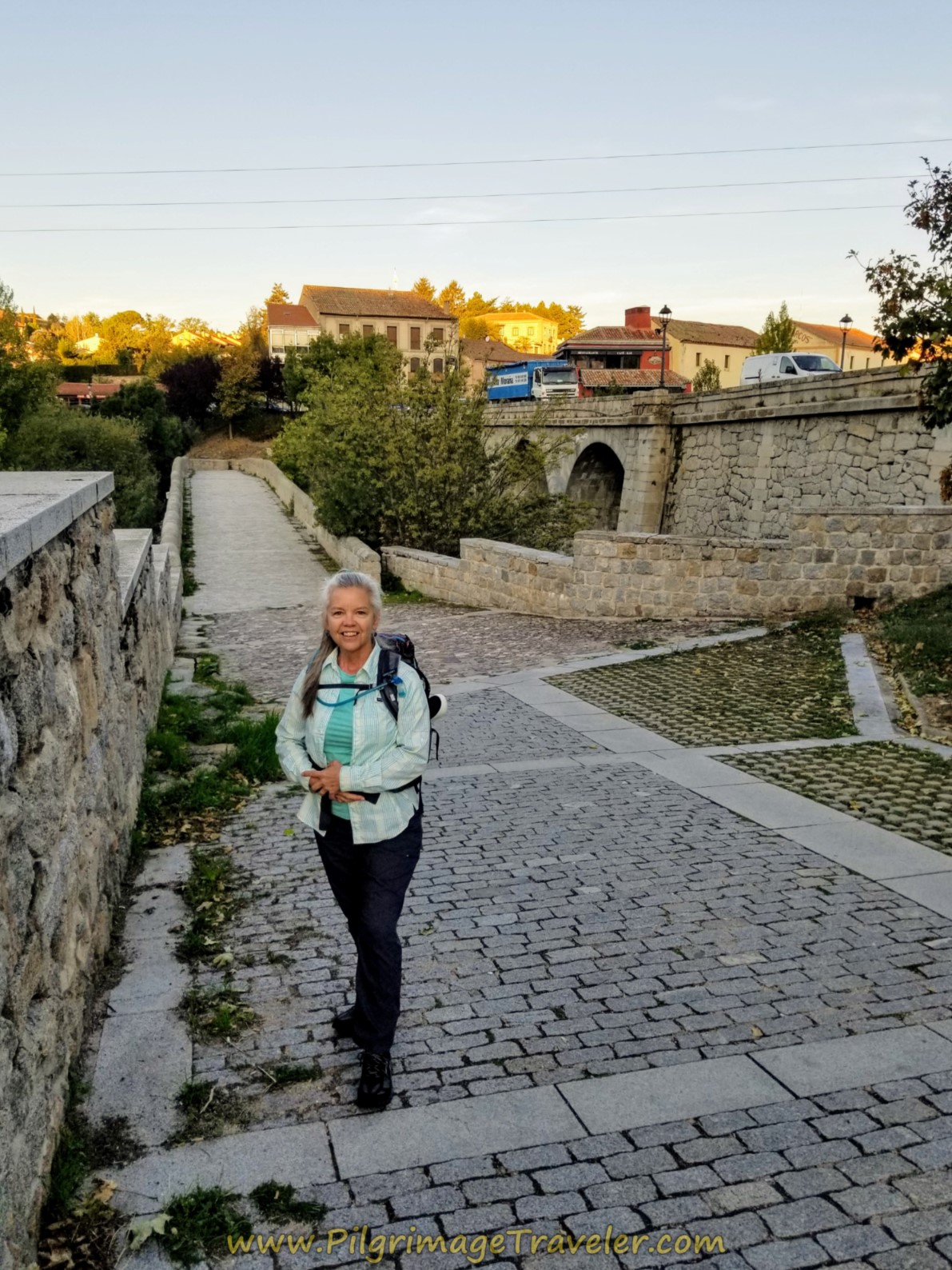 Elle at the Pedestrian Bridge Across the Adaja River
Elle at the Pedestrian Bridge Across the Adaja RiverFind the pedestrian bridge, just before the highway bridge and take it. Here I am, left, at the start of the pedestrian bridge.
Continue on the bridge to this staircase, below, walk up it and back up to the street level. We spotted the first red arrow of the Camino Teresiano here, on the wall.
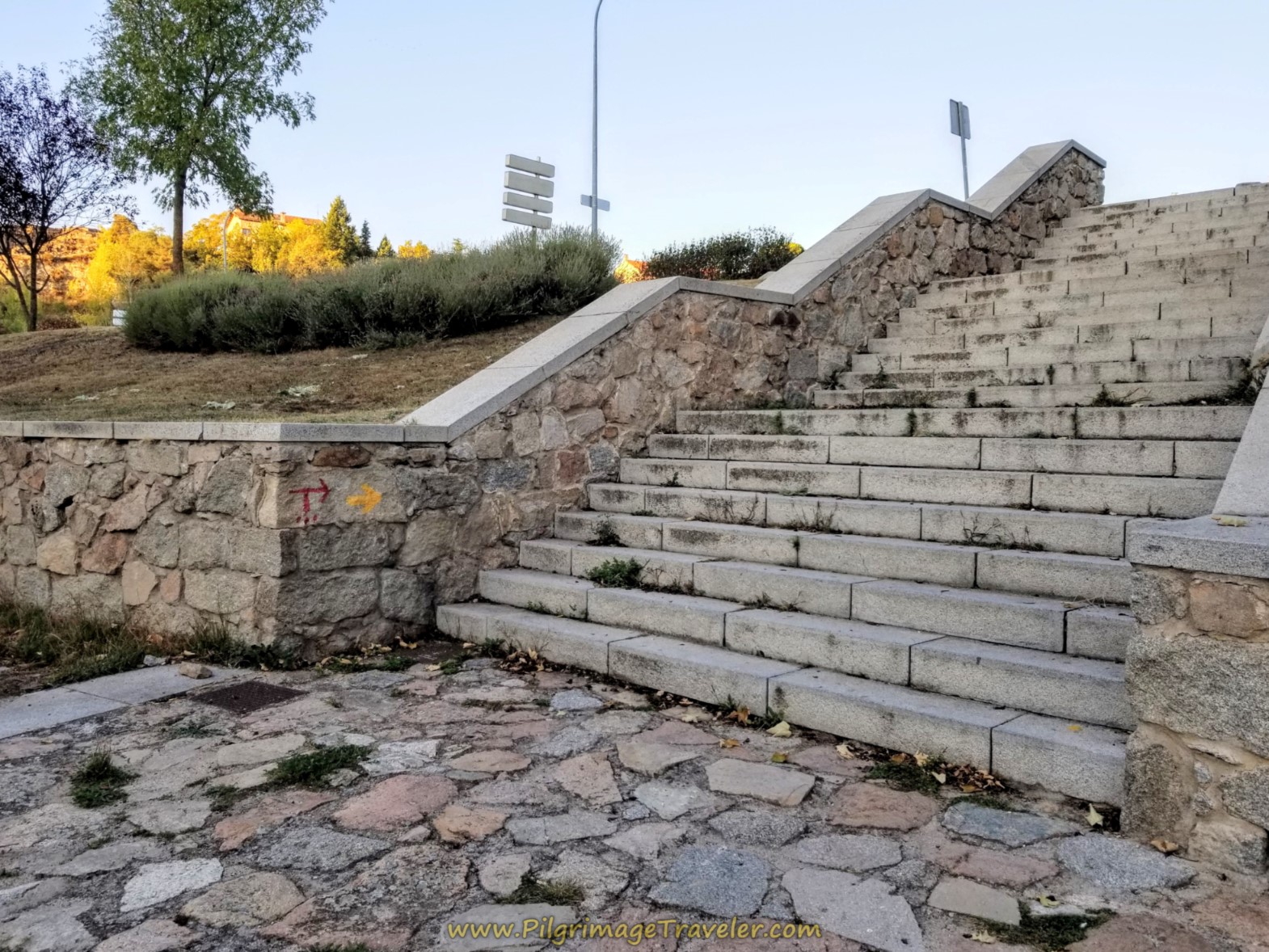 First Red Arrow of the Camino Teresiano
First Red Arrow of the Camino TeresianoOn the street level, at the roundabout, turn right and walk up the hill on the N-110 for 100 meters. Thus begins the long, gradual climb of 125 meters elevation gain over the next 7.0 kilometers. You will barely feel it.
Take the next slight right onto a side street, called the C. Cuatro Postes, shown below.
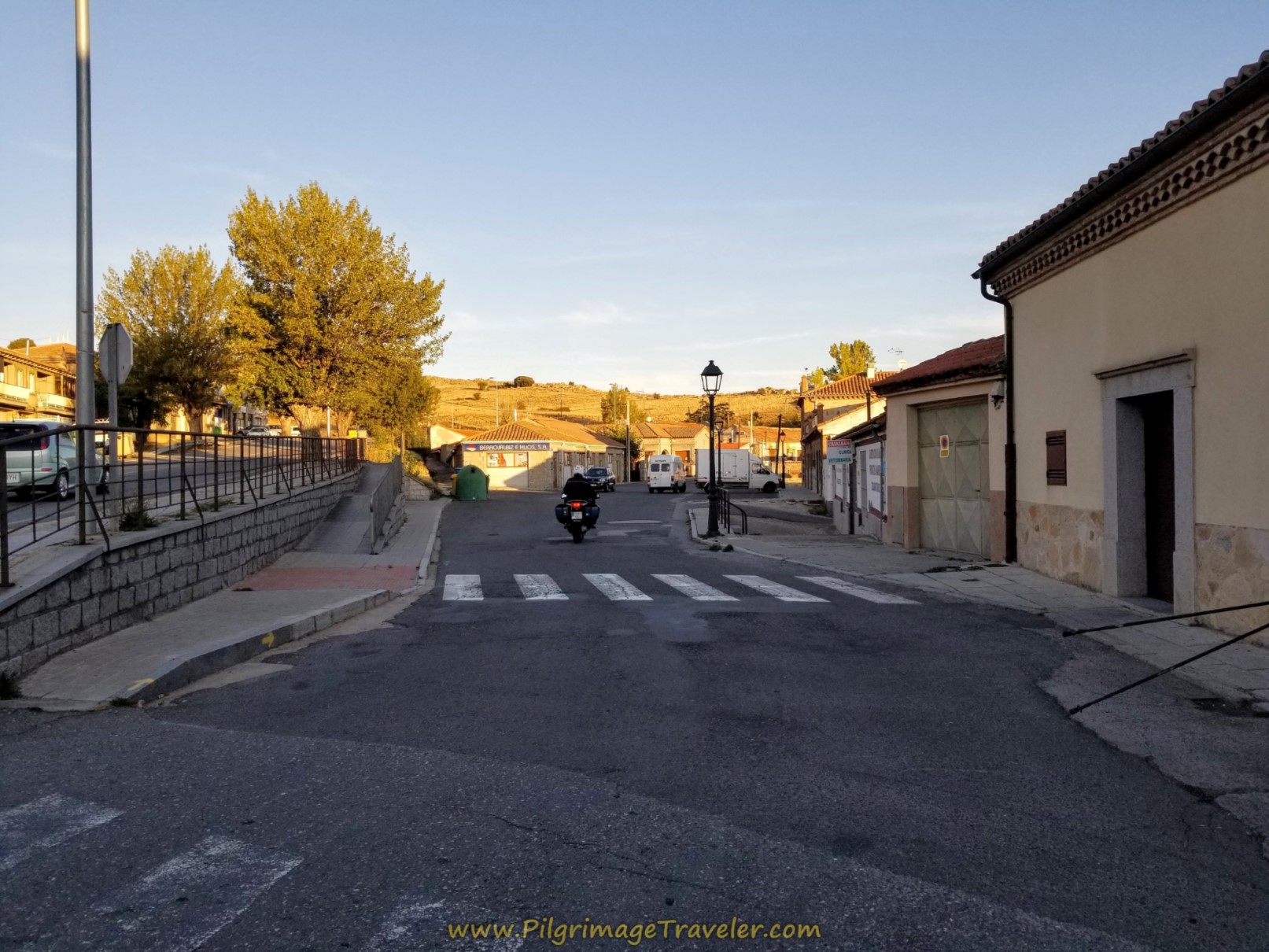 Right Turn off the N-110
Right Turn off the N-110Almost immediately, you can see the famous viewpoint over Ávila, from the Four Posts or the Cuatro Postes, shown below, on day one of the Camino Teresiano.
When you have reached the Four Posts Viewpoint, you can pause here, to have a look-back at the city, in all its glory. Here is my photo of it, unfortunately, with the light wrong, in the early morning. You can just discern the mighty fortifications in the photo.
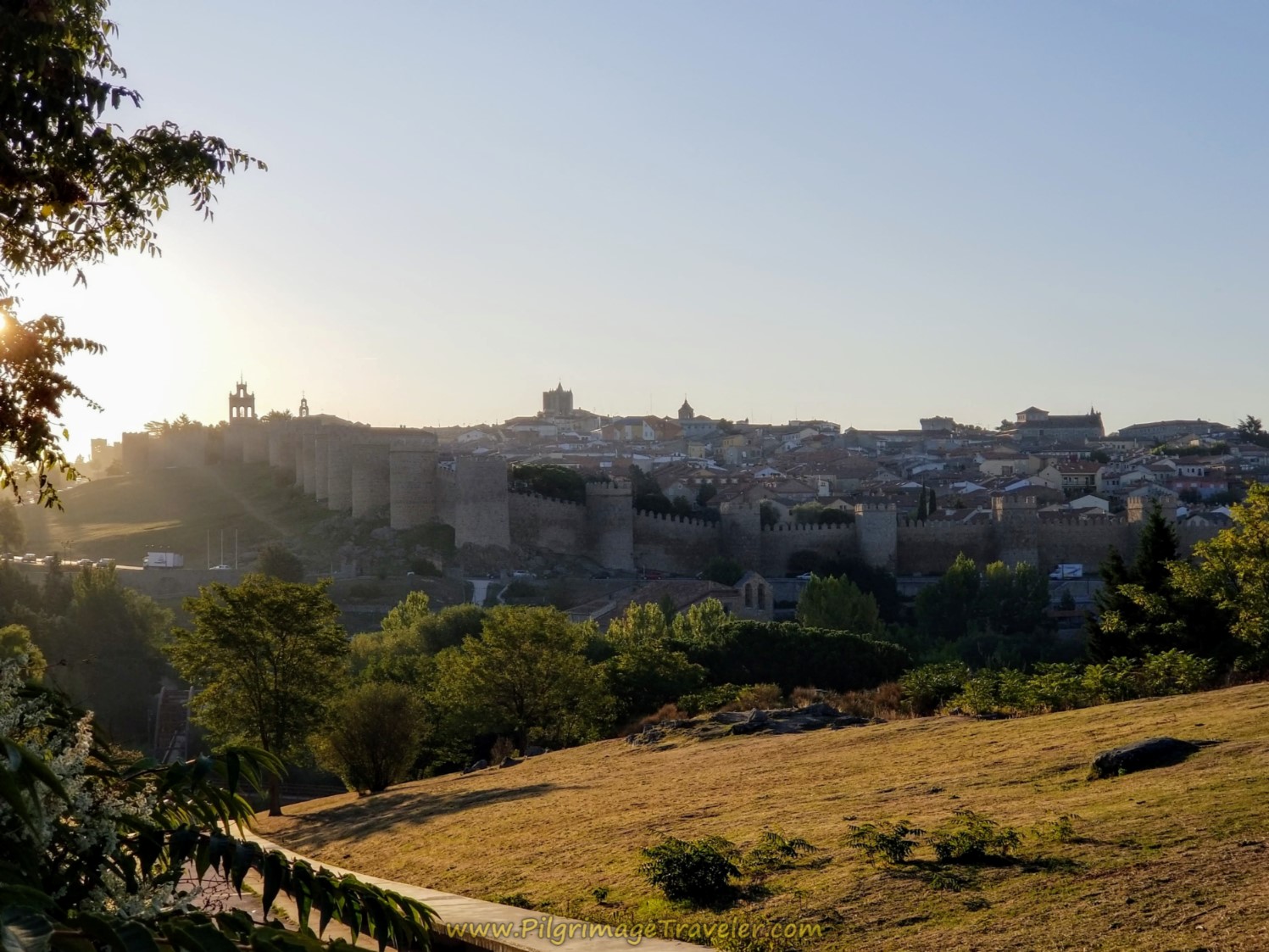 Ávila From Cuatro Postes
Ávila From Cuatro PostesAfter pausing here for the view, allow your heart to soar, contemplating for the final time, the significance of this town in the life of St. Teresa.
Continue on the Camino to re-join the busy N-110. Take care here if you are leaving in the morning during rush hour. In fact, as you continue on the N-110, after 2/3 kilometer, it joins a very major intersection with three highways. The pilgrimage traveler is forced to walk on the shoulder as you enter and walk through this interchange.
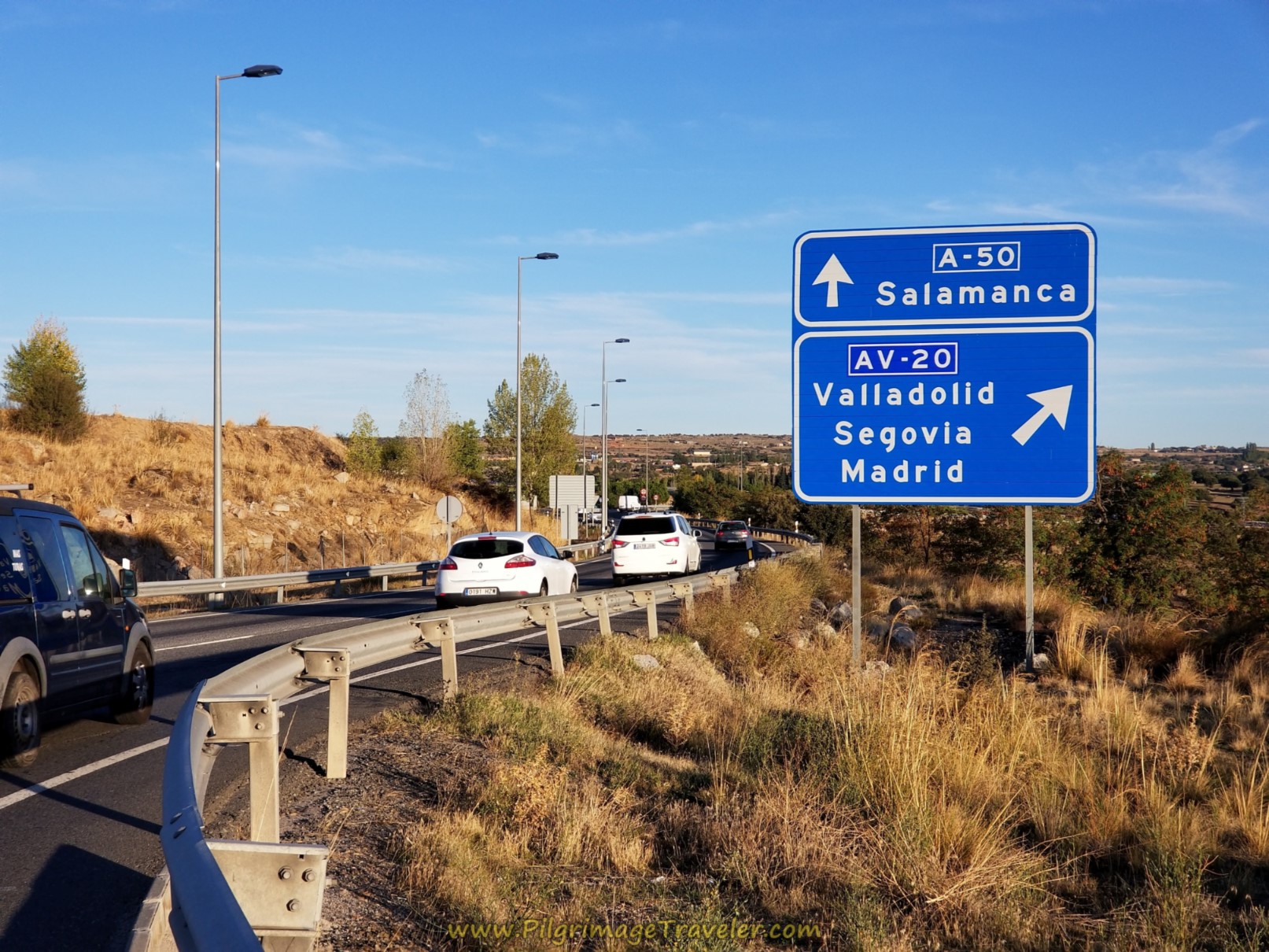 Highways Converge
Highways ConvergeJump to Camino Teresiano Stages
The yellow arrows are sufficient to guide you as you negotiate the many divergences and convergences of this interchange. Do know that you will remain on the N110 through all the interchanges. After about 1.2 kilometers on the N-110, come to a large roundabout, where you will follow the arrows to the right to find this tunnel, and a side road toward Narrillos de San Leonardo. This turnoff, where you leave the N110, is about 2.5 kilometers from the start.
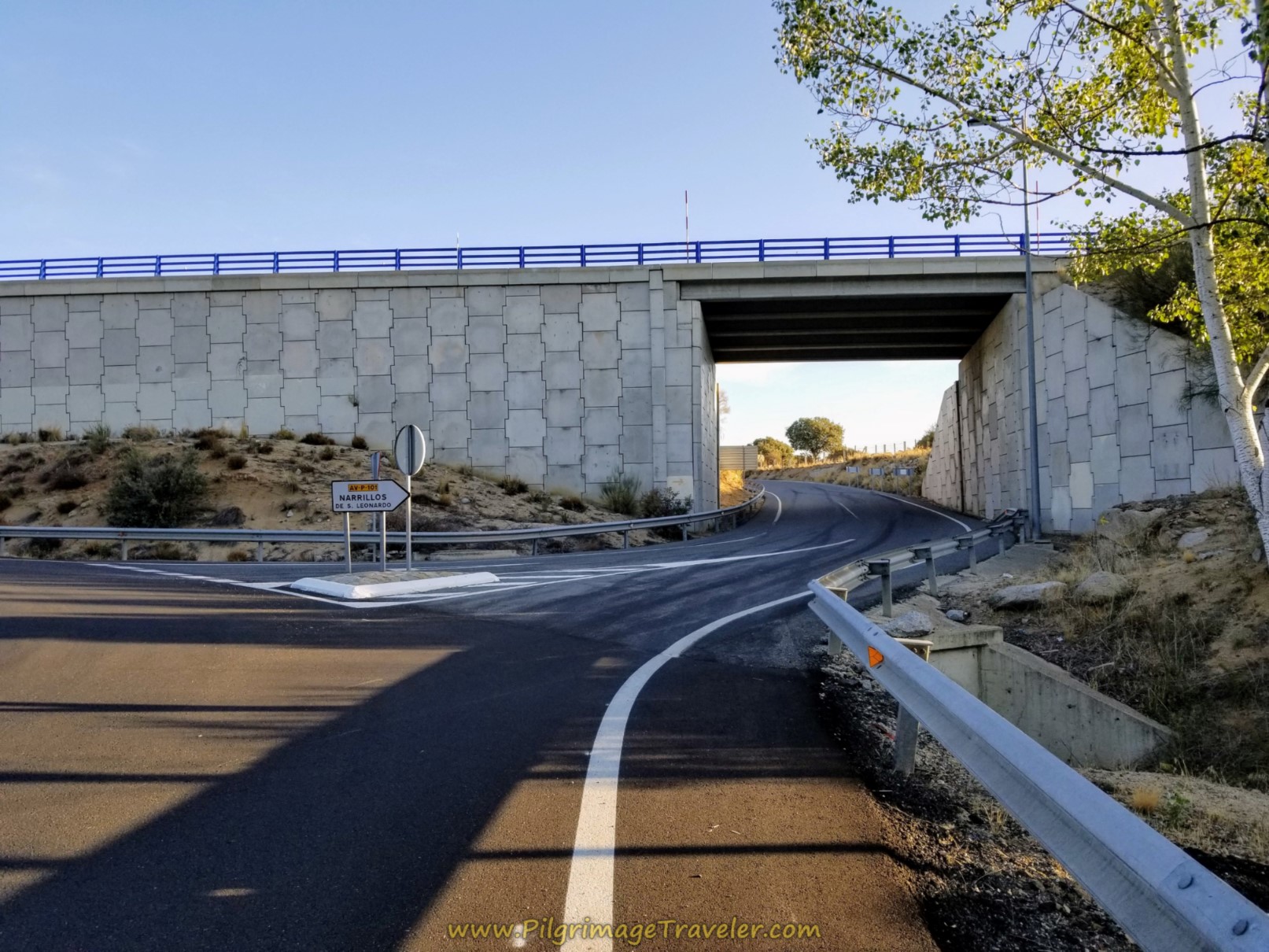 Find Side Road to Narrillos de San Leonardo
Find Side Road to Narrillos de San LeonardoAs we walked through this overpass shown above, we encountered a very large red arrow and our first Camino Teresiano tile placard, shown below. It is important to note this emblematic sign, as you will see more of these guiding your direction, as you walk through the towns to come.
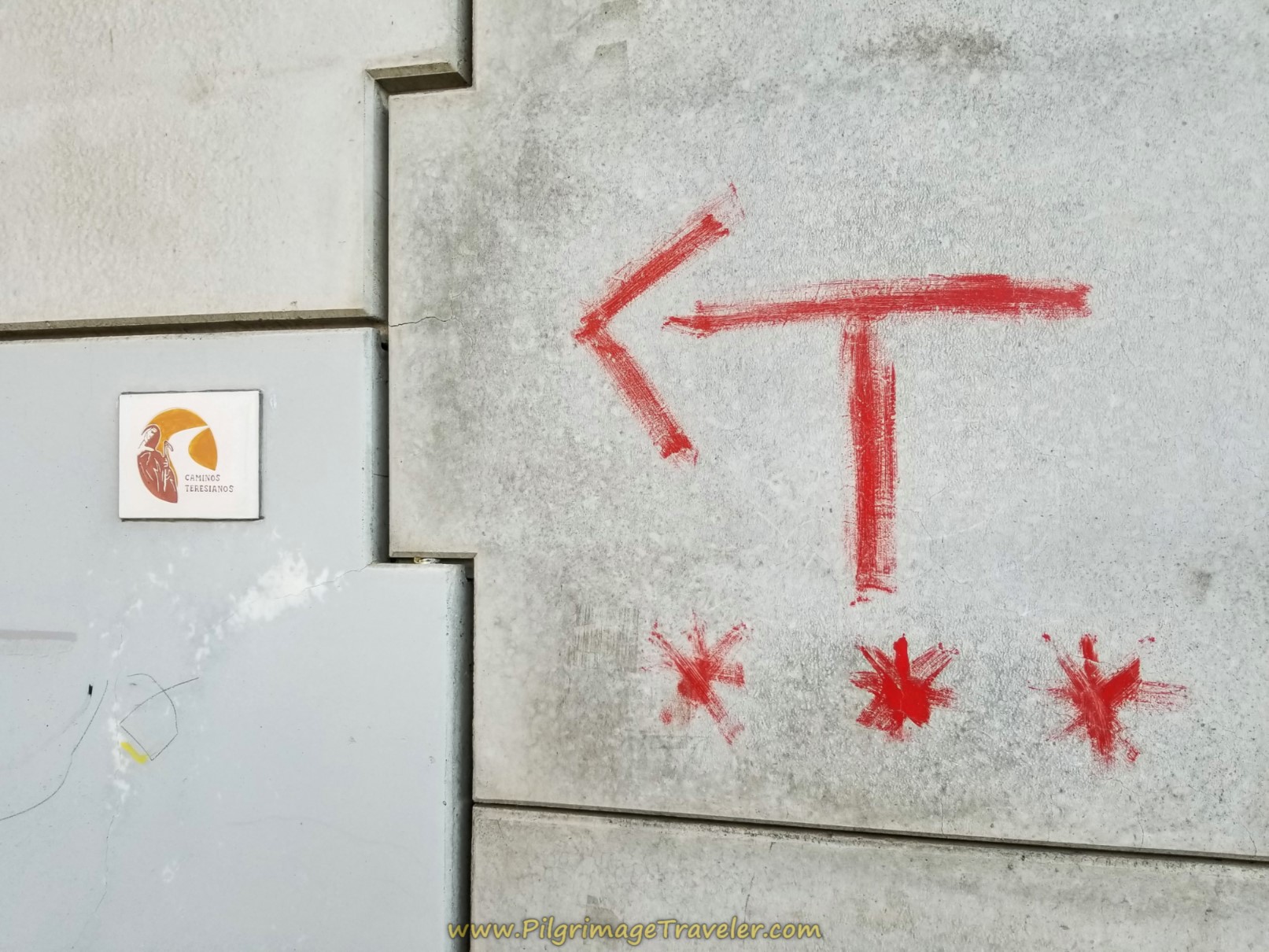 First Emblematic Camino Teresiano Placard
First Emblematic Camino Teresiano PlacardIt is nice at this juncture to finally be out of the city, the traffic and the noise as you head northward on this quiet country paved road for the next three kilometers.
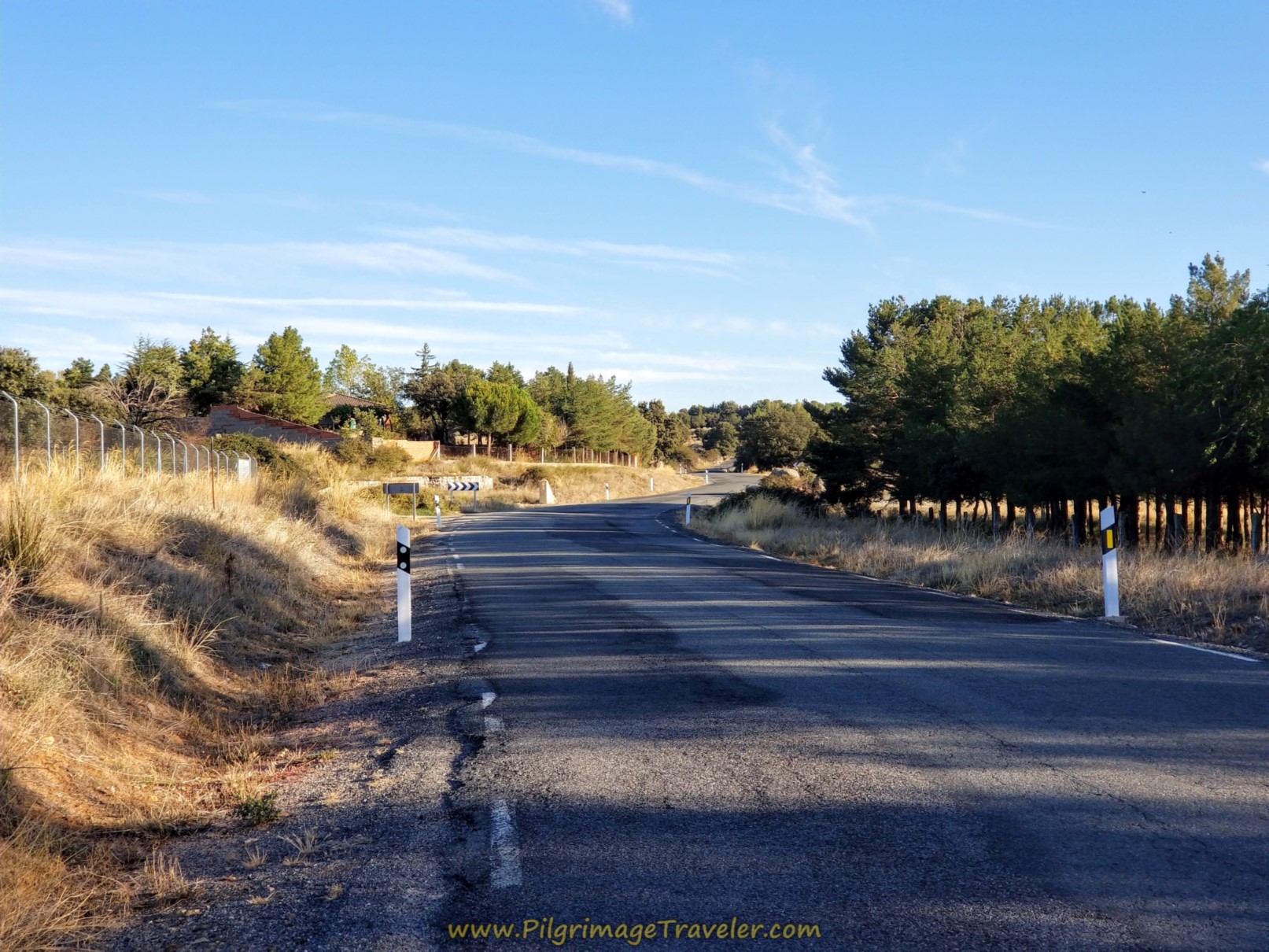 Follow Country Paved Road
Follow Country Paved RoadAs you climb up and out of the city, look over your right shoulder once in a while and you will be rewarded by ongoing views of Ávila.
Since it was late September when we walked, the wild blackberries were ripe, and in abundance along the side of the road. We helped ourselves frequently to their bounty!
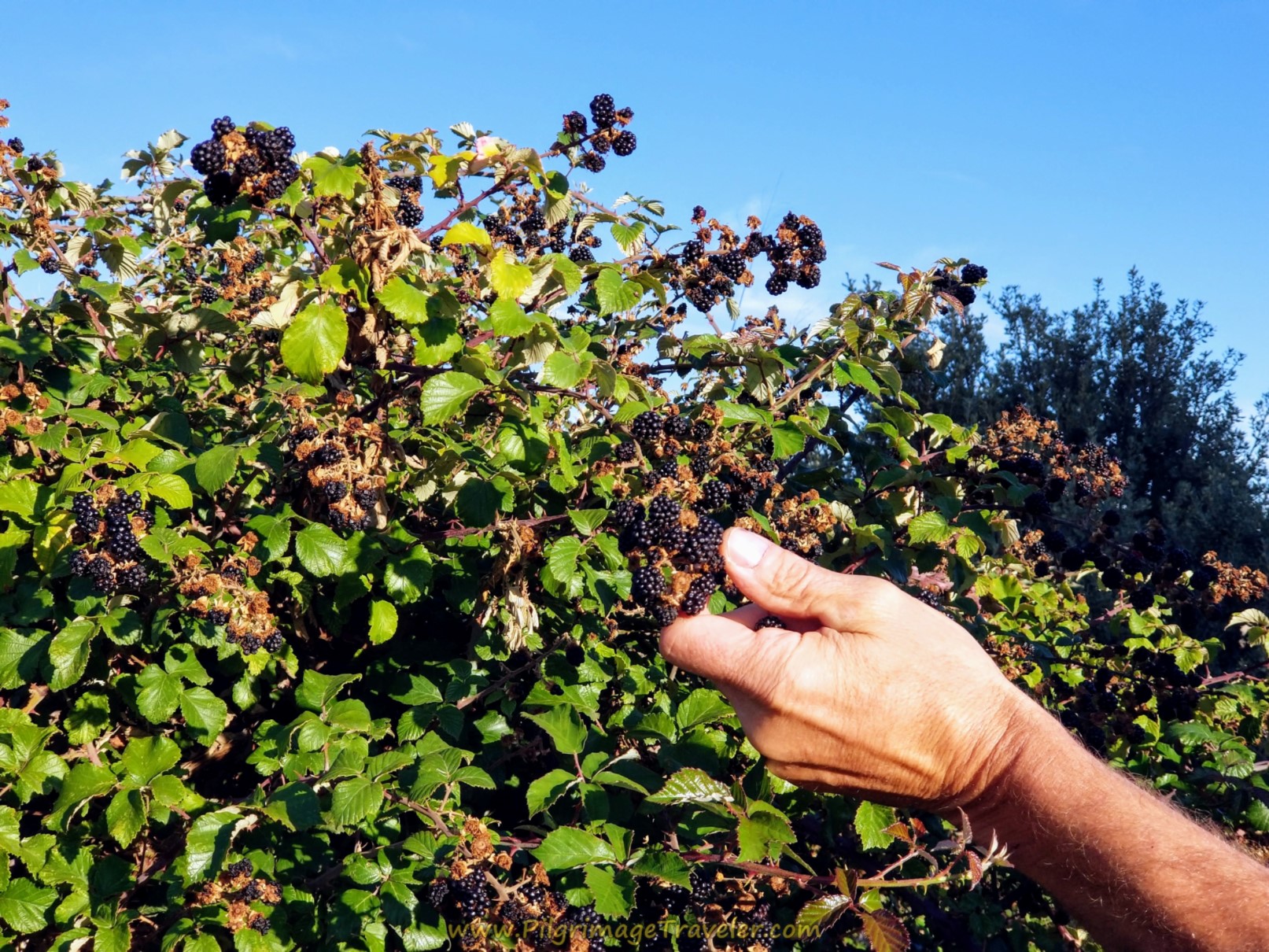 Gorgeous and Delicious Blackberries
Gorgeous and Delicious BlackberriesAfter approximately 5.3 kilometers into day one of the Camino Teresiano, come into the town of Narrillos de San Leonardo.
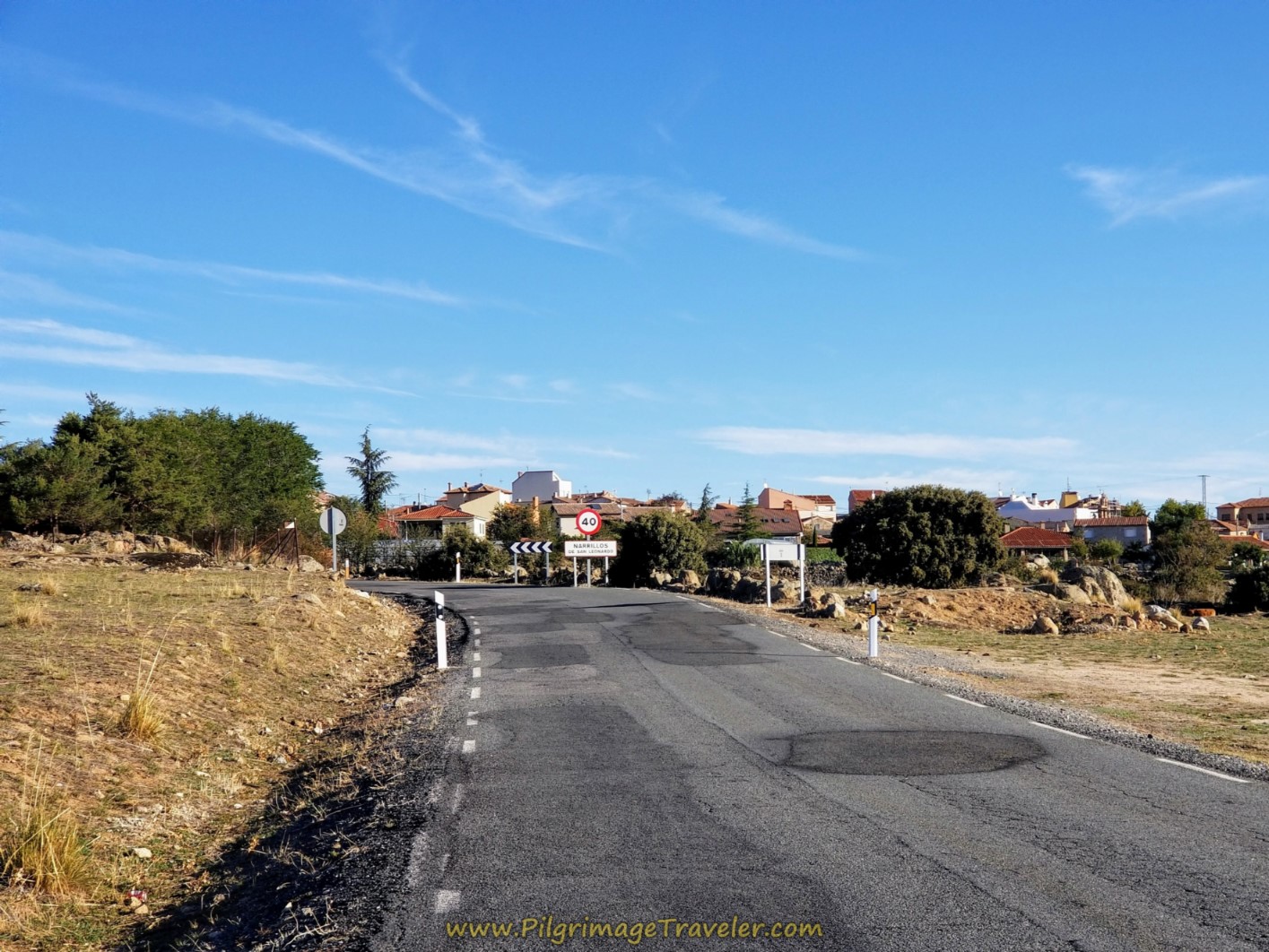 Entering Narrillos de San Leonardo
Entering Narrillos de San LeonardoAs you enter town, come to a T-intersection, shown below, and turn left. On the wall of the building is another Camino Teresiano placard. A lovely addition to this Camino.
If you were to turn right, you would come to the village church. We did not choose to see it. There is also a café in town, one block north of this intersection, with very limited hours (weekends and evenings only).
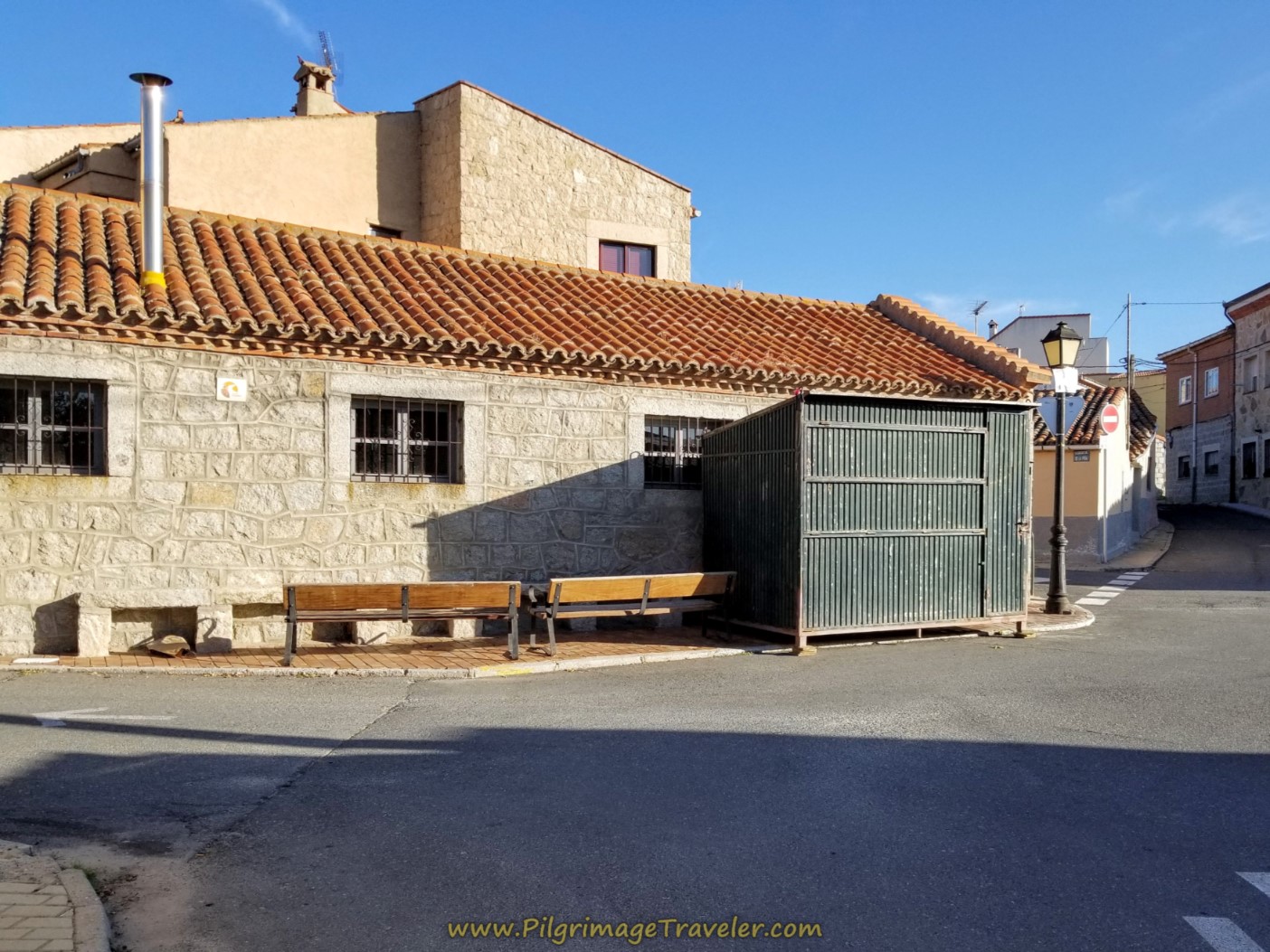 Left Turn in Narrillos de San Leonardo
Left Turn in Narrillos de San LeonardoAfter only another 100 meters, turn right in town, to pick up a street that will lead you through this very small town, and back out on the road shown below. Do not count on any services here. There are several Casa Rurales here, the Casa Mónica and the Casas Encinares, both requiring a two night stay, so not very appropriate for pilgrims. Check my interactive Google map above for their exact location.
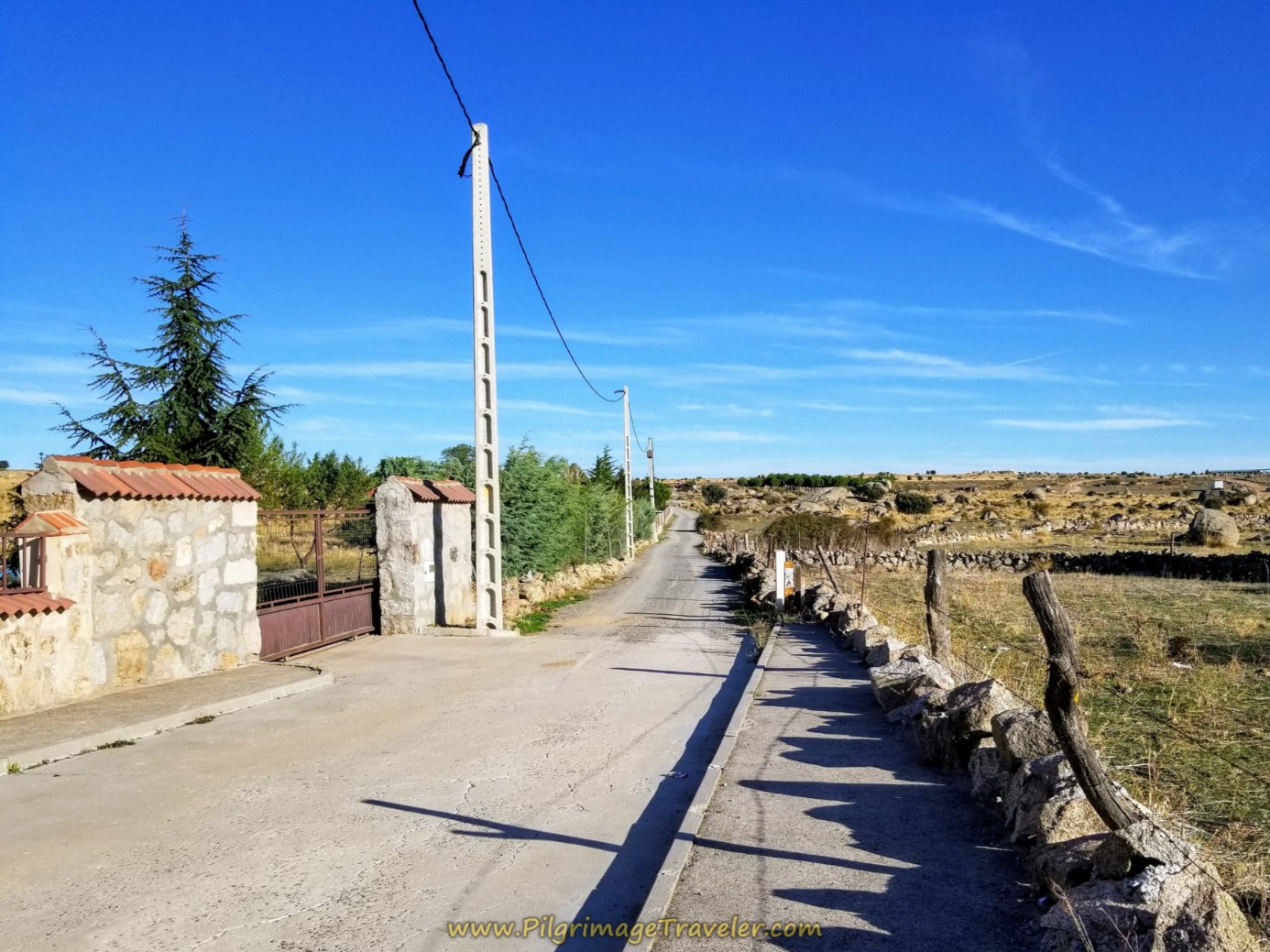 The Road Leaving Narrillos de San Leonardo
The Road Leaving Narrillos de San LeonardoThere is a bit more of an uphill grade up and out of Narrillos de San Leonardo, and once you reach the high point, remember to turn around and look back toward town. You will be able to see your final glimpses of Ávila in the far distance.
Continue to follow the gravel lane that left Narrillos, shown below, for approximately 400 meters.
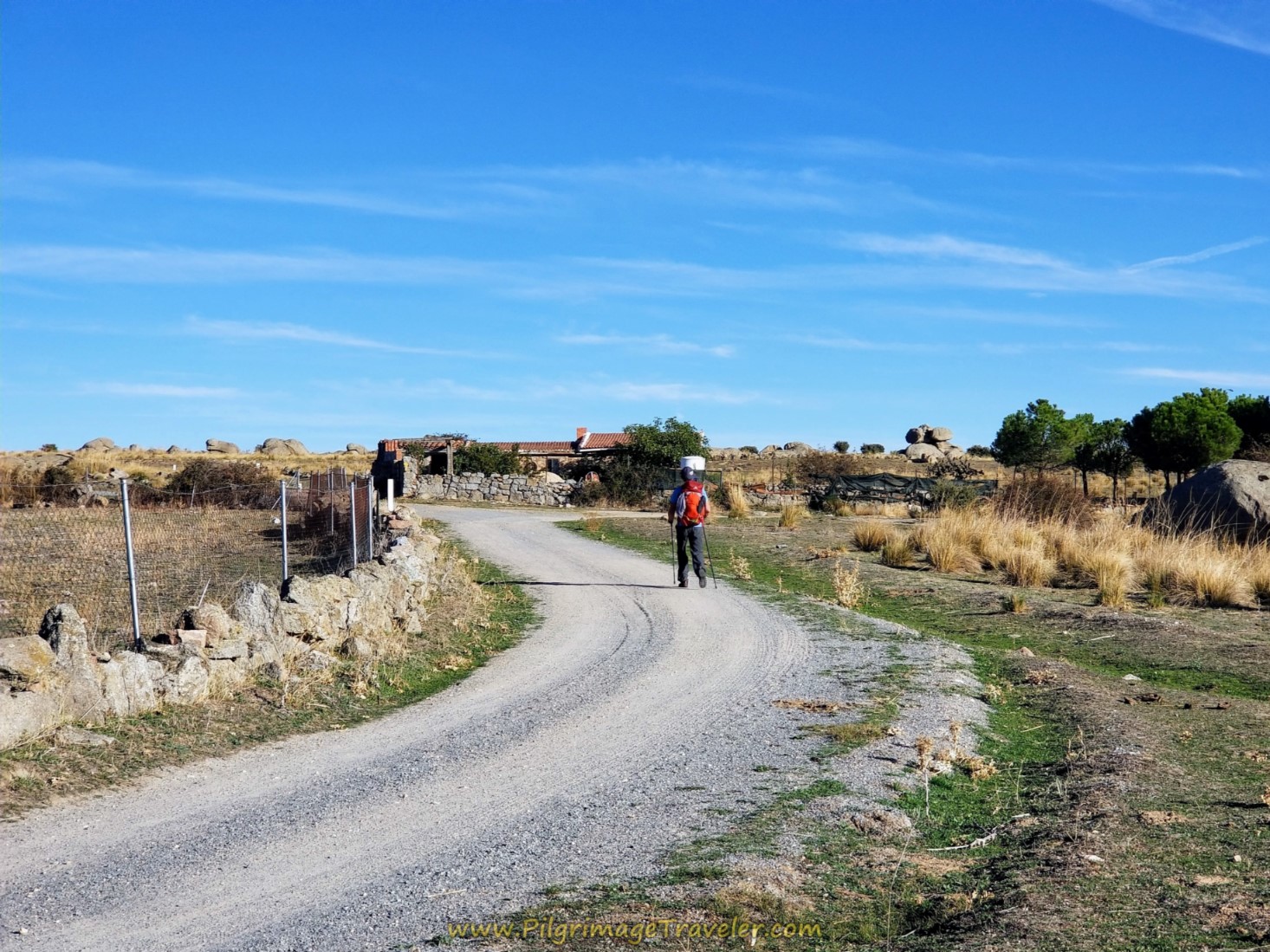 Follow Gravel Lane
Follow Gravel LaneLeave the gravel lane as you stay left at this intersection, below to join a dirt road, and path system for the next 1.5 kilometers.
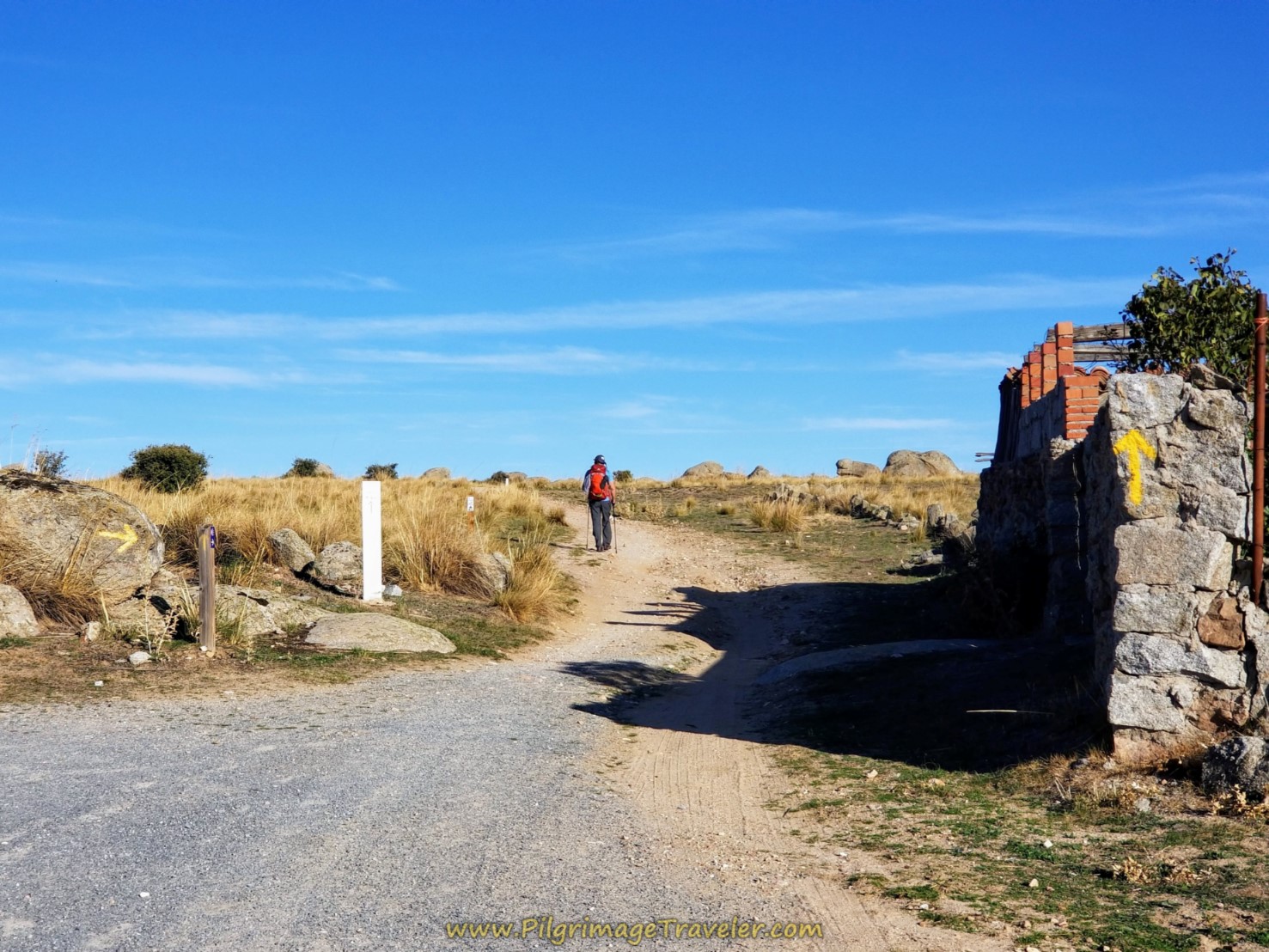 Left Turn at Y-intersection
Left Turn at Y-intersectionContinue to mildly climb to this rocky area.
Reach the first high point of the day at 1179 meters. Pause here and have your final look back to see Ávila, and notice the prominent cathedral and the walls for the last time.
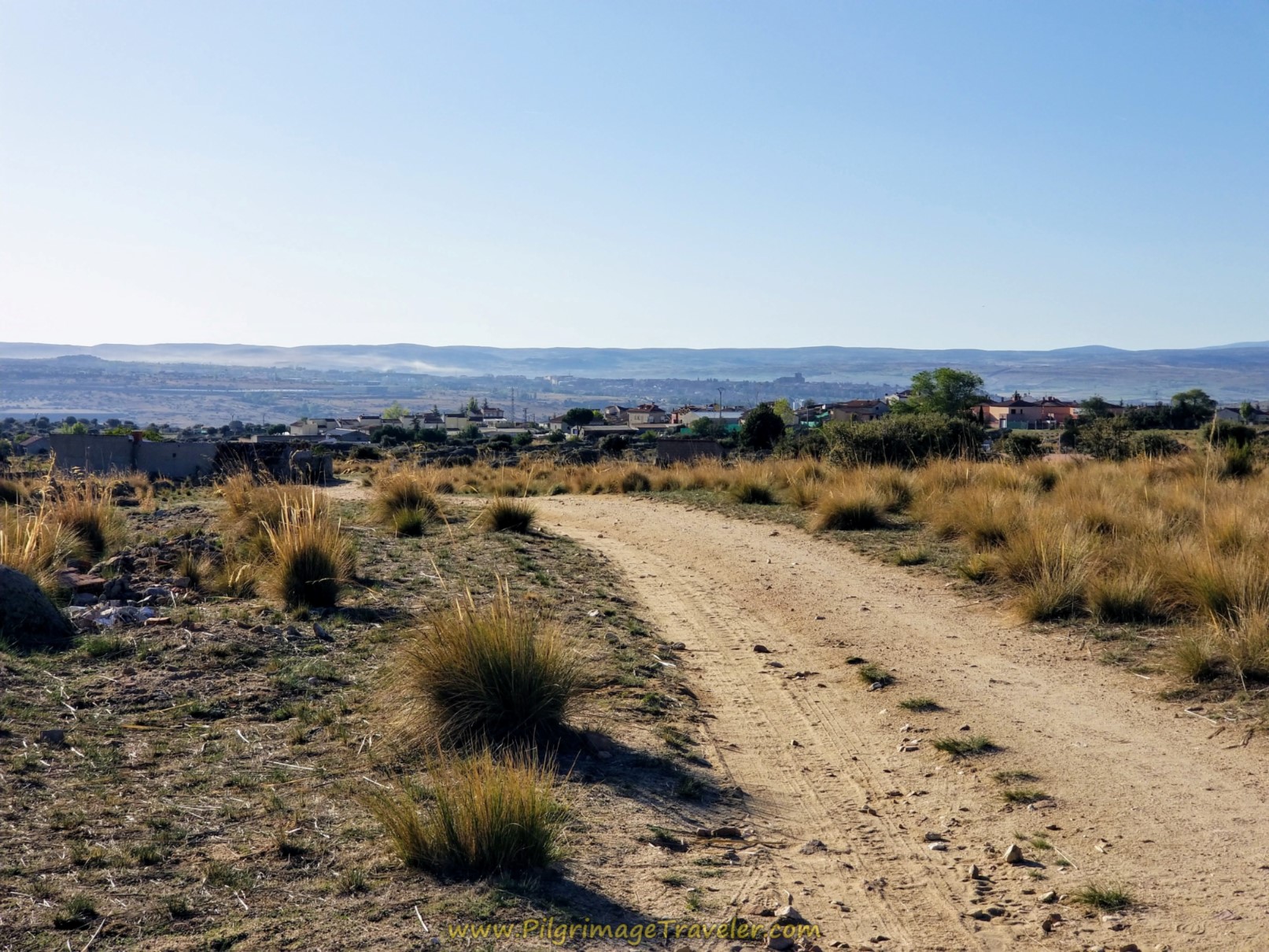 Final Glimpse Back at Ávila
Final Glimpse Back at ÁvilaAfter about 250 meters, stay straight on and begin a mild descent. You can see a long way ahead to the countryside, and take note of a quarry in the distance, that will eventually be your destination.
In this wild, and mostly untouched land, you can perhaps connect more easily with the spirits of St. Teresa and St. John of the Cross, her male mystic counterpart of the time. Breath it all in as you take your footsteps forward; their energy and their faith. "May you not forget the infinite possibilities that are born of faith." (St. Teresa)
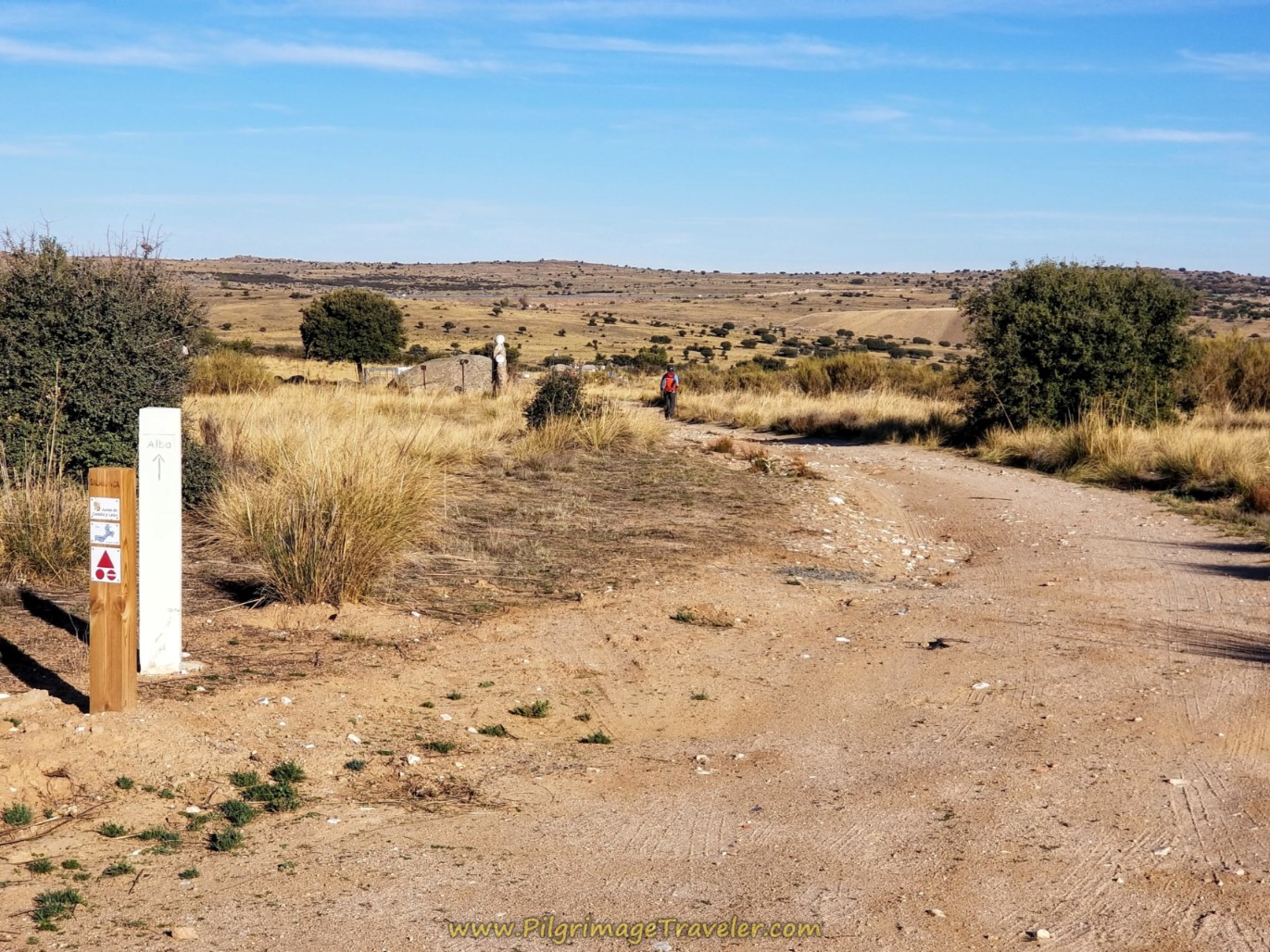 Open Countryside Ahead on Day One of the Camino Teresiano
Open Countryside Ahead on Day One of the Camino TeresianoAfter only a few meters pass through a barbed wire gate, being sure to close it after you pass through. Continue straight onward where the Ruta Teresiana walks by a waymark with both a yellow and a white arrow, just before the rare clump of trees, shown in the photo below.
I was confused when I first saw these waymarks, but of course, I chose to stay with the yellow arrow. As I have since discovered, the white arrow will lead the pilgrimage traveler only a bit off course, to see more of the medieval road that lies just ahead, before joining the Camino Teresiano once again.
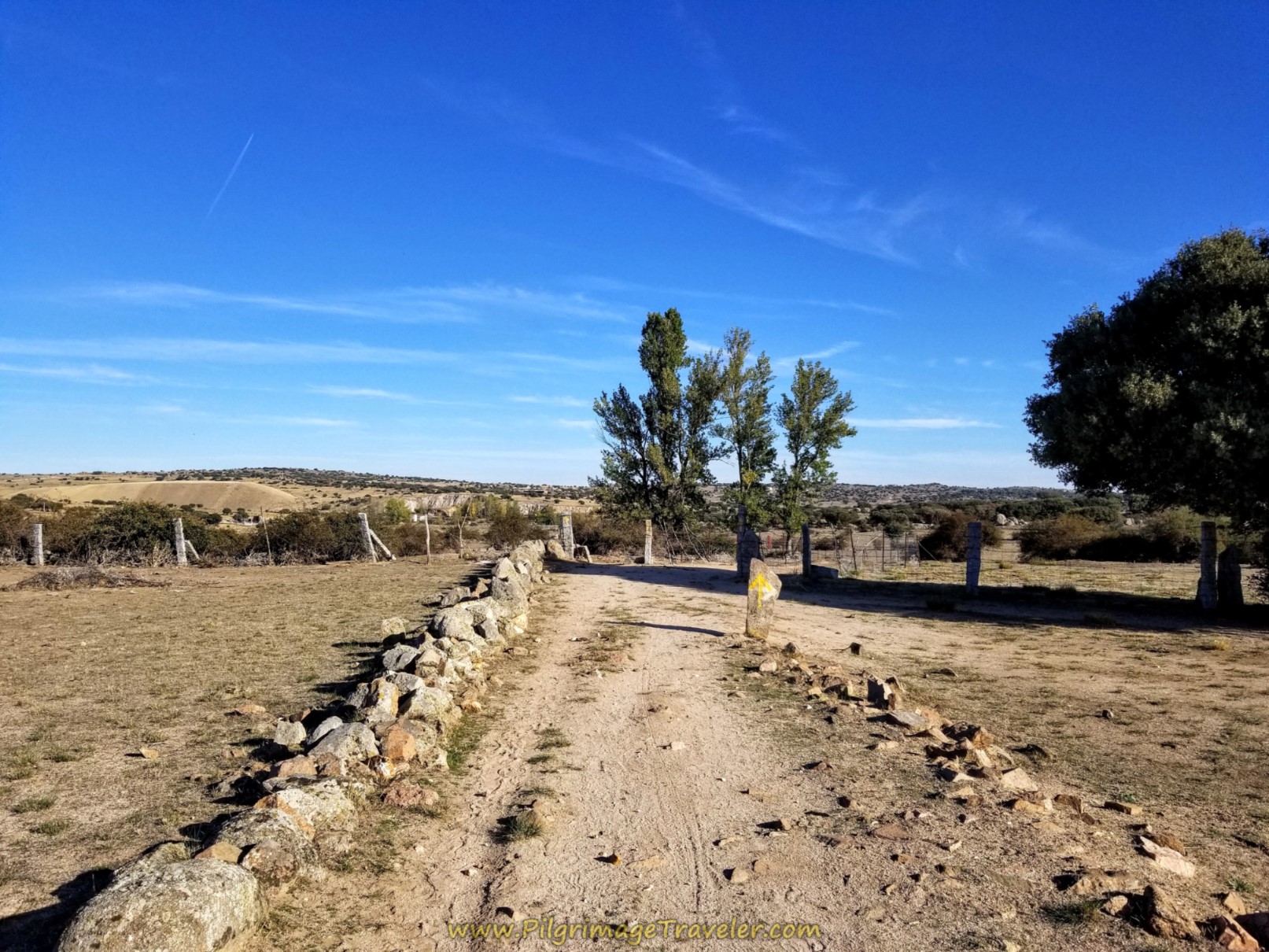 Stay With Yellow Arrow
Stay With Yellow ArrowStaying straight here, the lane becomes funneled through a tall fence line on both sides. Follow this fence line, where it comes to yet another gate, shown below, which marks the official entrance to the medieval road.
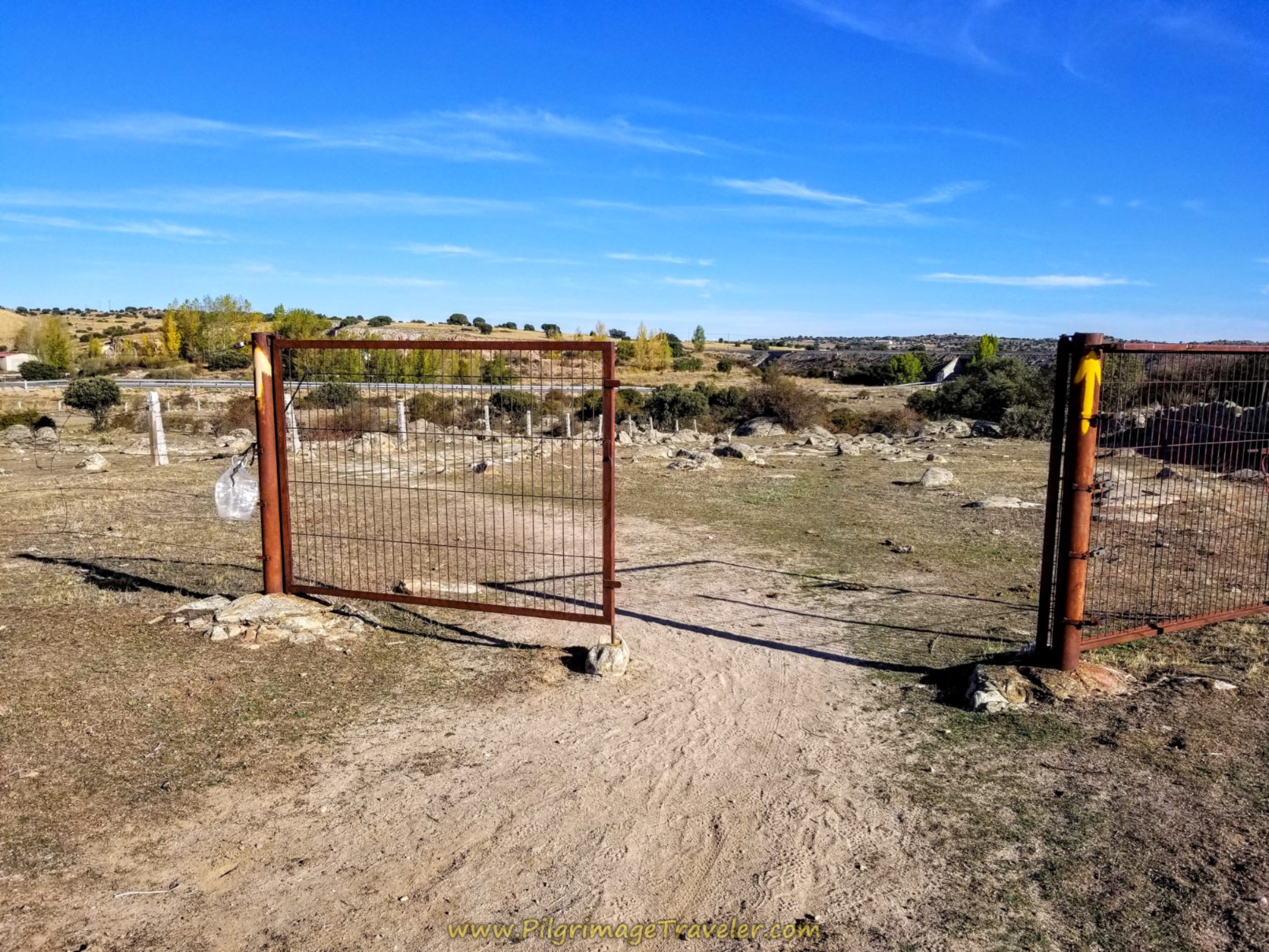 Gate to Medieval Road
Gate to Medieval RoadThe medieval road stretches a mere 250 meters, but it is still lovely to walk upon, imagining that St. Teresa and St. John of the Cross may well have trodden upon this very road.
The medieval road ends at this easy-to-miss, small medieval bridge over the Rominillas stream at the bottom of the hill, at 8.0 kilometers into the day. The stream was a mere wash when we passed through in late September.
Jump to Camino Teresiano Stages
After the bridge, walk up a short hill to join the highway, the AV-804, shown below. You will see a railway bridge to your right, but you turn left and walk upon the highway for only approximately 150 meters. Immediately turn right onto another dirt lane, shown here.
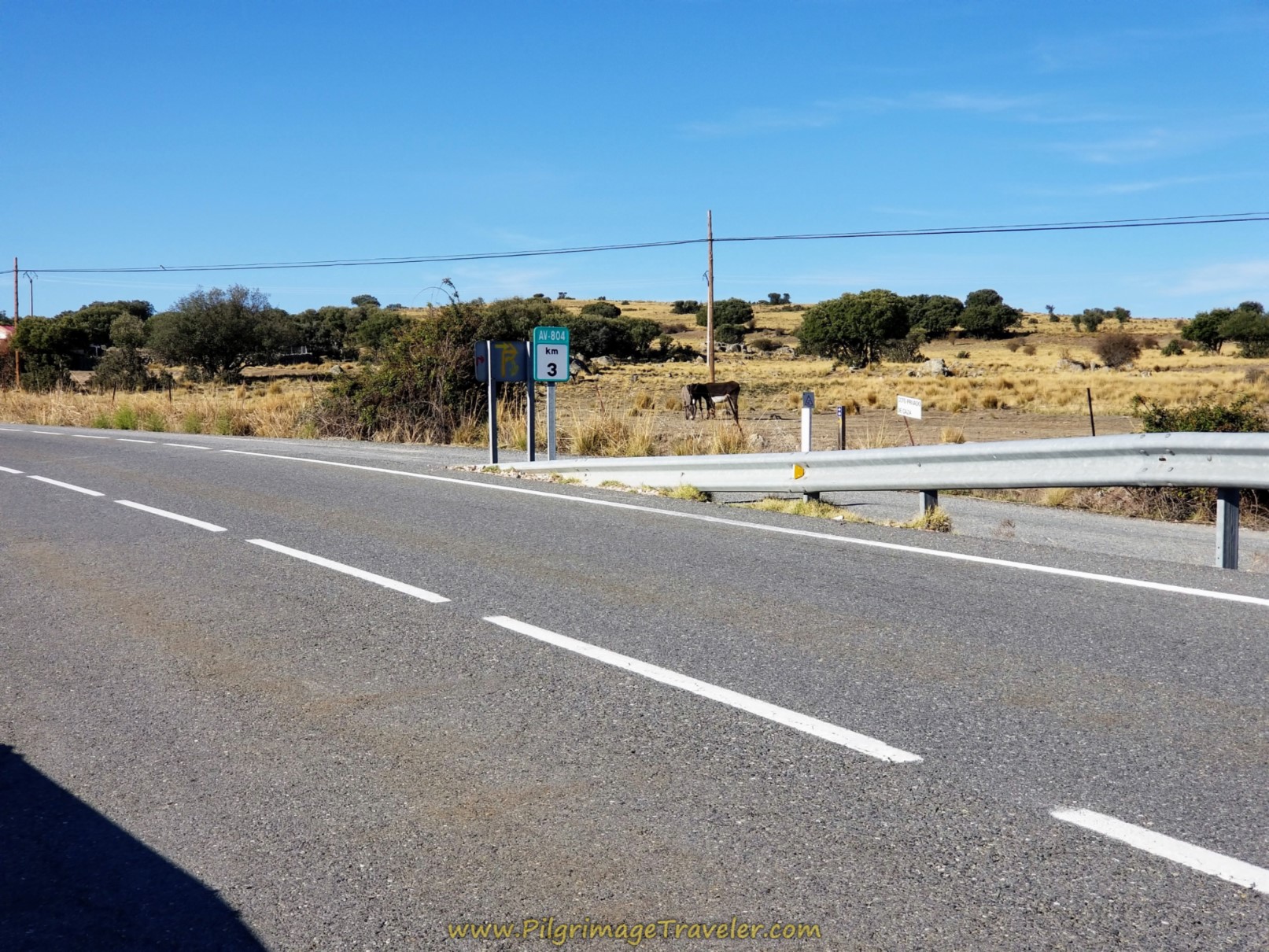 Join the AV-804
Join the AV-804You will see a signpost that lets you know the Ruta Teresiana joins with the GR 239 trail, and that Cardeñosa is 3.6 kilometers away.
In less than one hundred meters, take a left onto a wide dirt lane, and within another 250 meters, pass by the quarry that has been previously in your view. Just past the quarry, turn right and up the hill.
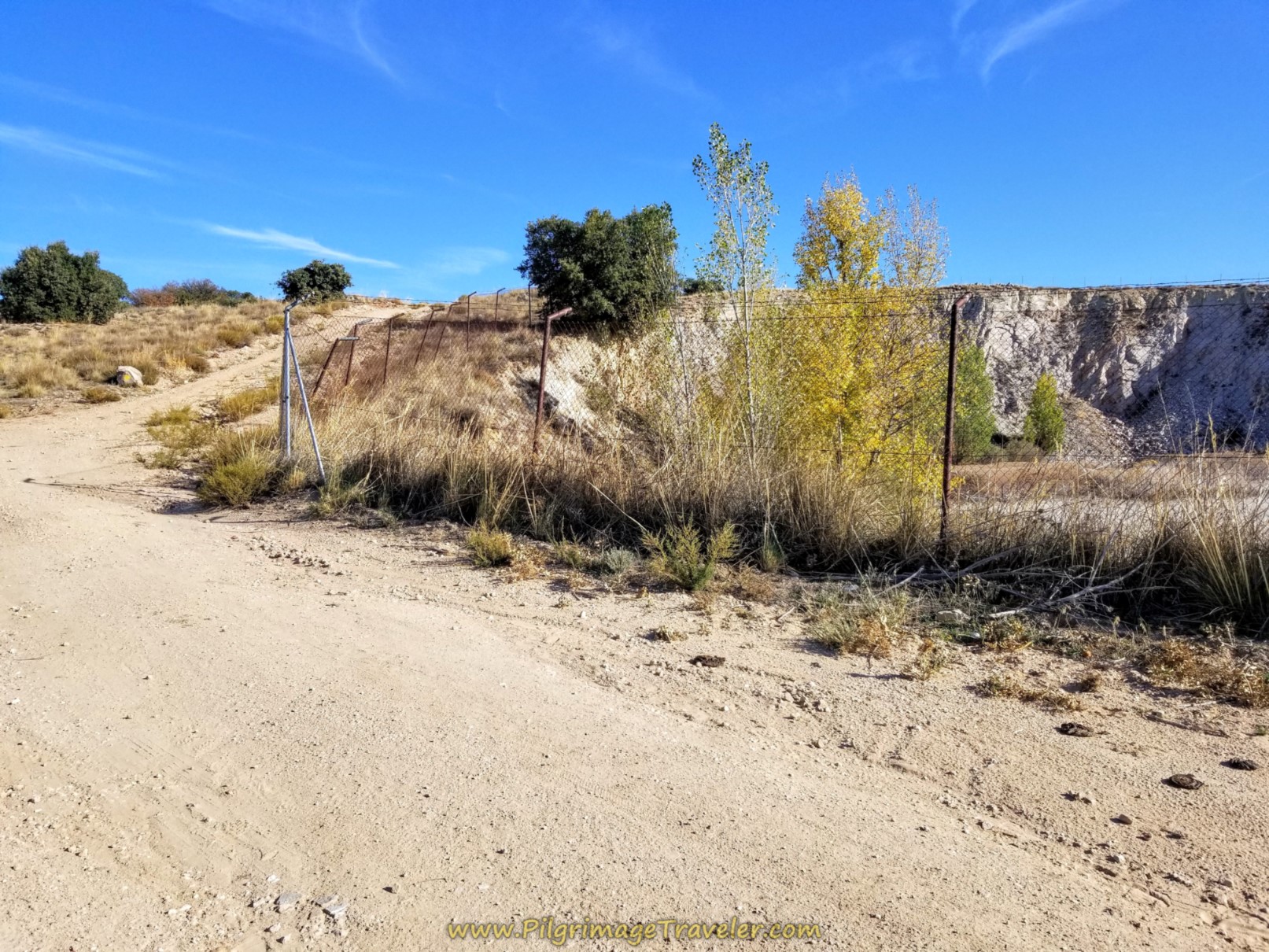 Pass a Quarry and Turn Right Up the Hill
Pass a Quarry and Turn Right Up the HillThere is the second, but brief climb ahead, on the open and shadeless road. The concrete Camino Teresiano waymarks are sufficient, supplemented with the yellow arrows on rocks, as the Camino wanders through the countryside, shown below.
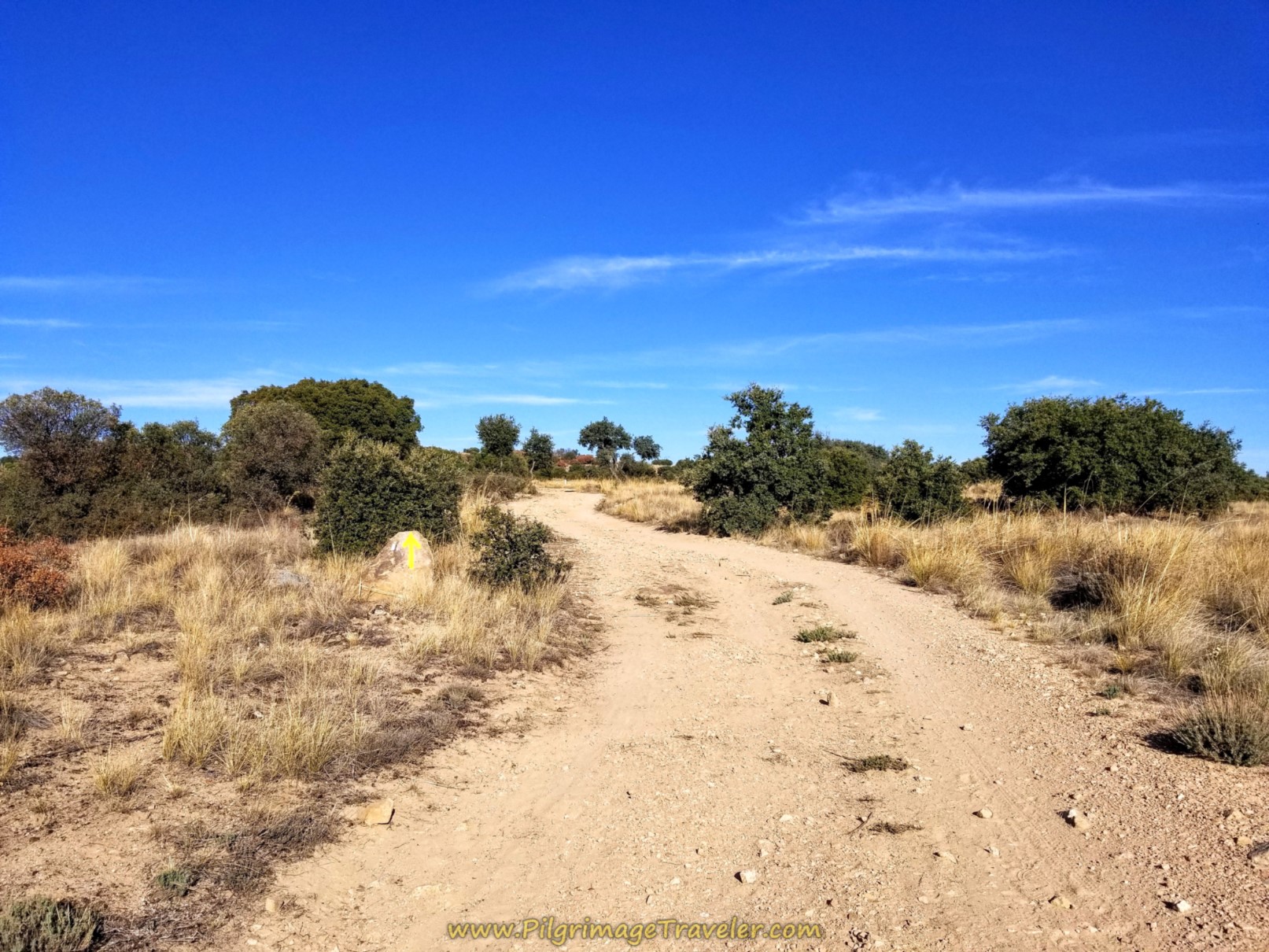 Ascend Second Elevation
Ascend Second ElevationAlong the climb, notice more vestiges of the medieval road. Call upon the ancients who have trod here and join them in the pilgrimage to Gotarrendura.
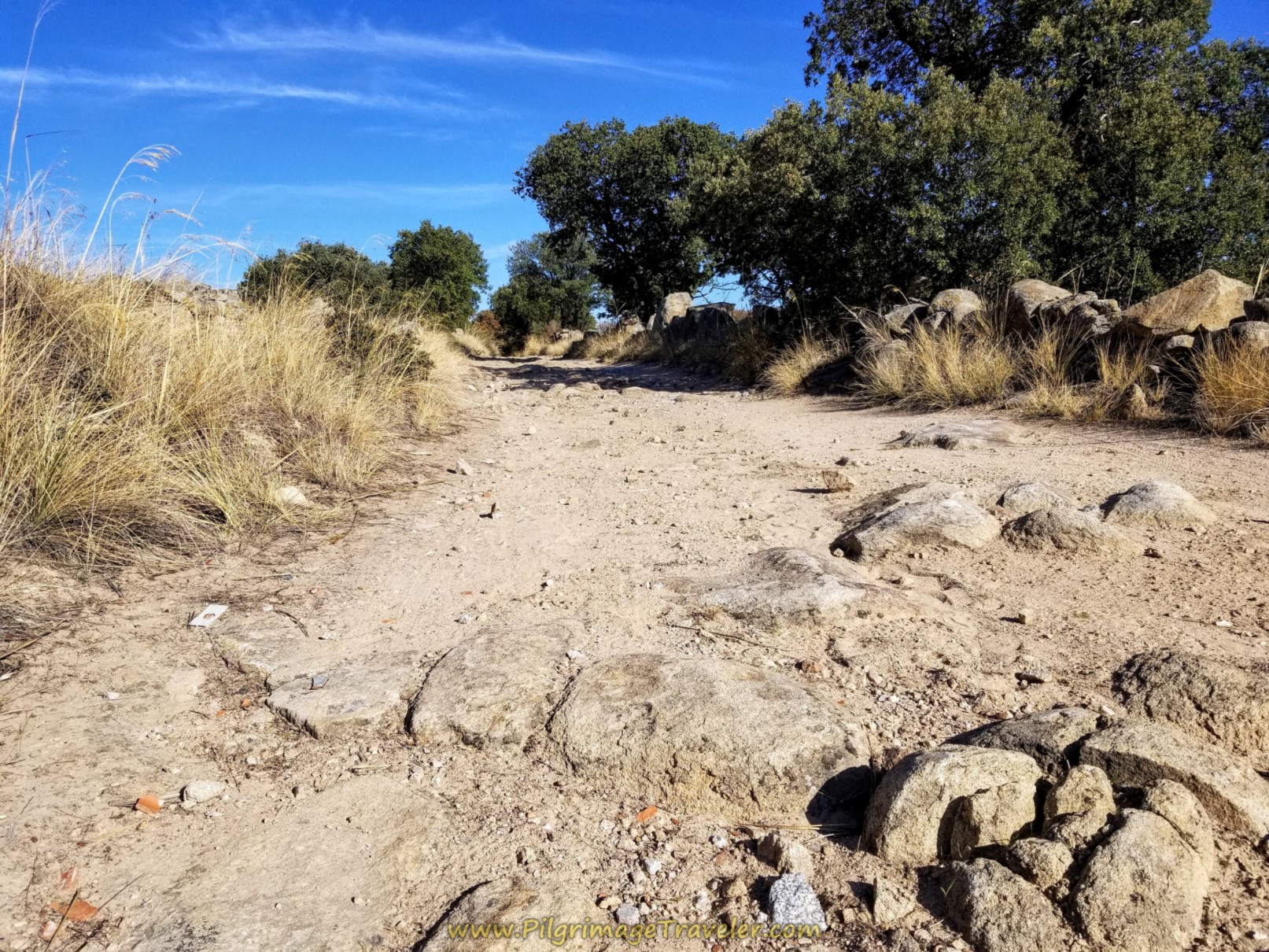 Vestiges of Continuing Ancient Road
Vestiges of Continuing Ancient RoadThe road meanders around, as you follow the waymarks. When you reach the summit of the second climb at about 9.7 kilometers into day one on the Camino Teresiano, the panorama to the East is lovely, showing what I believe is the Sierra Guadarrama mountain range. The climb is only 60 meters of elevation gain over 2.0 kilometers.
From the high point, the dirt road approaches the highway, the A-50, following more vestiges of ancient road, but instead of joining the A-50, the Camino takes a right turn to descend from it and follow along it on this road, shown below. It is about 1.5 kilometers from the turn off at the AV-804 to the right hand turn by the A-50. There is still about 2.5 km left to go to Cardeñosa.
It is only 300 meters along this frontage road, and just when you think you must climb the hill ahead, the Ruta Teresiana turns to the right, and joins another dirt lane at the telephone pole in the right side of the photo.
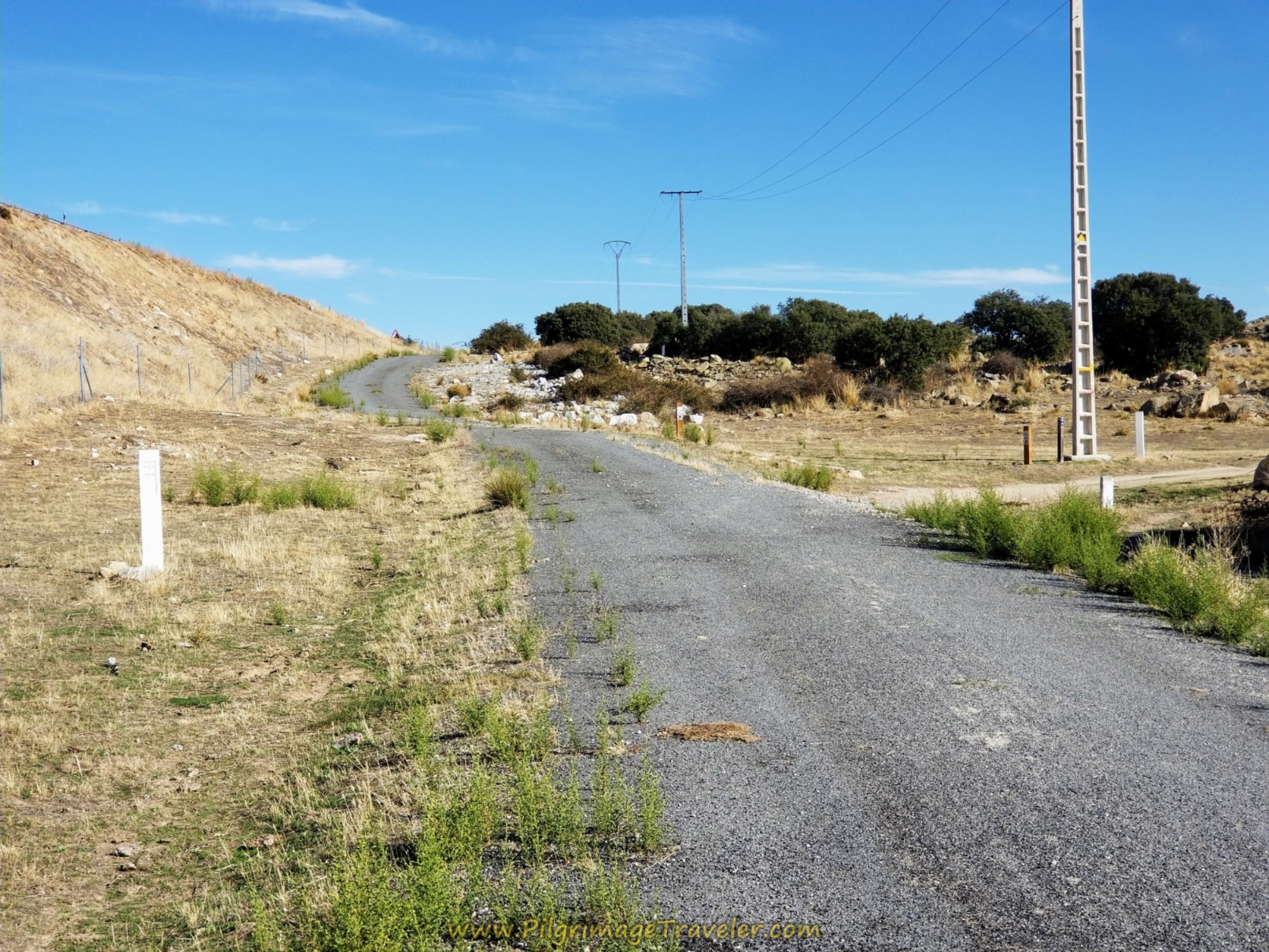 Follow the Road by the Highway
Follow the Road by the HighwayDescend on the dirt lane for a total of about 400 meters, turning right and left and right again, until you reach the bottom and turn left until this wider, more developed lane, shown below.
From here you will climb up to the prominent building shown in the photo, a utility building for the town of Cardeñosa, for the 3rd highest climb of the day. It is not that industrious a climb and is only 800 meters long, with only about a 30 meter elevation gain.
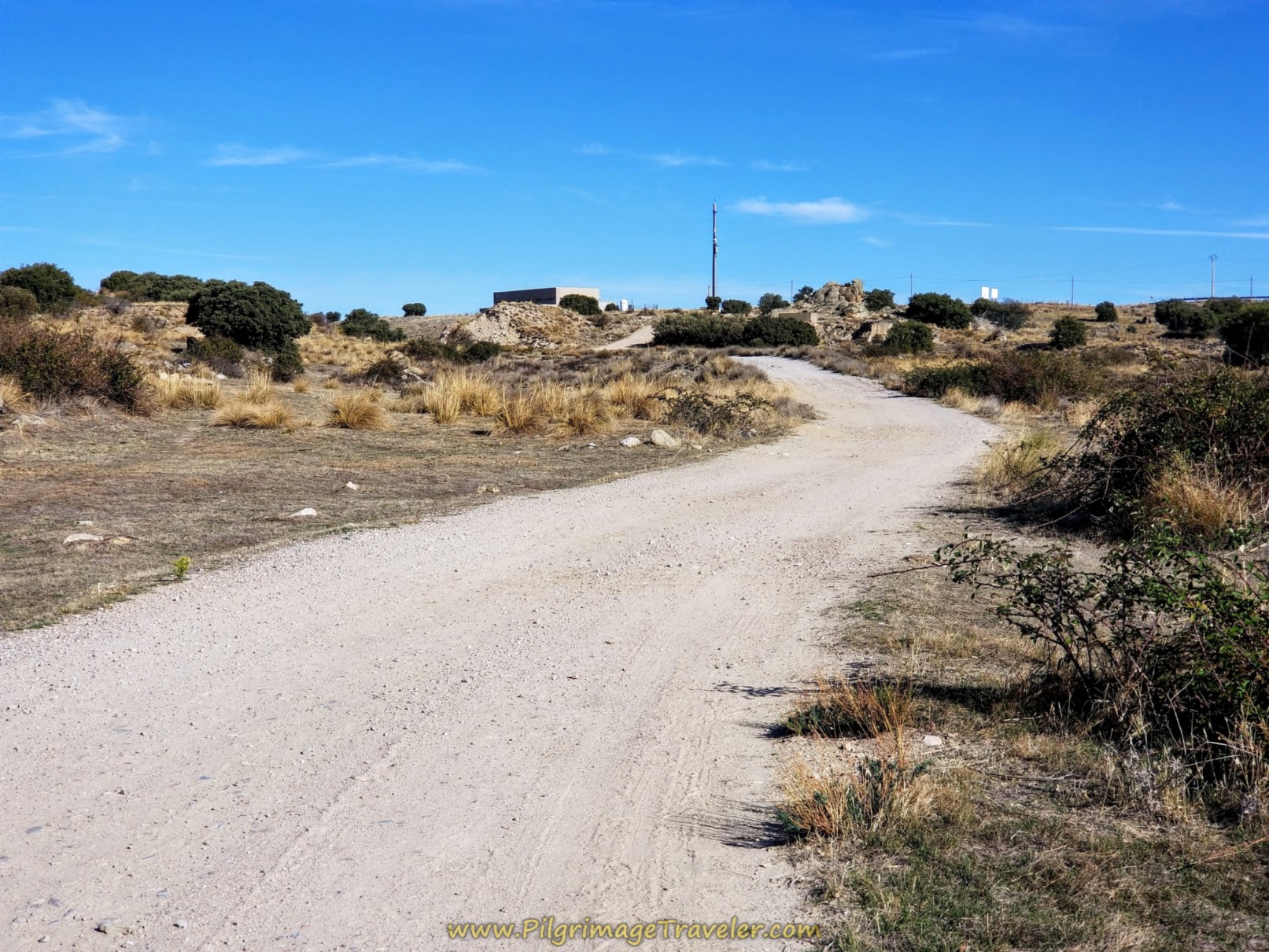 Turn Left, Uphill Onto Open Road
Turn Left, Uphill Onto Open RoadYou will be rewarded by another view, this time that of the next town of Cardeñosa, just one kilometer away now.
Descend into town, turning right, then left, until you come to this T-intersection in town. You are about 12.3 kilometers into your day one on the Camino Teresiano. There is a fountain here and at least six different waymarks at this intersection! Which way shall we go?? Ha ha!
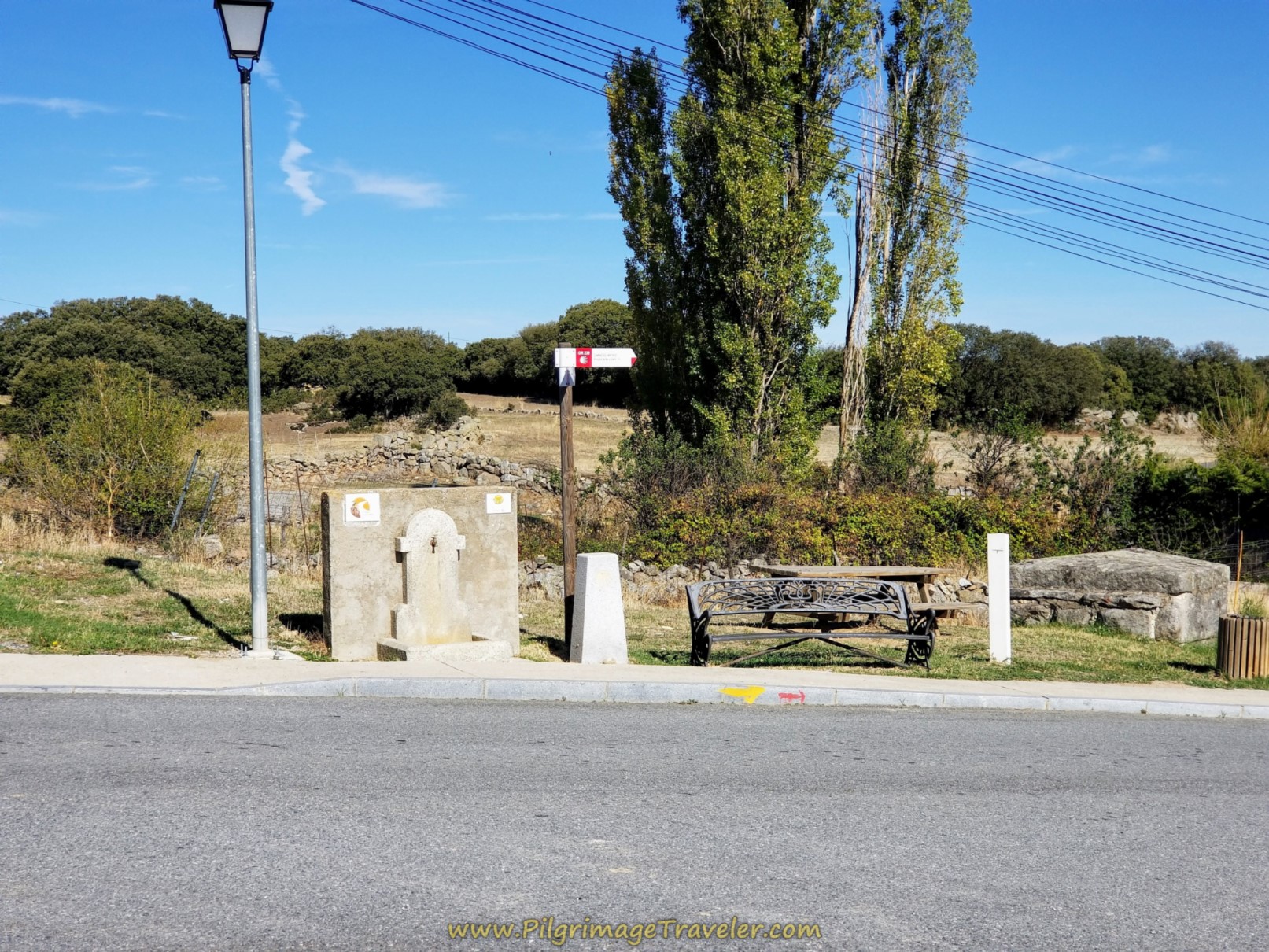 Come to T-Intersection
Come to T-IntersectionAt this T-intersection, after turning right onto the Calle del Carril, also notice the nice information board for the town, listing the sights and the services available. This is a very nice feature of the Ruta Teresiana, which you will see prior to any significant town along the way. A great amount of time, energy and resources went into creating them, just for pilgrims!
I learned to appreciate these information boards. I found them to have useful information as far as the sights were concerned, but not always accurate as far as the accommodations. Indeed, the Camino is a fluid thing, ever-changing from year to year.
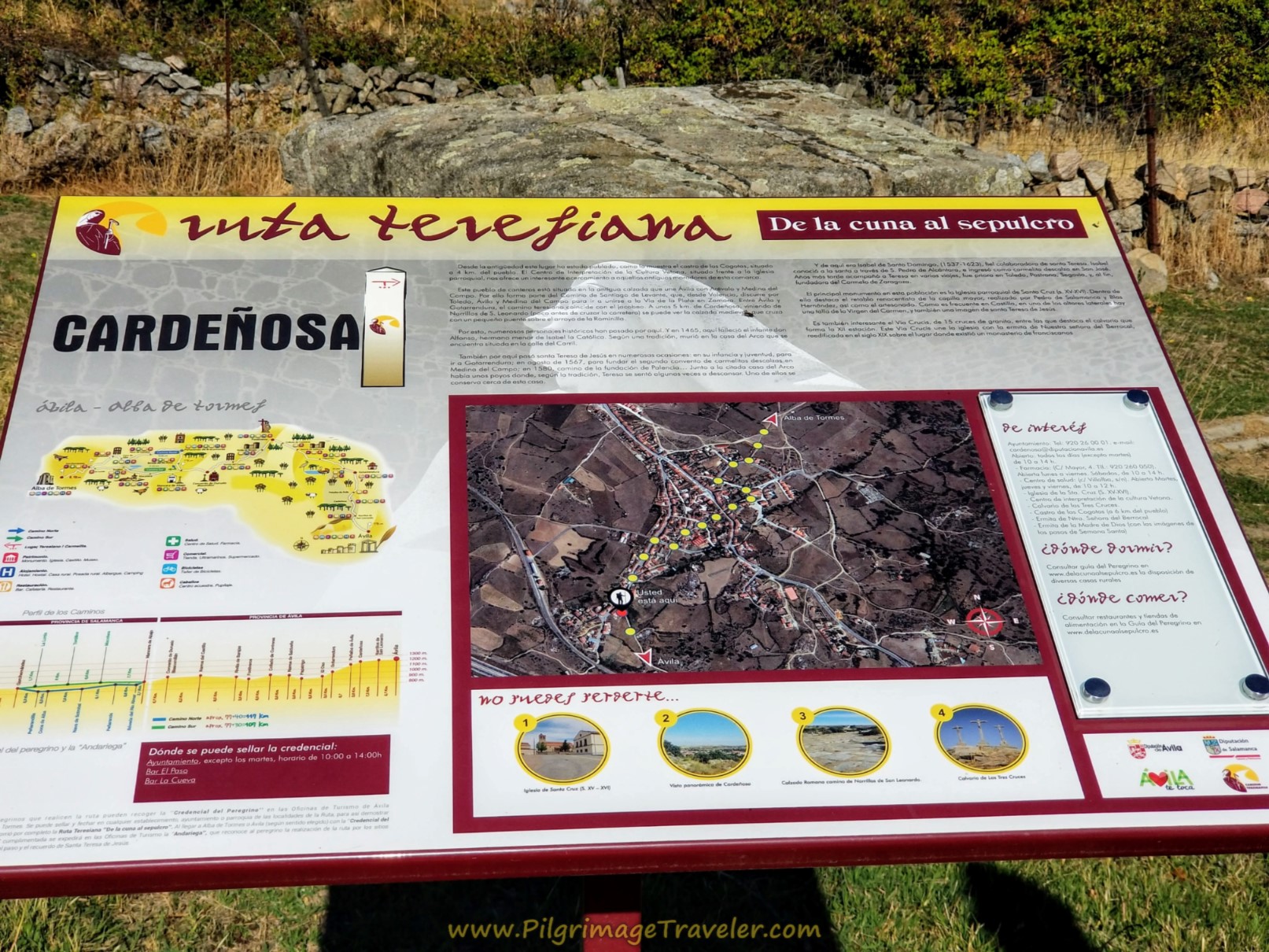 Cardeñosa Information Board on Day One, Camino Teresiano
Cardeñosa Information Board on Day One, Camino TeresianoCardeñosa is a significantly sized town, and while there is no albergue here there are six Casa Rurals, two cafés and a tienda for supplies. The accommodations are the Casa Rural El Cahorzo, Las Encinas I y II, Casa Rural de Tio Tango I and II, Amanecer Casa Rural, Las Gamelas and the El Caño del Santa. They are all in the high-end category and all are entire homes to book, requiring multiple nights stay.
Continue on in town, by the entrance cross, shown below.
After about 350 meters on the Calle del Carril, the first café, El Paso, is on your left, right across from the hard right turn shown below. This turn is easy to miss, and we almost did, despite two yellow arrows and one red on the street level and the Ruta Teresiana emblem tile on the building at eye level!
Unfortunately, when we walked by the El Paso it was closed! We were so looking forward to a break with café con leche!
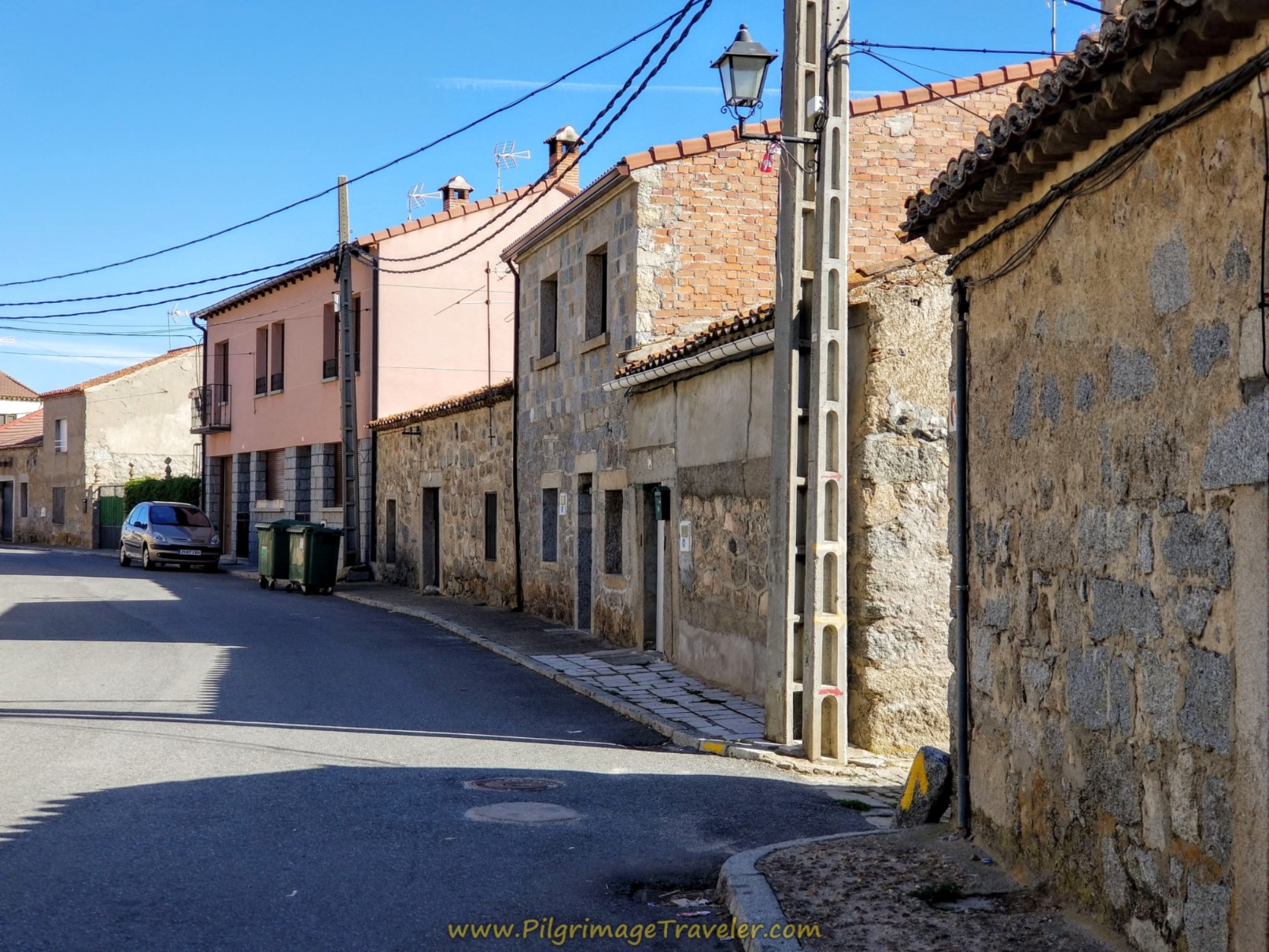 Abrupt Right Turn in Cardeñosa
Abrupt Right Turn in CardeñosaIn one short block after the abrupt turn, the Camino Teresiano turns left and then an immediate right at a Y-intersection, going straight on in about 90 meters more to cross the AV-804, just before coming to this school, below.
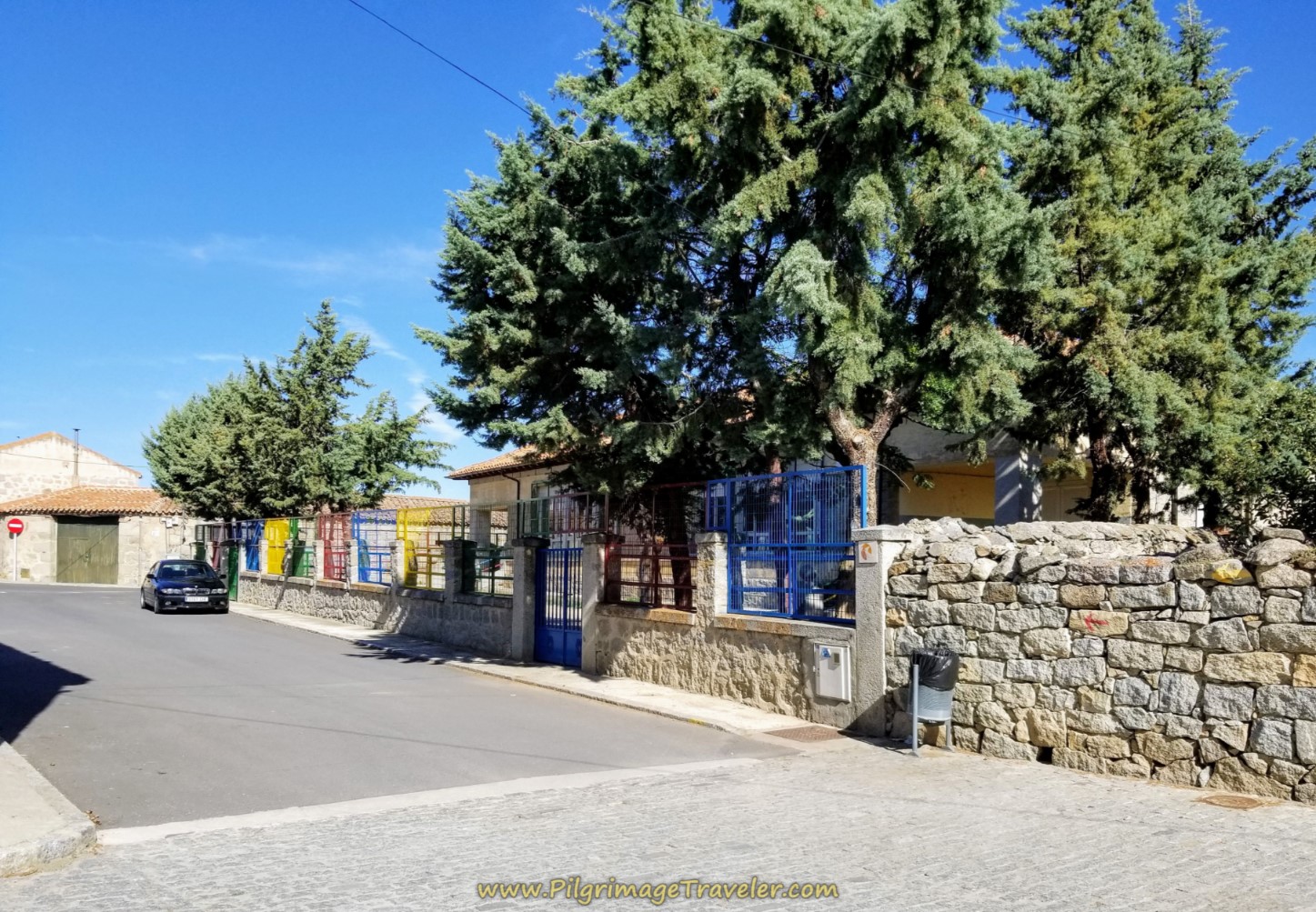 Turn Left at School
Turn Left at SchoolAt this school intersection, you can turn left to continue, or turn right to see the town church, which we did. We decided since the first café was closed, we would look for another one before leaving town, as they are often near the town church.
We were also happy to see the church was open, with a surprisingly nice altar. We were lucky to be there when the church was being cleaned.
We inquired of one of the locals in the church if there was a café nearby. We were pointed in the direction of the Taberna del Carpio, south of the church about 250 meters, and along the main road, the AV-804 (see the interactive map). We set off to this tavern, and what? as the sign on the door said, it was also closed for two weeks, and so sorry for the inconvenience!
We sadly returned to the church, to sit in its yard and have our break there, eating our meager rations from our pack. From Cardeñosa to Gotarrendura, there is nothing, so any chance for a coffee break had been officially ended at this moment. And so it is.
Then, out of nowhere came the familiar blare of a horn. Could it be the bread truck announcing its arrival in the center of town? Rich jumped up and ran to the sound of the horn to buy some bread.
Several minutes later he returned with a grin on his face. It was not the bread truck, however, it was a food vendor instead. He had purchased a wedge of delicious hard cheese from the region, called Manchego, and some fabulous tasting Spanish olives! It was wonderful having these treats. The Camino provides!
After our nice break we went back to the school to continue on the Ruta Teresiana, turning right to walk around the side of the school. After a bit more than 100 meters, we turned left, leaving town via a dirt lane. In a few meters more, another left turn brings you to this lovely Camino de Santiago sculpture, after about 13.2 kilometers into day one. I always love to see these sorts of things, and I strongly feel the support from the community.
Jump to Camino Teresiano Stages
Also at this juncture, there is a picnic area and an antique apparatus to hold a horse to be shod. It would have also been an appropriate place to have a picnic, halfway into day one on the Camino Teresiano, if you are well-supplied.
You turn leftt at the sculpture, followed by an immediate right to continue onward. After about 150 meters, a left turn leads you onto a long lane with more interesting features. There are mighty oak trees along the Way here, and the road is lined with stone walls. At first I thought these were olive trees, but on further examination, there were acorns on them.
I have since discovered that these evergreen oaks, called carrasca or chaparra, in Spanish, are the national trees of Spain! The acorns of this tree are fed to the pigs, creating a very special cured ham, known as "pata negra” (black-legged ham). To see the source of this information, and learn more about this fascinating tree, click here.
After 1/2 kilometer more, the Ruta Teresiana drops down to cross this arroyo.
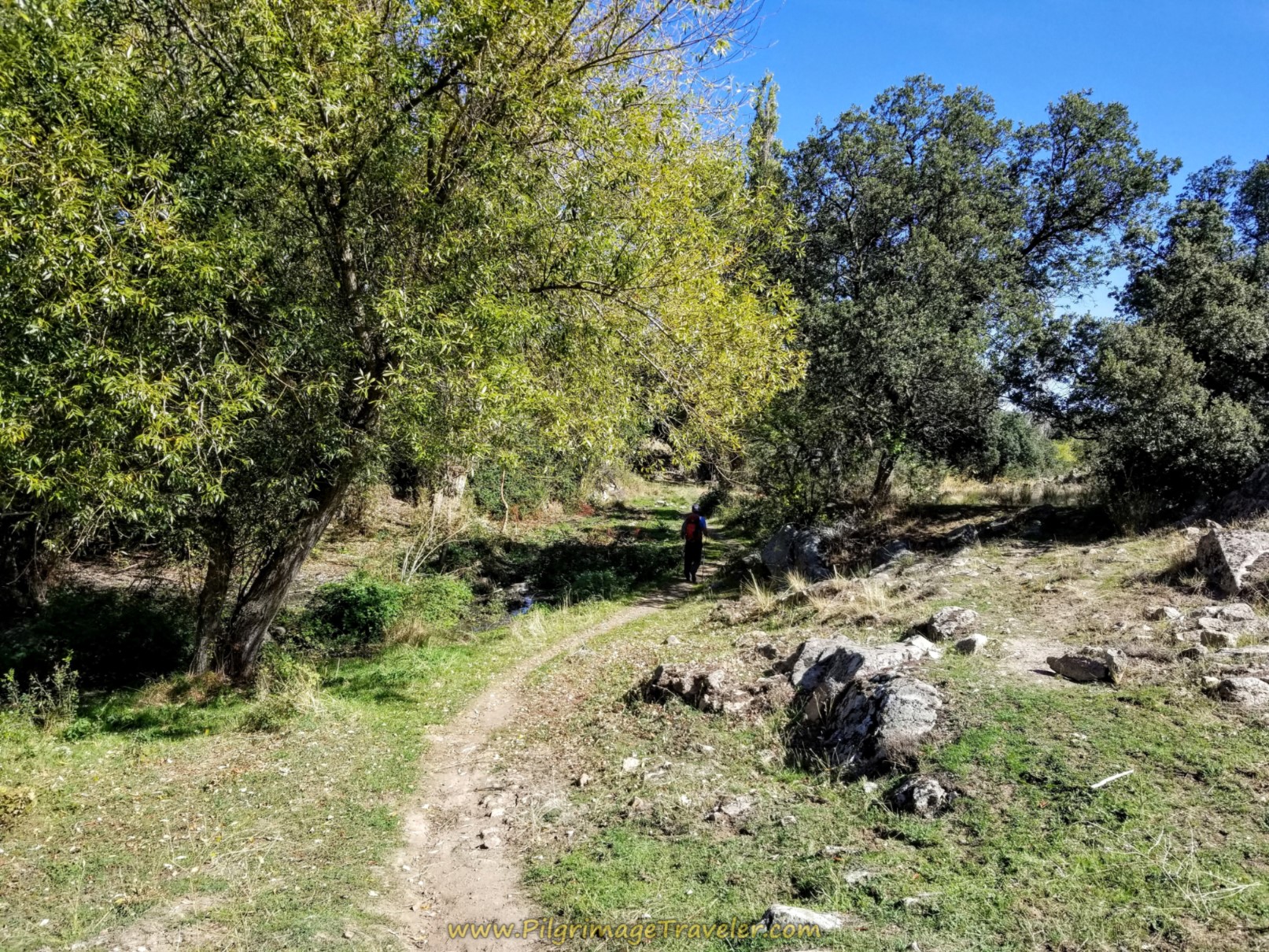 Cross Arroyo Cardiel
Cross Arroyo CardielOf course, there is a climb up from the arroyo on the other side, but this is pleasant one, through the old oaks and on remnants of the medieval road. Again, breathe in the roads on which the experts in the matter of the Spirit have trod.
Unfortunately, the shade and the medieval road are short-lived and soon give way to a dirt path and open road.
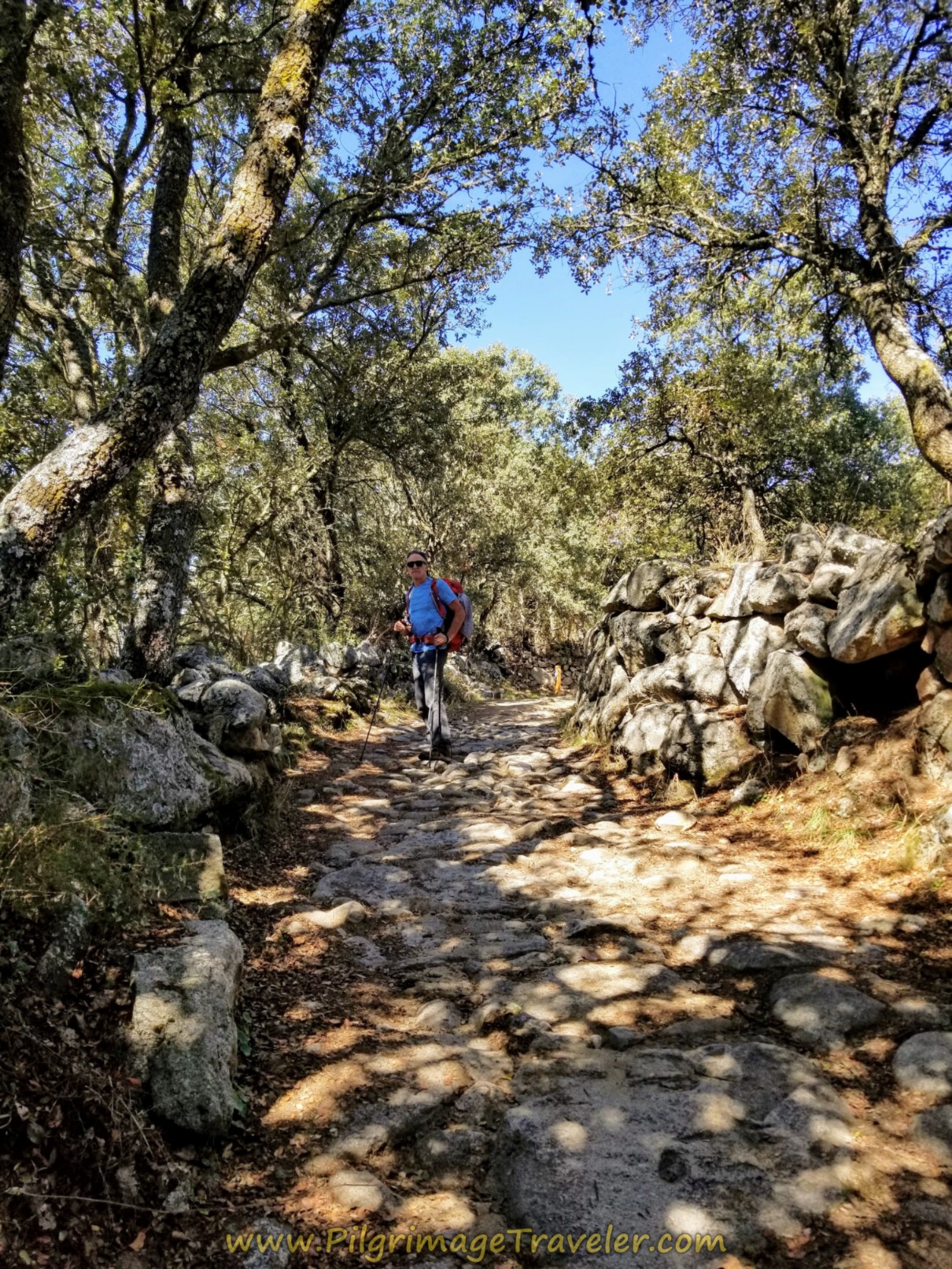 Ancient Road to Peñalba de Ávila
Ancient Road to Peñalba de Ávila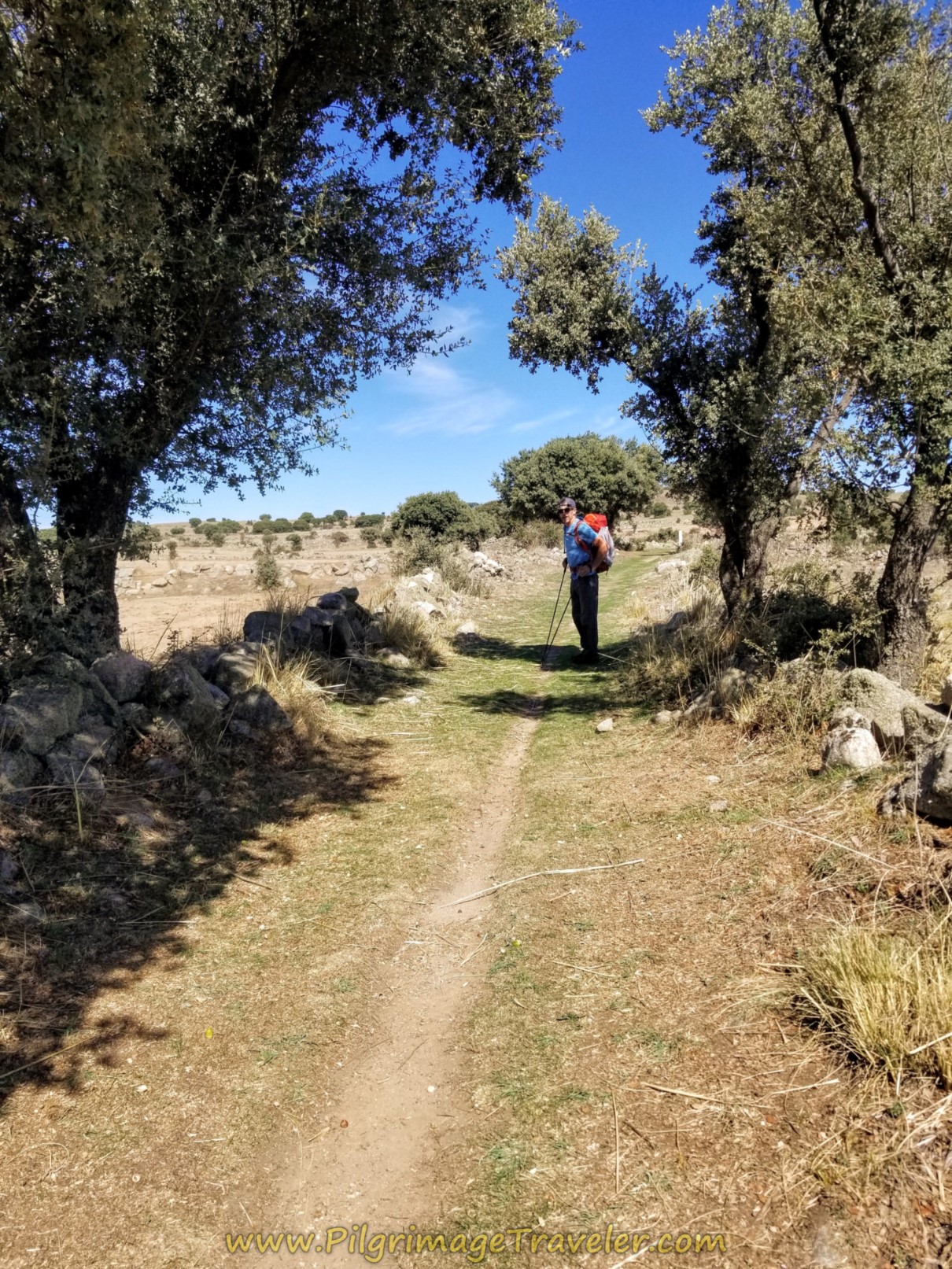 Continuing on the Wall-Lined Lane
Continuing on the Wall-Lined LaneThe mild upward climb of about 50 meters over the one kilometer that it lasts, becomes quite open and the lane grassed over, as shown below.
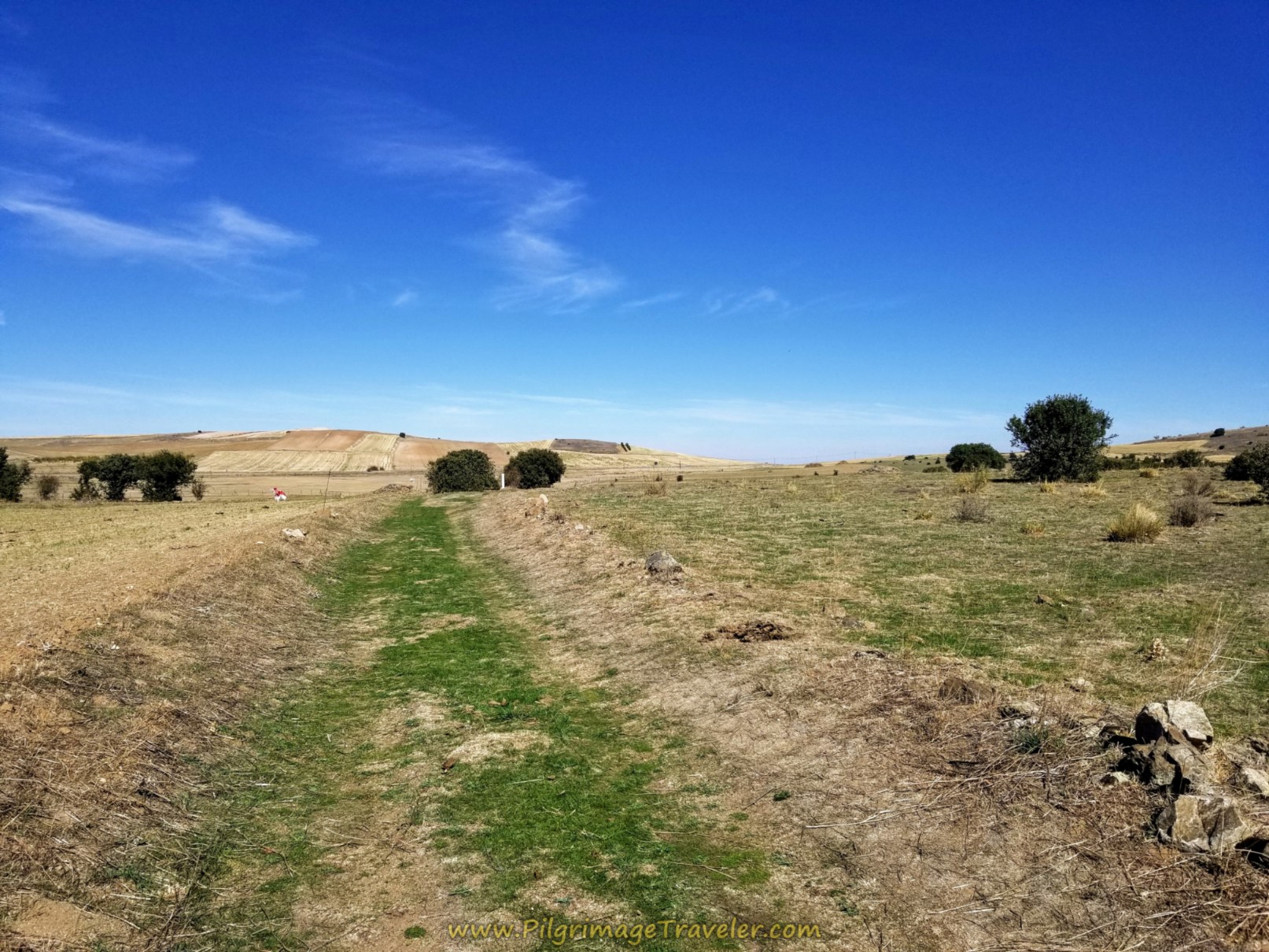 Open Road Ahead
Open Road AheadAs you approach the final summit, the Way approaches the AV-804 on your left, once again. Suddenly a view opens up and that is Peñalba de Ávila ahead. The town is only 800 meters from here.
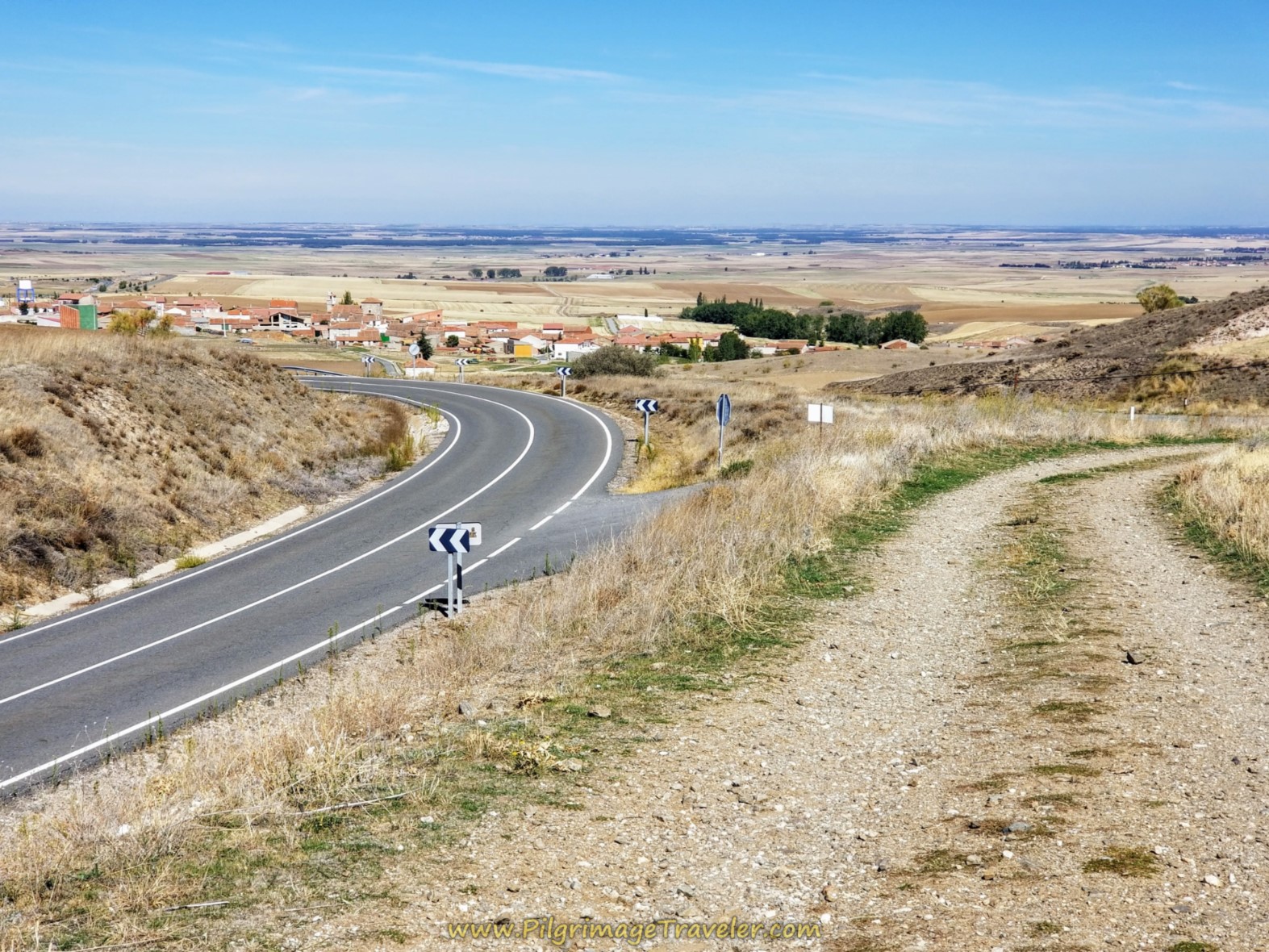 Final Summit of Day One on the Camino Teresiano
Final Summit of Day One on the Camino TeresianoAs you descend the final 800 meters on this country lane, the quaint Ermita del Santísimo Cristo de Santa Teresa hermitage can be seen just ahead.
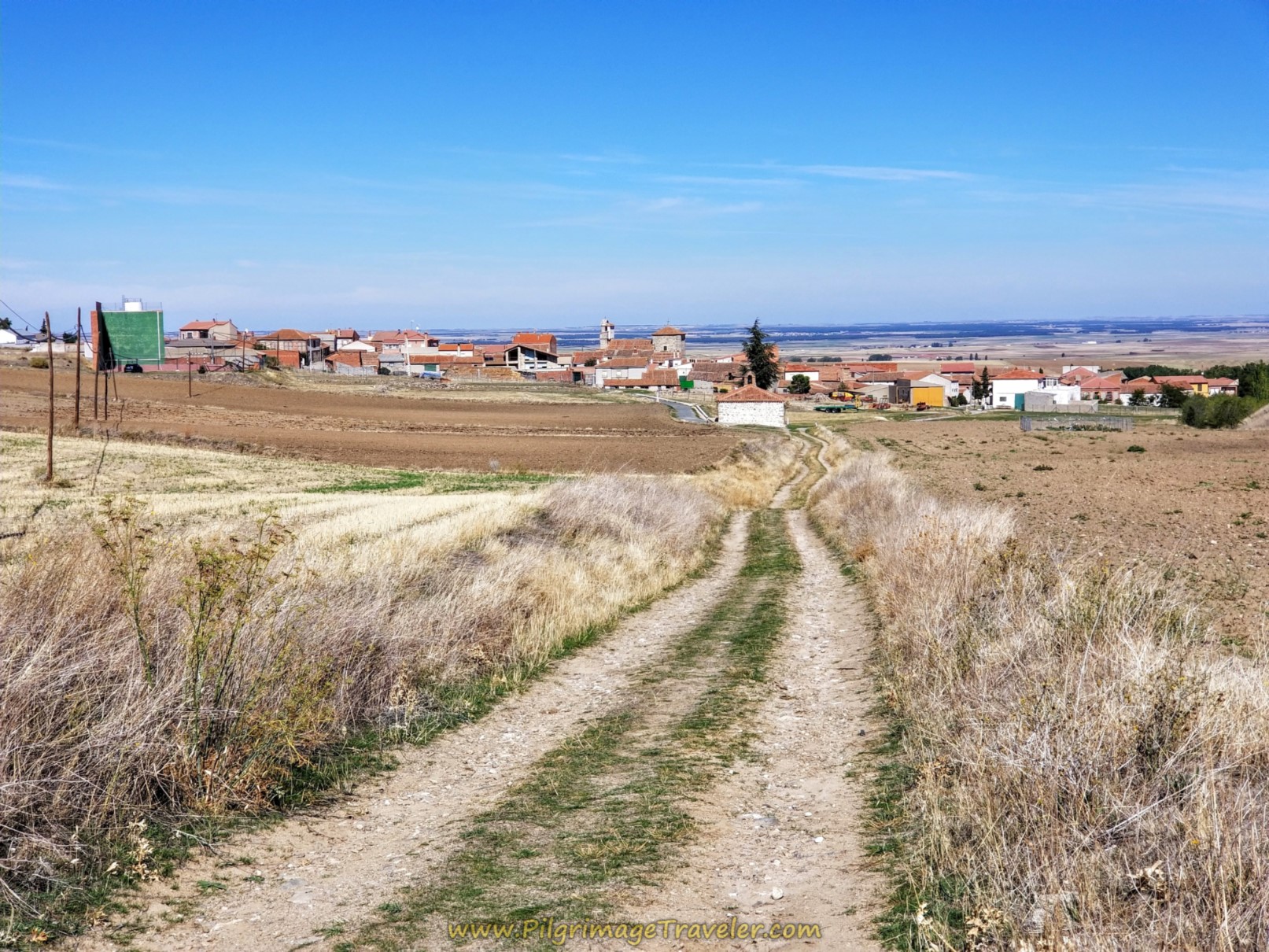 Peñalba de Ávila and the Ermita Ahead
Peñalba de Ávila and the Ermita AheadWe paused here to feel the peace and energy of the hermitage, but unfortunately, it was closed. There are three crosses in front to add to the reflective spirit.
At approximately 16.4 kilometers into your Camino Teresiano on day one, enter the town proper of Peñalba de Ávila. At this Y-intersection, the Way goes right, but you can go left for a very short diversion to see the town church. We did so, but it was closed and unimpressive, at least from the outside.
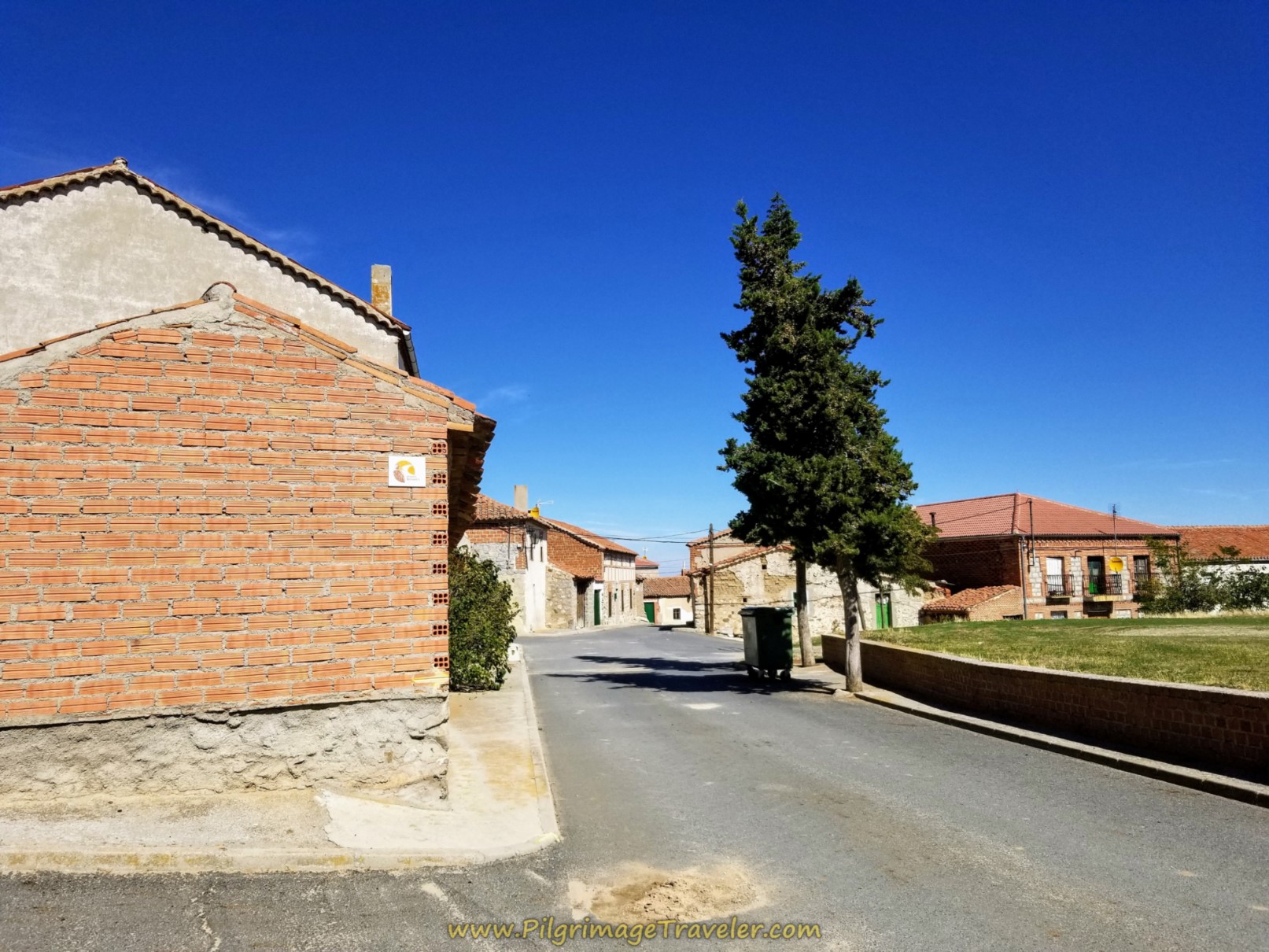 Walking Through Peñalba de Ávila
Walking Through Peñalba de ÁvilaAs stated earlier, there are no services in this very small town.
100 meters from the Y-intersection, turn right. There may be a bar on this street, according to the Teresiano website, but we did not see one, and certainly it wasn't open when we walked by. Do not count on it.
In just over 250 meters, you are through town, and come to this Y-intersection, shown below. You stay left to leave town on another gravel lane. It is approximately another 6.1 kilometers from here to Gotarrendura, to complete this stage.
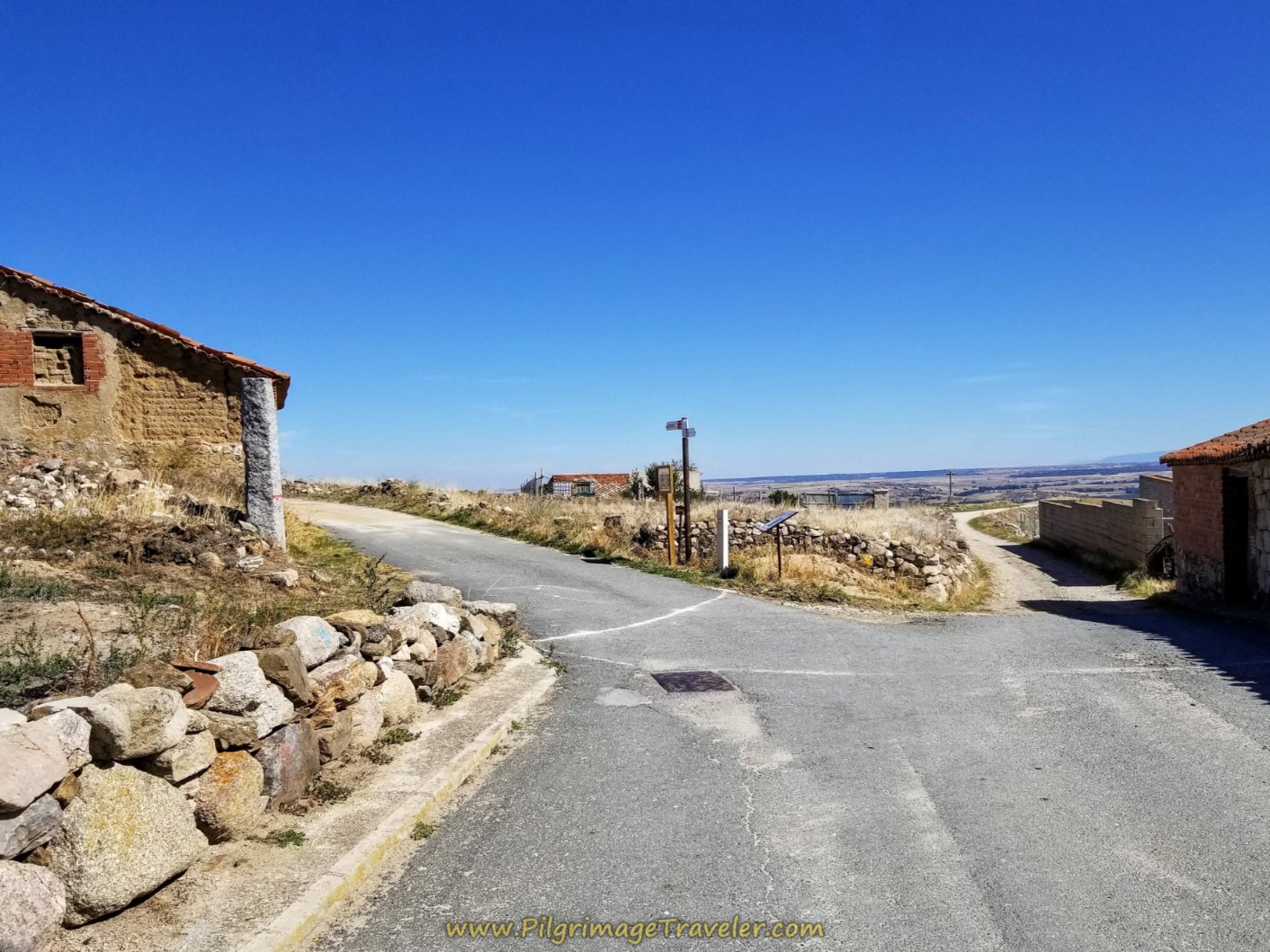 Left Turn to Leave Town
Left Turn to Leave TownJump to Camino Teresiano Stages
The countryside ahead is open and expansive, as you can see, on this central high plateau of Spain. It can get very hot here, and even walking in late September, we were quite hot! Make sure you have plenty of water for this six kilometer section.
After 350 meters, on the open road, come to this first intersection with a cross, and stay to the right in a more northeasterly direction.
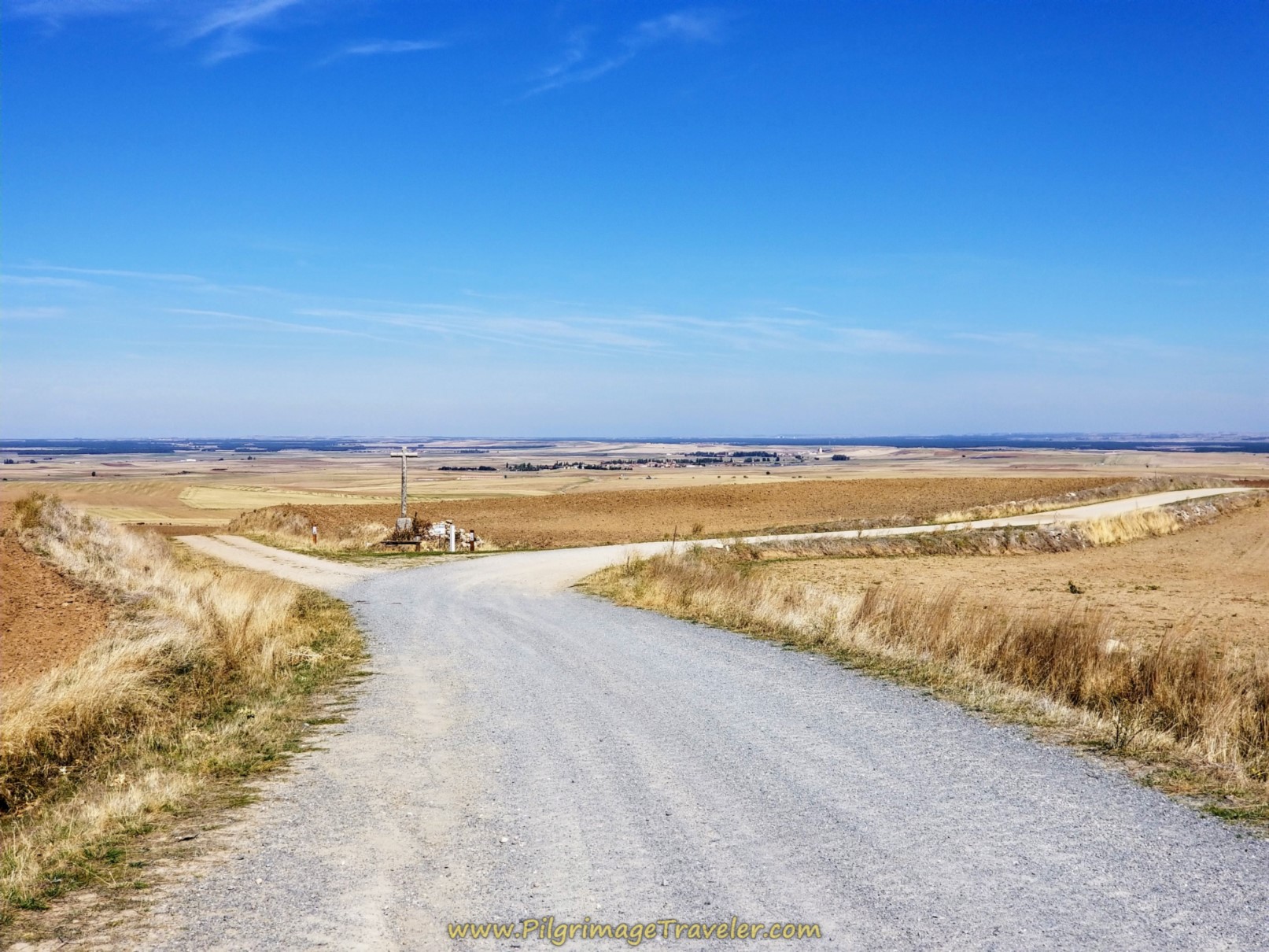 Open Road to Gotarrendura
Open Road to GotarrenduraIn another 900 meters, approximately, come to yet another Y-intersection, with a cross, and this time, stay to the left.
Continuing on the long descent towards Gotarrendura, soon a tower-like structure comes into view, seen to the right of the photo below.
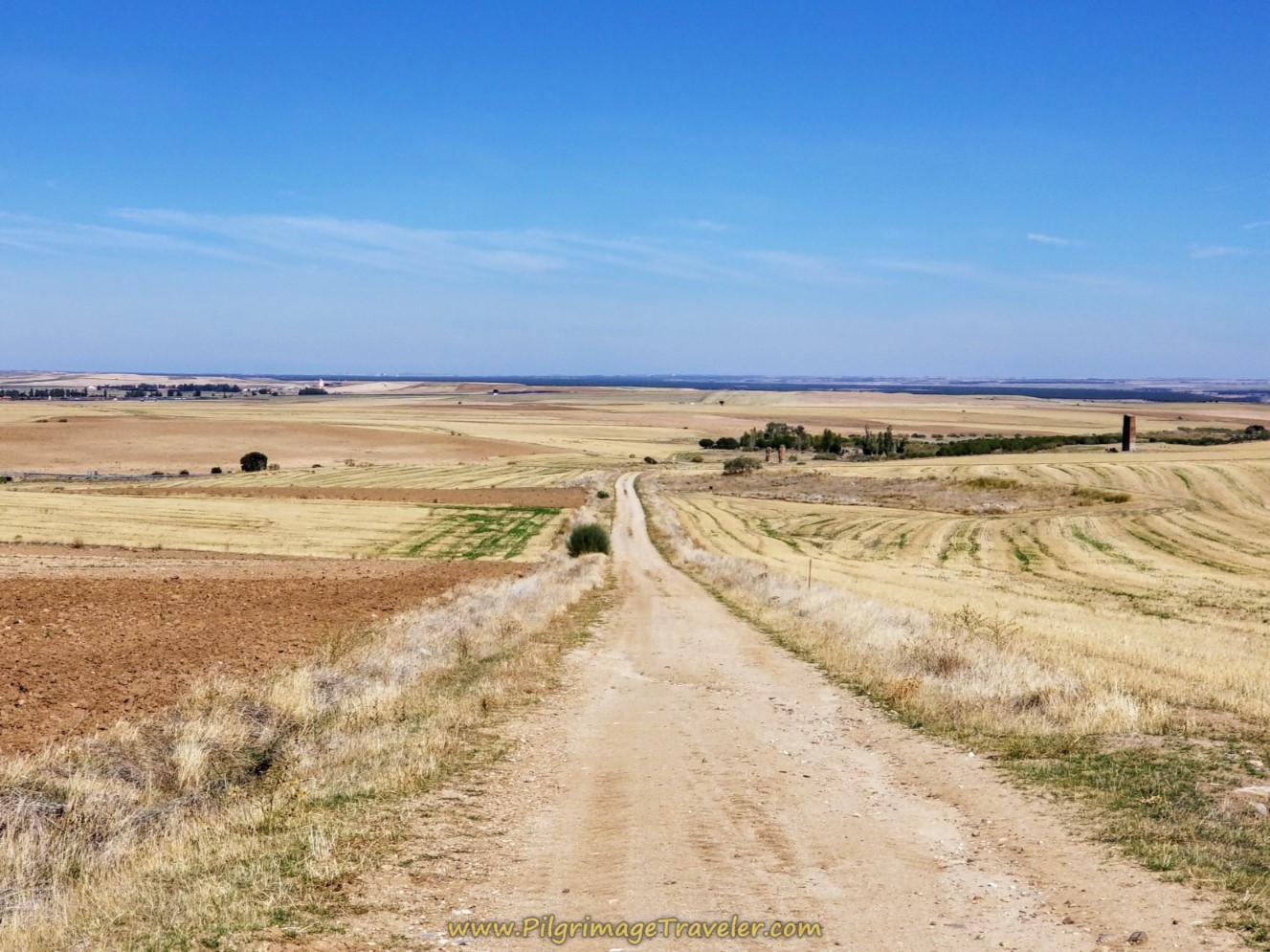 Ruins in the Distance
Ruins in the DistanceIf you look closely at the above photo, you will also see these ruined columns, shown closer below. I never did discover what these structures had been, but they did provide some variety in the view, and evidence that many civilizations, long gone, had prospered in this high plateau.
After 1.75 kilometers from the last cross at the intersection, come to this intersection where the Camino Teresiano on day one, crosses the AV-P-103. The road across this highway is now called the Camino de los Torrejones, or essentially the Towers Road. Appropriate nomenclature, I'd say.
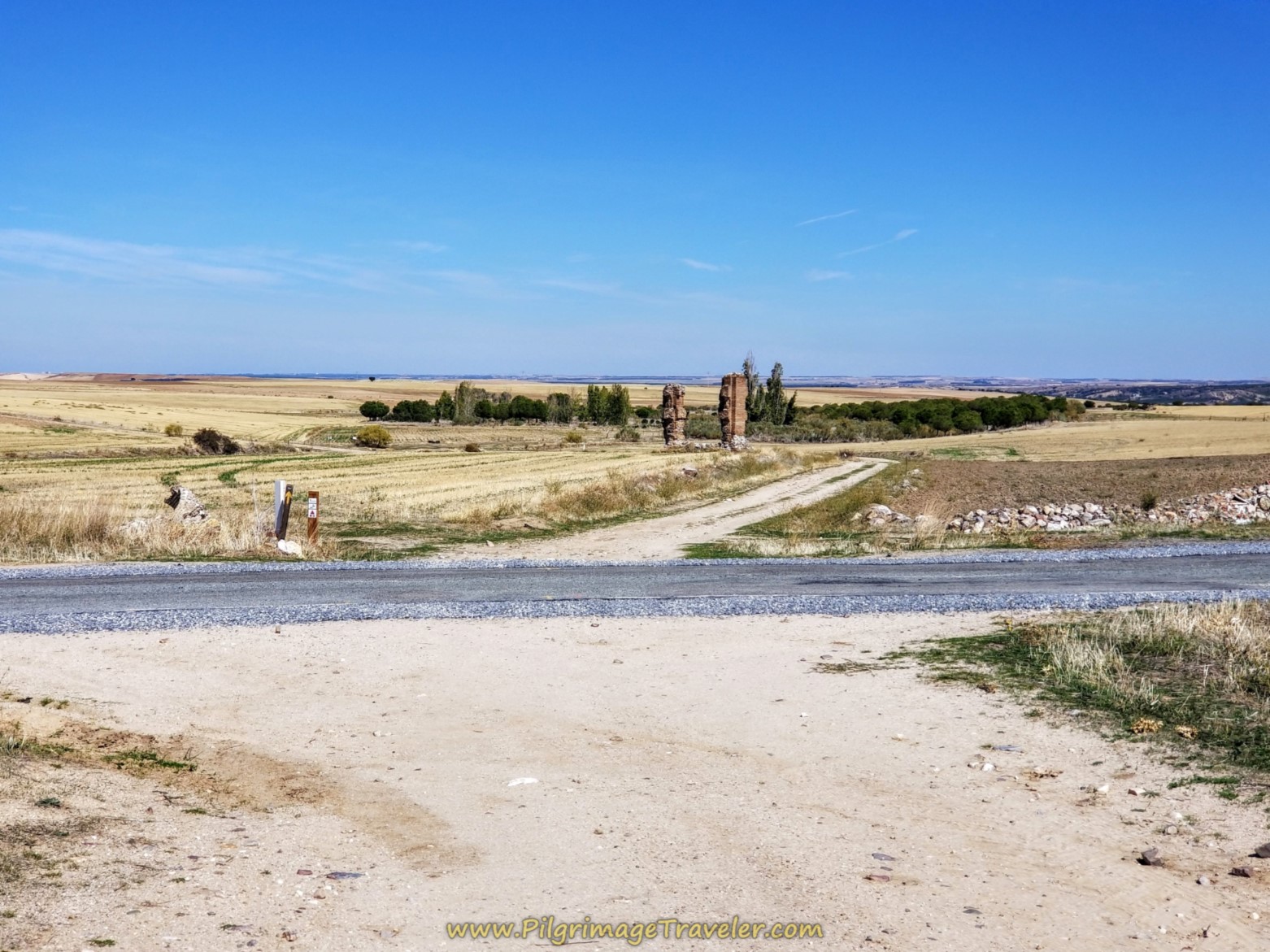 Cross the AV-P-103
Cross the AV-P-103After walking by the above ruined columns, the road takes a bend to the left and towards a more northwesterly direction. Cross an arroyo, and stay right at the upcoming Y-intersection, continuing on the long, open and dry lane.
The photo taken below shows our destination, Gotarrendura ahead. Yet it is still 1.85 kilometers away from here. We learned quickly on this Camino that the distances were always farther away than they appeared!
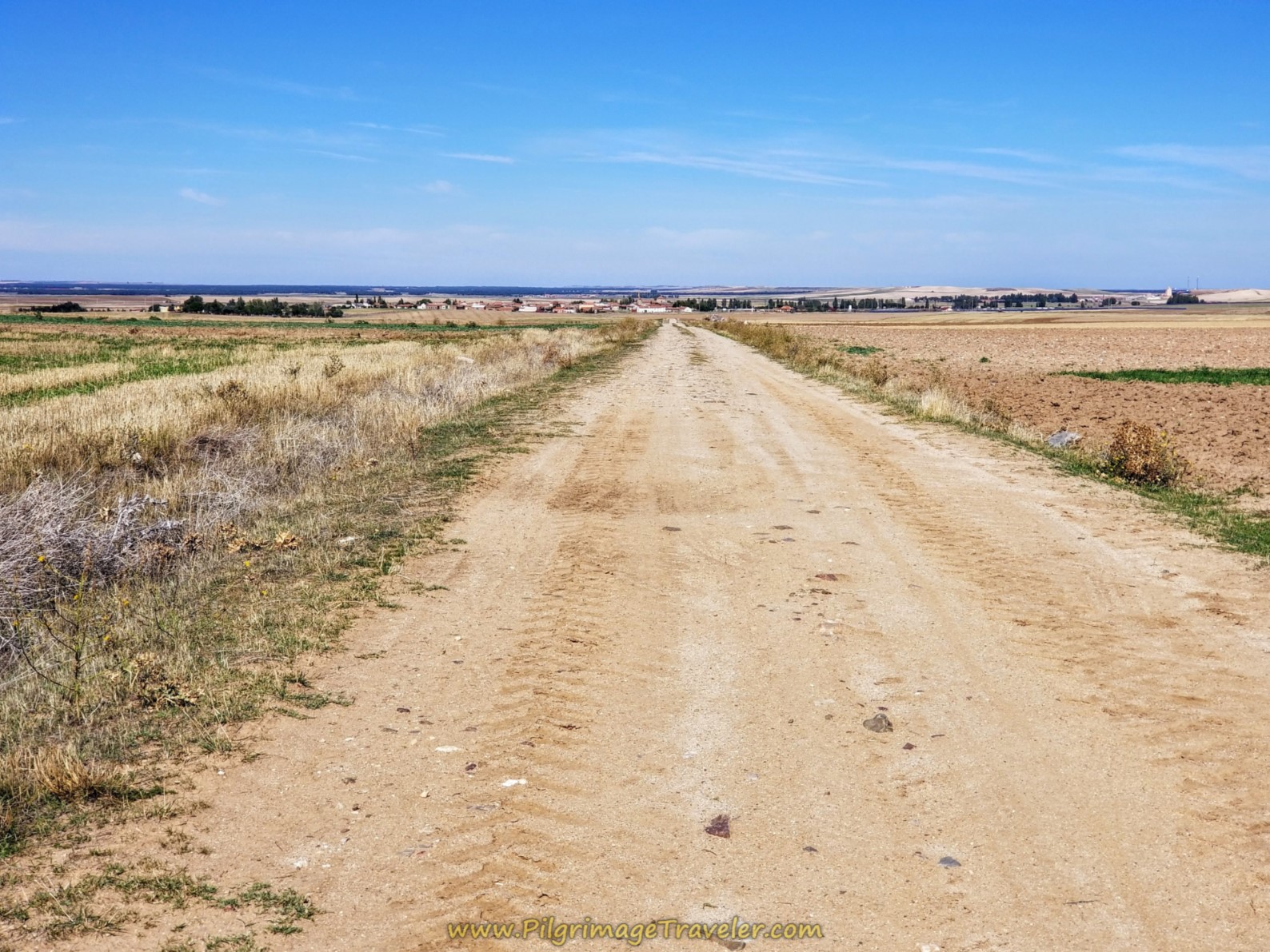 Gotarrendura Visible Ahead
Gotarrendura Visible AheadContinuing onward, a tractor passed us on the road as we entered town, a common sight as we were to learn, in this part of Spain.
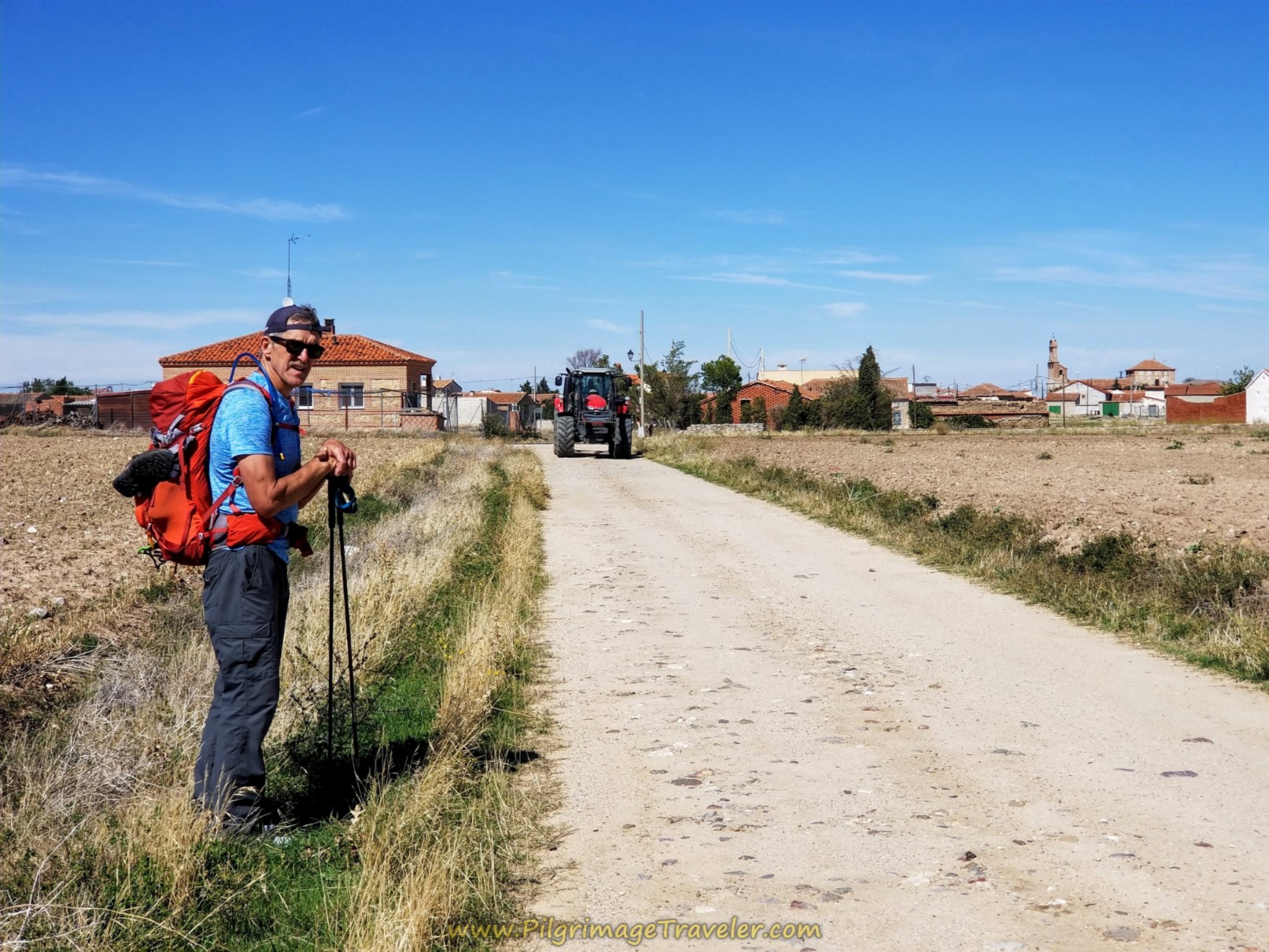 Tractor Arriving in Town
Tractor Arriving in TownCross the AV-804 into the town proper, as the sign to the right of the photo announces.
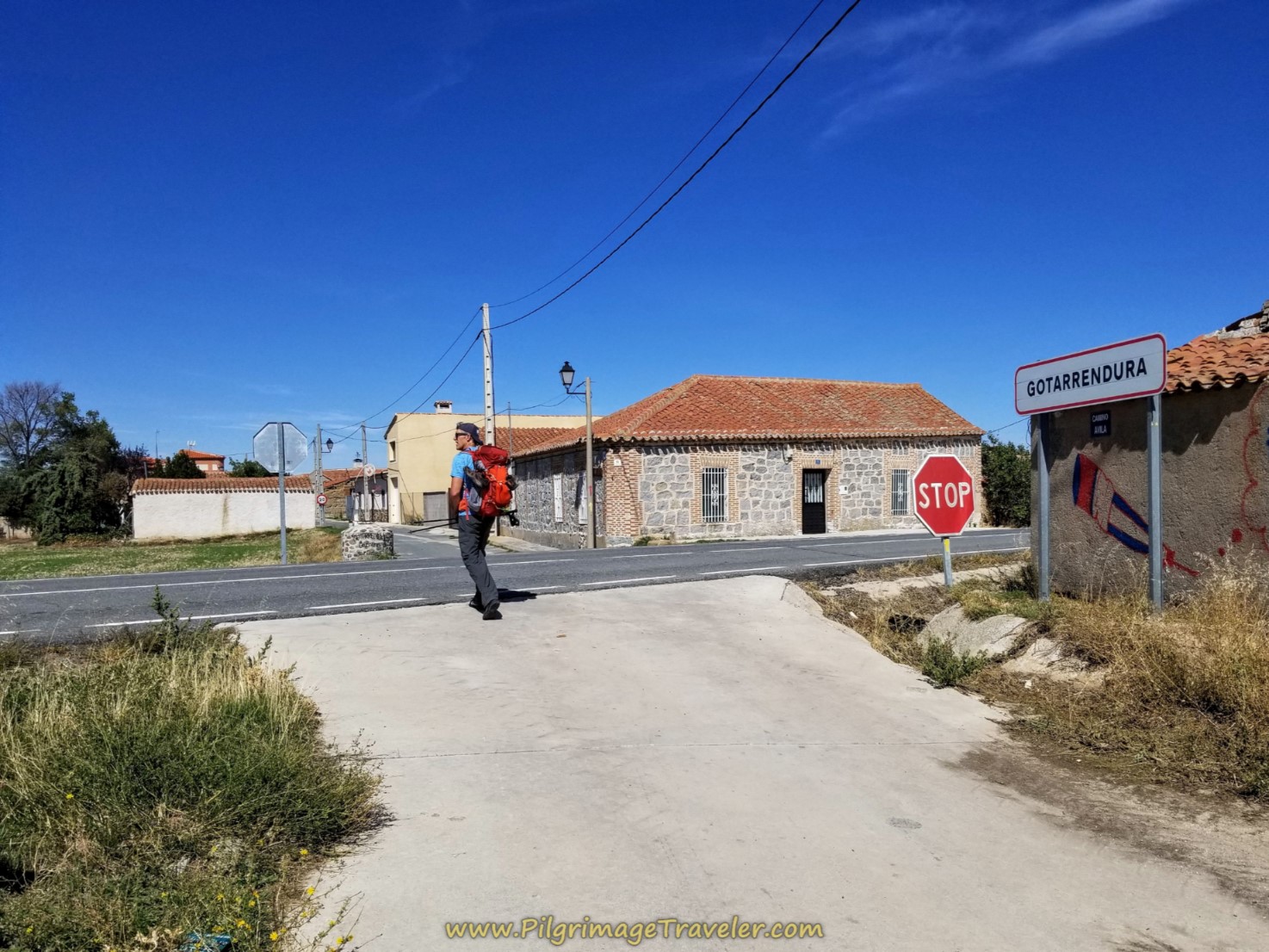 Cross AV-804 Into Gotarrendura
Cross AV-804 Into GotarrenduraAt approximately 23 kilometers into your day one on the Camino Teresiano, and only 120 meters from the AV-804, come to this intersection shown below. If you look closely on the curb, there is a yellow arrow pointing to the right with the word "Camino" for the route, and the word "Albergue" painted with a yellow arrow to the left, toward the albergue. The official name of it is the Albergue de Peregrinos, "Entre Adobes."
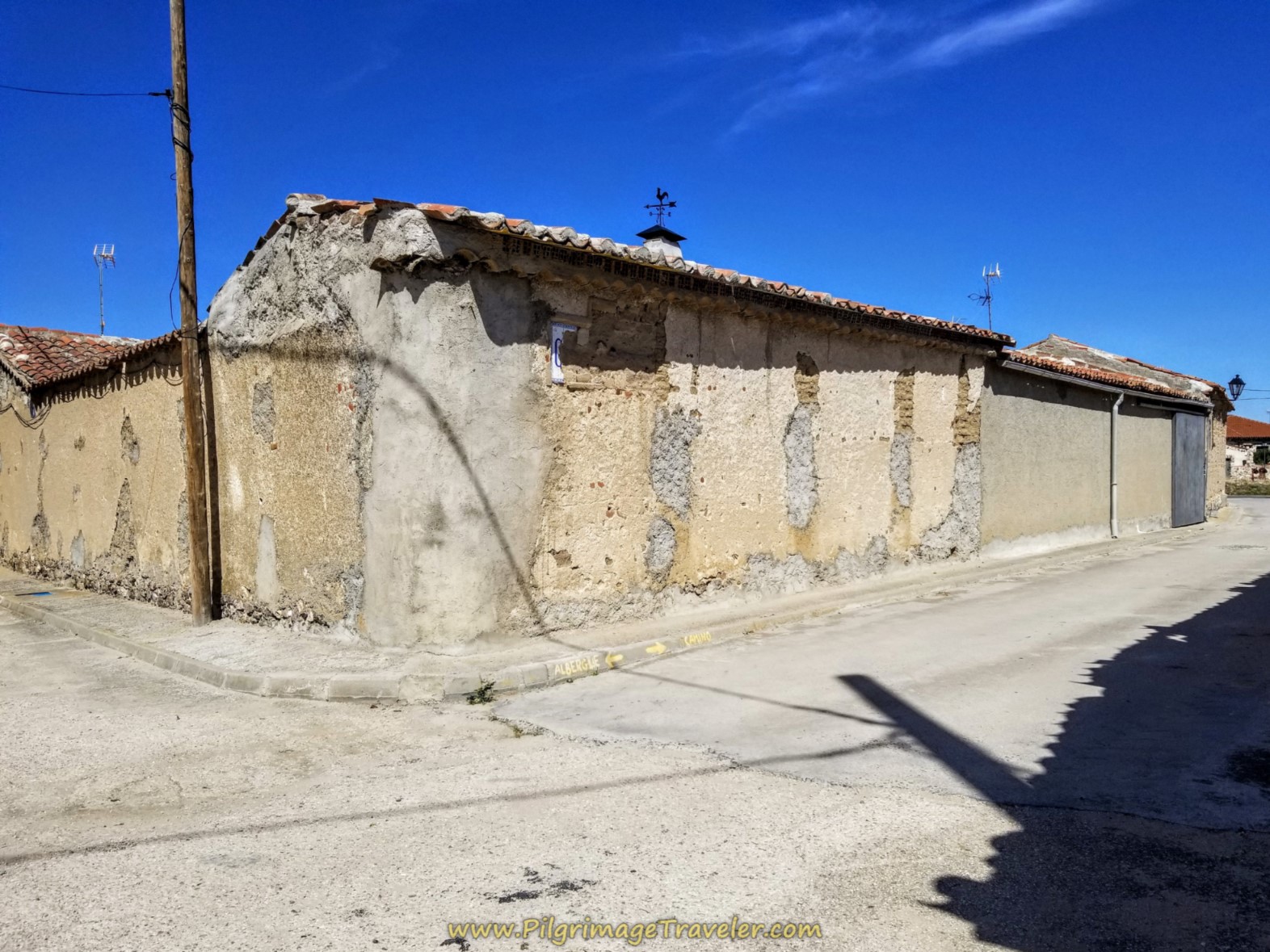 Turn Left to the Albergue
Turn Left to the AlbergueWe turned left toward the albergue, and it is only a few meters before you encounter it on your left. We looked at the sign, confirming that this was the albergue, and finding both doors locked, we sat on the curb to await the arrival of someone. There was no information giving us instructions nor posted hours.
We debated going to find a bar to get information, when lo and behold a young gentleman came by in a car, letting us know that we had to register for the albergue in the town hall (ayuntamiento). Wow, that was fast! No problem, we would go to the town hall.
Now that you know this information, you can continue on the Camino until it reaches the main square and the Gotarrendura Town Hall shown below. It is a short distance and easy to pick out, with the flags flying in front.
Once registered, we returned to the albergue. It is a donativo, so there is no charge. There is a donation box at the entrance, for you to give generously, for this comfortable and quaint place.
While there are four beds only in this section, exclusively for pilgrims, the town also owns a 12-bed albergue for pilgrims and tourists alike, called the Casa del Maestro, its location is within the same building complex as the 4-bed albergue. Regardless, you need to inquire at the town hall about available pilgrim's accommodation.
This makes it mandatory to arrive in town before the town hall closes at 5:00 p.m. Click here for the Gotarrendura Reservation page for reservations if you wish to plan ahead. In this website, you will see the information for both the albergue and the Casa del Maestro.
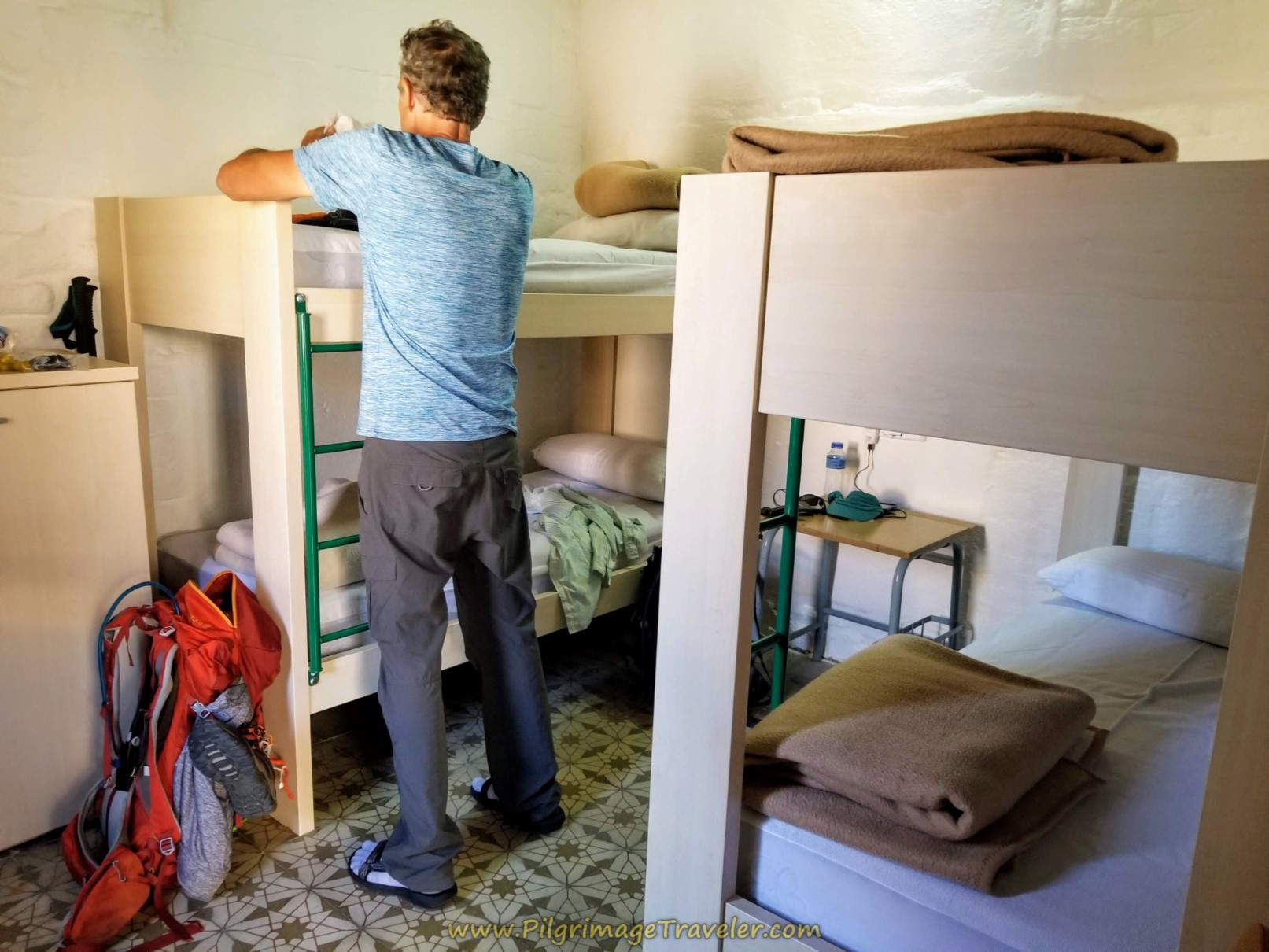 Albergue de Peregrinos de Gotarrendura, Inside
Albergue de Peregrinos de Gotarrendura, InsideThere is a small kitchen, a small dining area, and a sitting area, all attached to this inner courtyard, with a lovely statue of St. Teresa, on this well. It is a lovely place to sit in the sun and reflect on her, her important work and on your Camino. In the courtyard is a clothes line, and the wash basin is in the kitchen.
Back on the main square is the town bar, the Bar Los Nenes. This bar has recently changed owners, and I am disappointed as the prior owner spoke perfect English, and would essentially take an order for what you wanted to eat.
We had beers and Aquarius, when we arrived into town, and came back later for dinner. This most likely is still a very small operation, so order your dinner when you arrive. Andrea, the prior owner, actually ran into town to buy the food we ordered. There is also another bar, La Terraza de Gota a few steps to the north, if needed.
We made it simple, and ordered hamburgers, so the special of the day became hamburgers, which one other pilgrim and several townspeople had as well!
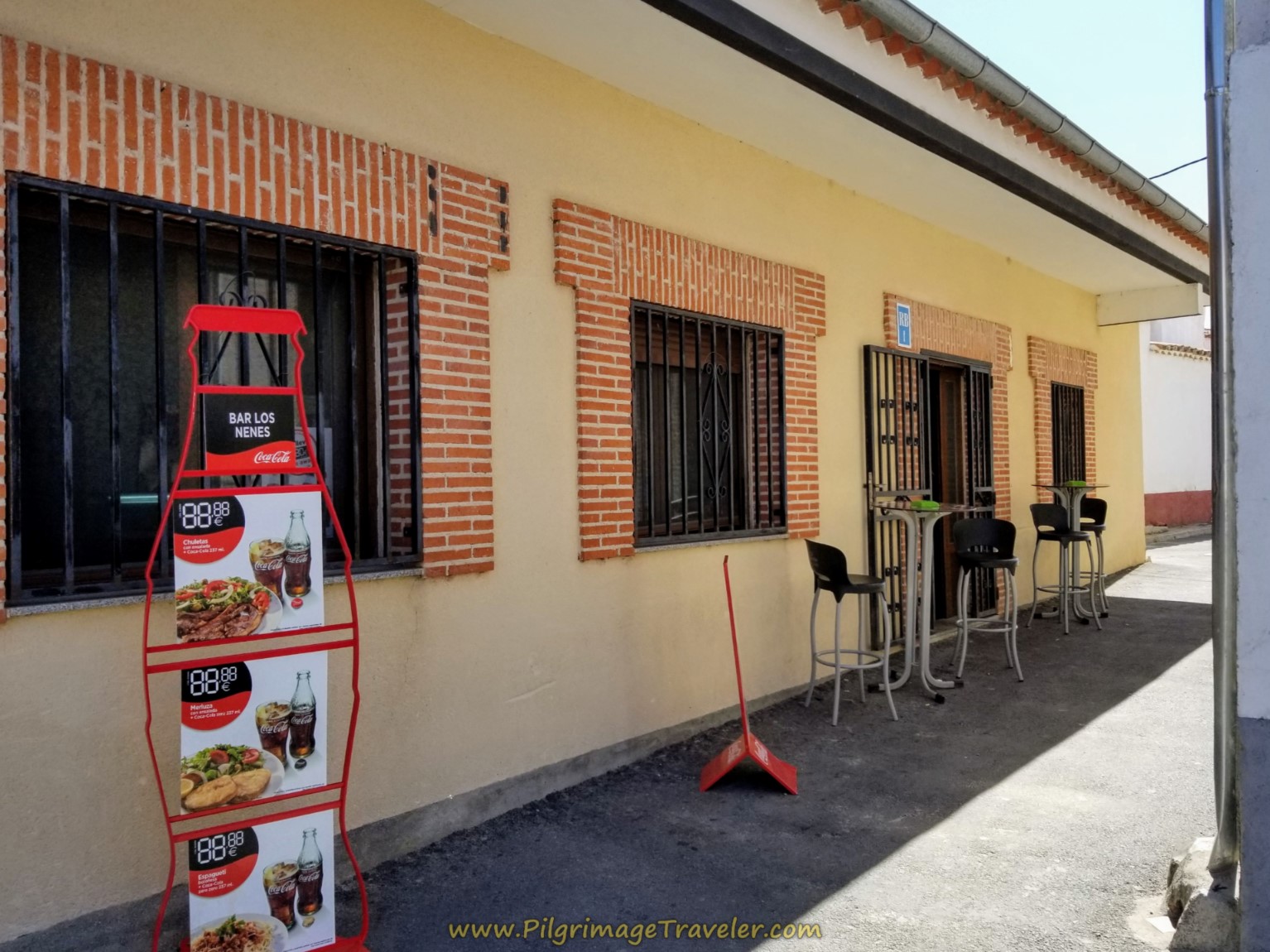 Bar Los Nenes on the Main Square
Bar Los Nenes on the Main SquareWe asked Andrea if she opened for breakfast, and she asked what time we wanted it. I could tell from her manner and from prior experience that I did not want to wait around for her to open in the morning, so instead I asked if I could purchase food from her to have our breakfast in the albergue. She produced many choices, and we bought muffins, eggs and fruit. Everyone was happy!
There are several sights in the town, the Gotarrendura Ethnological Museum, and the Palomar de Santa Teresa, St. Teresa's dovecote, shown below. The proprietress at the bar gave me the phone number to call, to have the townswoman come to show us inside. I was told to wait an hour or two, as the townswoman was having her siesta. OK, no problem. However, when I called at a respectable 6:00 p.m., well after siesta, I received no answer when I called. I tried a half-hour later and still no answer. I gave up. I had to content myself to read about it on the website (see the above link).
We strolled around this small town, past the church, below. It was closed.
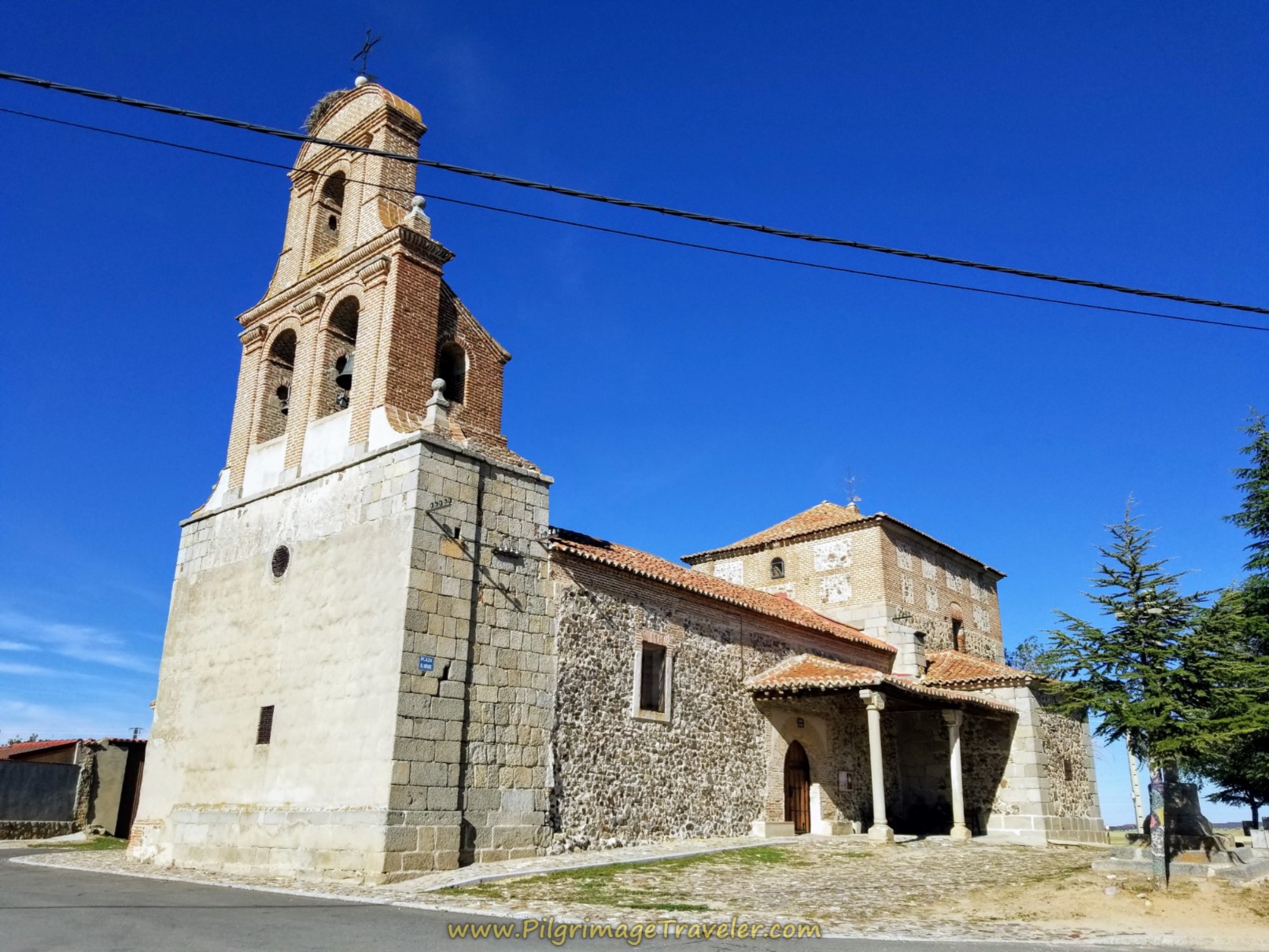 Iglesia de Gotarrendura
Iglesia de GotarrenduraAlso closed was the hermitage, just opposite the dovecote.
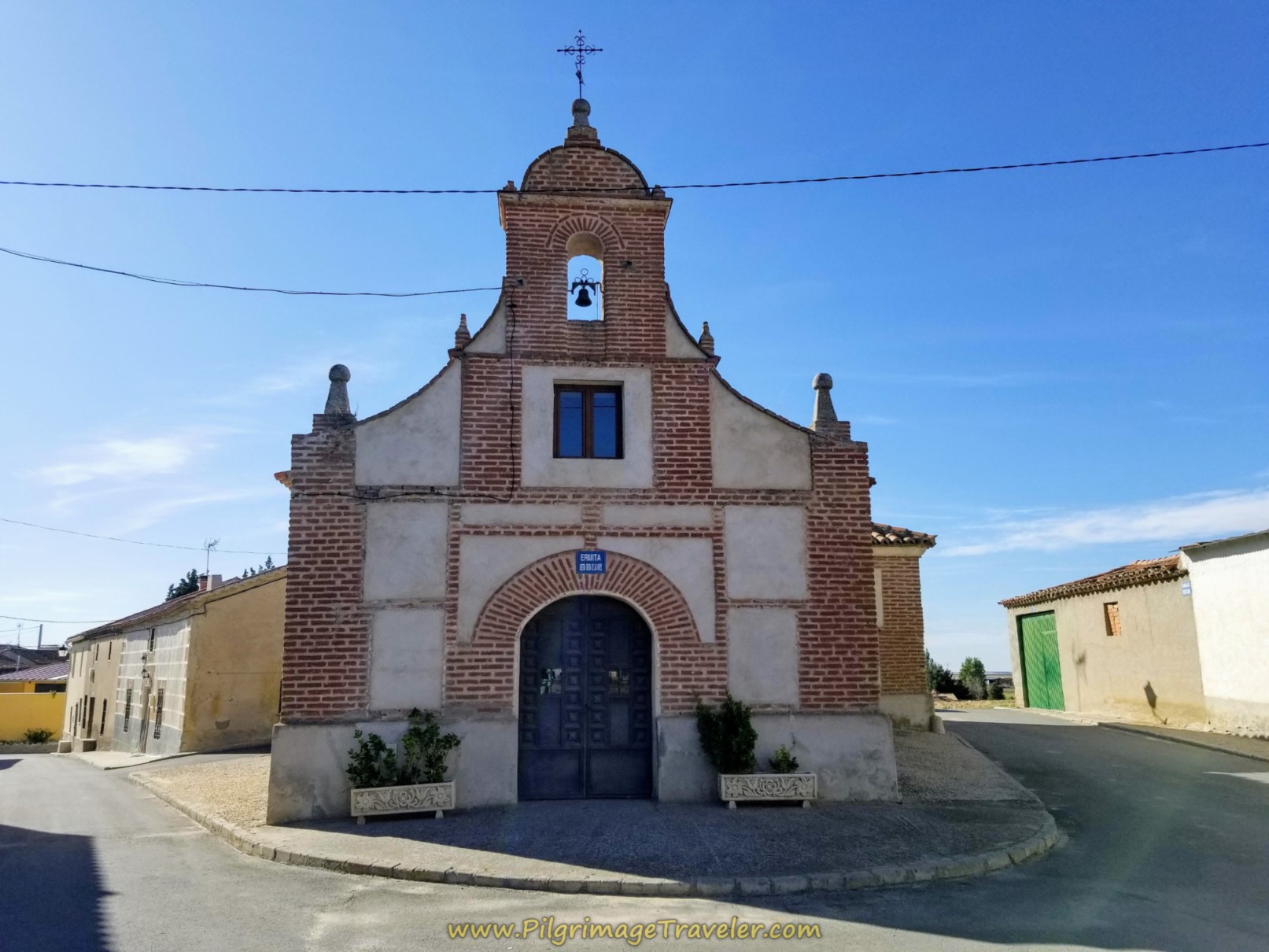 Ermita Nuestra Señora de las Nieves
Ermita Nuestra Señora de las NievesReflections on Day One of the Camino Teresiano
I can truly say that on this day one of our Camino Teresiano, that I maintained a Peace within. I was indeed, exactly where I needed to be. It was truly a privilege to be walking on the paths that medieval pilgrims and saints had trod.
I reflected in my voice journal that this Camino, for me, was to clear my head, spend time with my life-partner and to be in the moment. I was not looking for answers, but I was seeking self-validation and life-affirming experiences.
Every step on this day was indicative of my happiness, indeed, as St Teresa says and I paraphrase,"My soul, as a child of God, had the freedom to sing, dance, praise and love!"
Salutation
May your own day one on the Camino Teresiano be filled with a Peace within, knowing that you are exactly where you need to be!
And to continue this salutation in St. Teresa's words, once again, "May you use those gifts that you have received, and pass on the love that has been given to you. May you be content knowing you are a child of God. Let this presence settle into your bones, and allow your soul the freedom to sing, dance, praise and love. It is there for each and every one of us."
Caminos Teresianos Stages
Please Consider Showing Your Support
Many readers contact me, Elle, to thank me for all the time and care that I have spent creating this informative website. If you have been truly blessed by my efforts, have not purchased an eBook, yet wish to contribute, I am very grateful. Thank-you!
Search This Website:
Follow Me on Pinterest:
Follow Me on Instagram:
Find the Pilgrimage Traveler on Facebook:
Like / Share this page on Facebook:
***All Banners, Amazon, Roamless and Booking.com links on this website are affiliate links. As an Amazon associate and a Booking.com associate, the Pilgrimage Traveler website will earn from qualifying purchases when you click on these links, at no cost to you. We sincerely thank-you as this is a pilgrim-supported website***
PS: Our guide books are of our own creation and we appreciate your purchase of those too!!
Shroud Yourself in Mystery, along the Via de Francesco!
Walk in the Footsteps of St. Francis, and Connect Deeply to the Saint and to Nature in the Marvelous Italian Countryside!
Recent Articles
-
Day One on the Camino Portugués, Lisbon to Alverca do Ribatejo
Apr 15, 25 08:19 PM
Our Day One on the Camino Portugués was much more beautiful and enjoyable than we had heard. -
Hiking the West Highland Way
Apr 11, 25 08:51 PM
Hiking the West Highland Way is a representation of all things Scottish, traversing 96 miles from the lowlands of Milngavie to Ft William, in the highlands. -
Way of St Francis eBook Guide (Via di San Francesco)
Apr 11, 25 08:49 PM
Our Way of St Francis eBook Guide, a digital guidebook is full of current information to assist you in finding your Way. In downloadable, digital, PDF format.
Need suggestions on what to pack for your next pilgrimage? Click Here or on the photo below!
Carbon fiber construction (not aluminum) in a trekking pole makes them ultra lightweight. We like the Z-Pole style from Black Diamond so we can hide our poles in our pack from potential thieves before getting to our albergue! There are many to choose from! (See more of our gear recommendations! )
Gregory BackPack - My Favorite Brand
Do not forget your quick-dry microfiber towel!
Booking.com
My absolute favorite book on how to be a pilgrim:


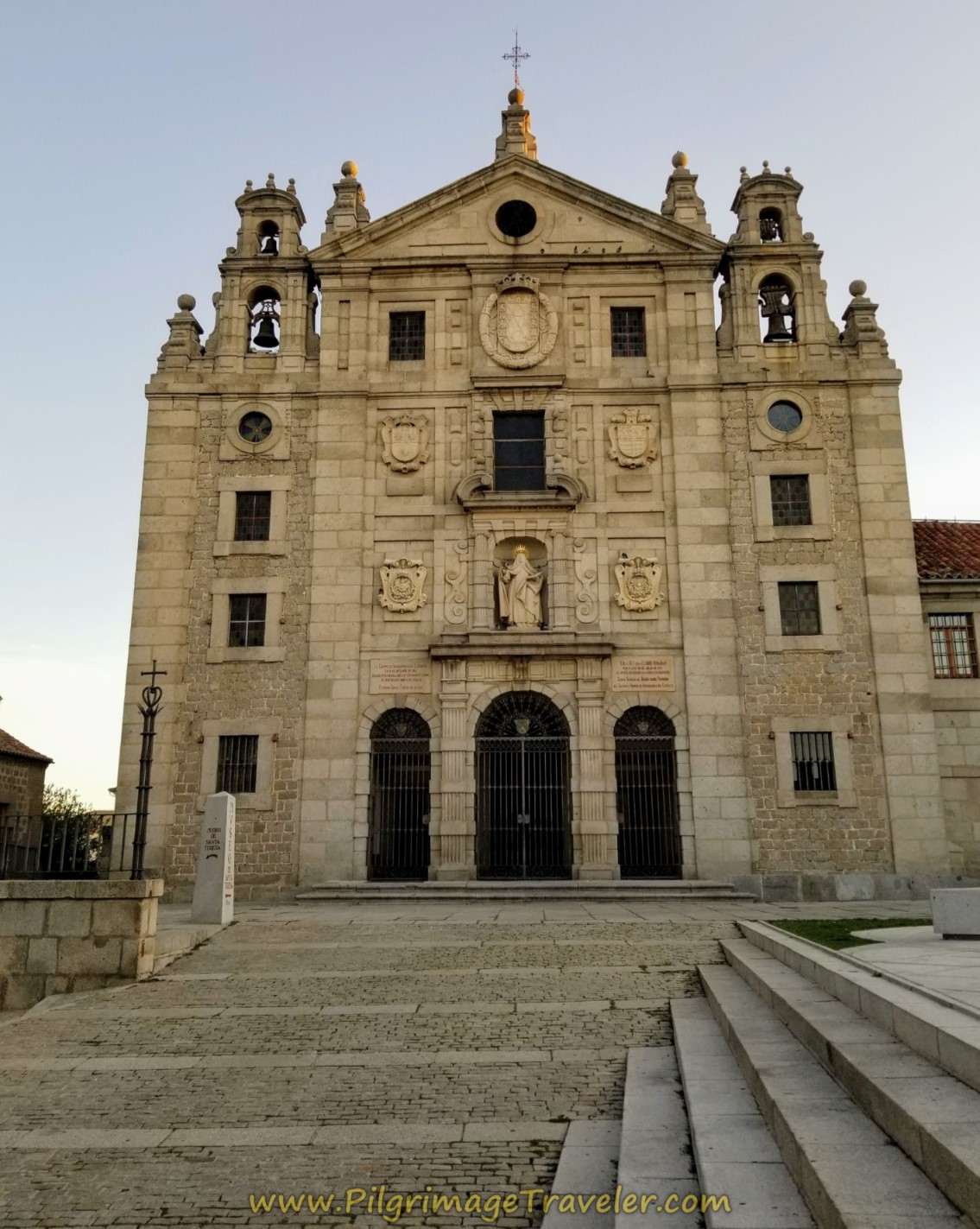
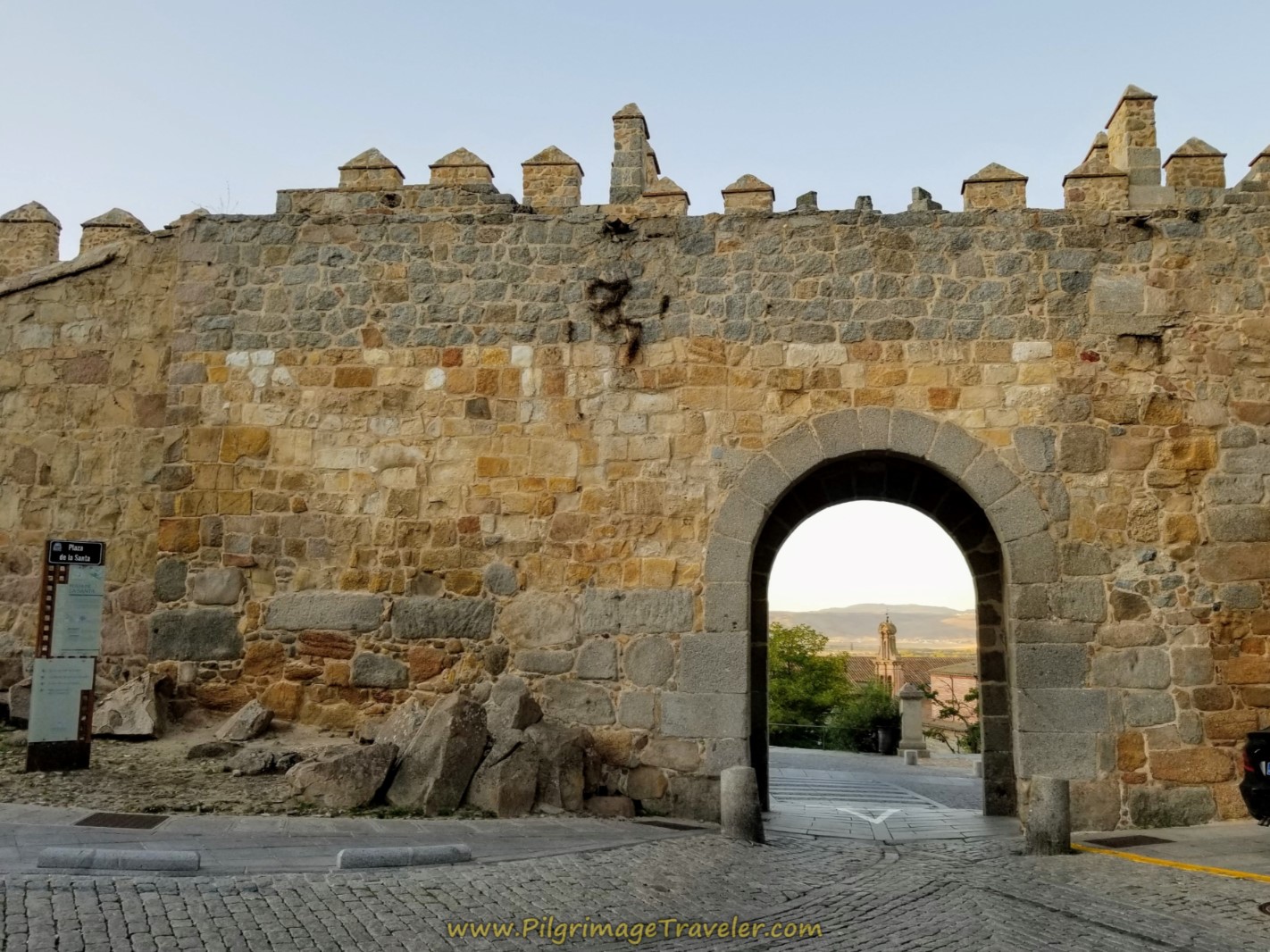
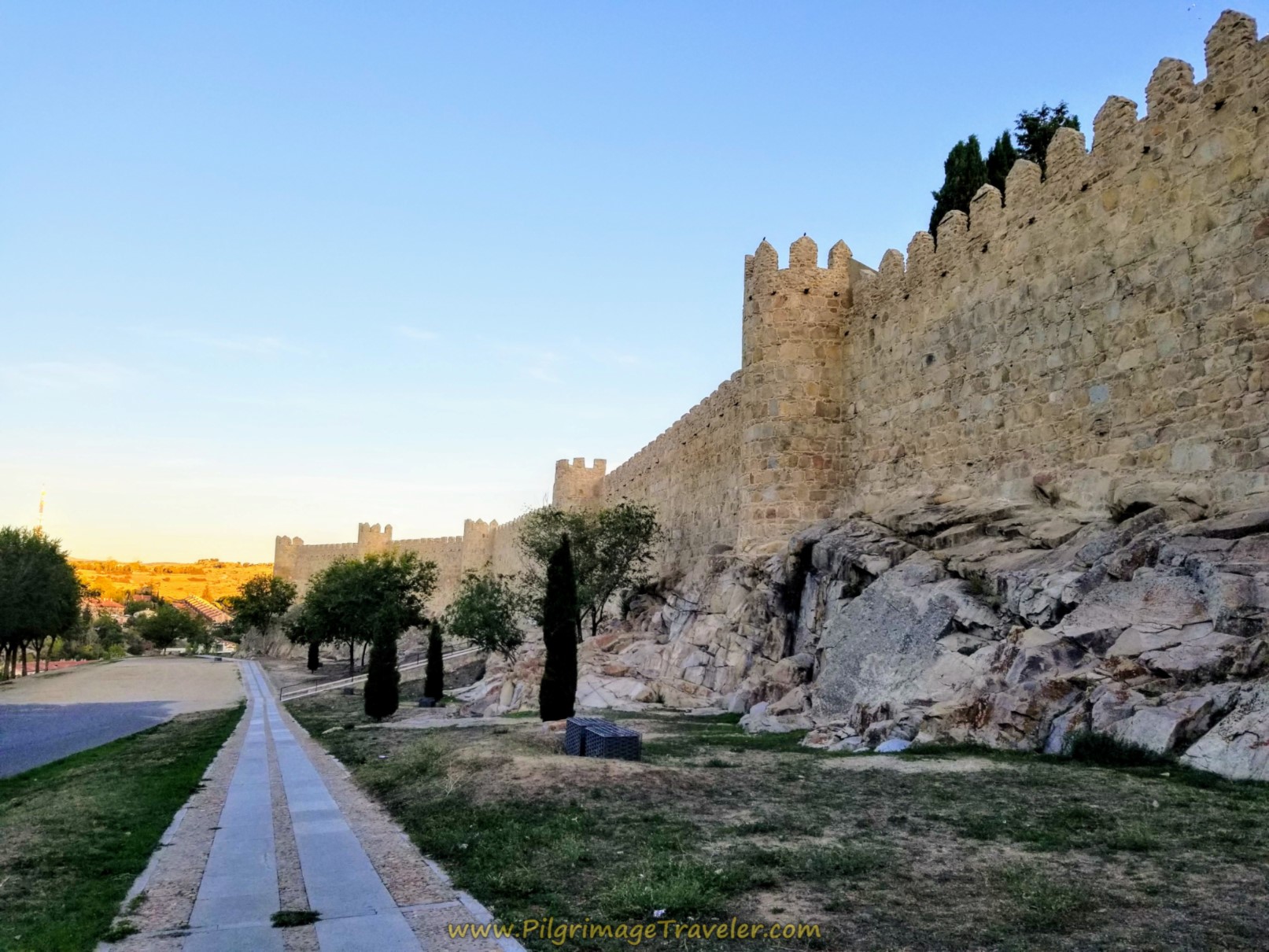
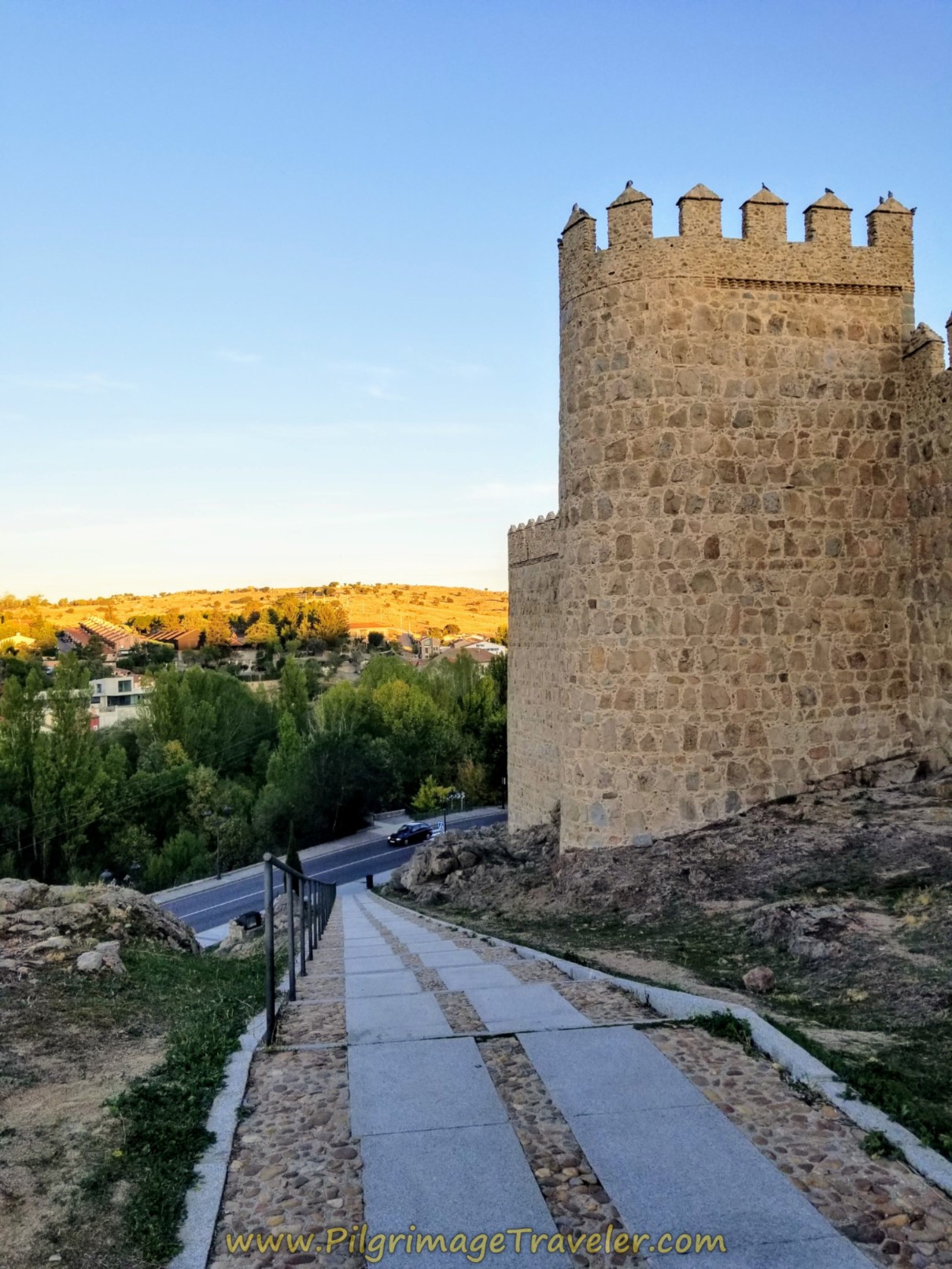
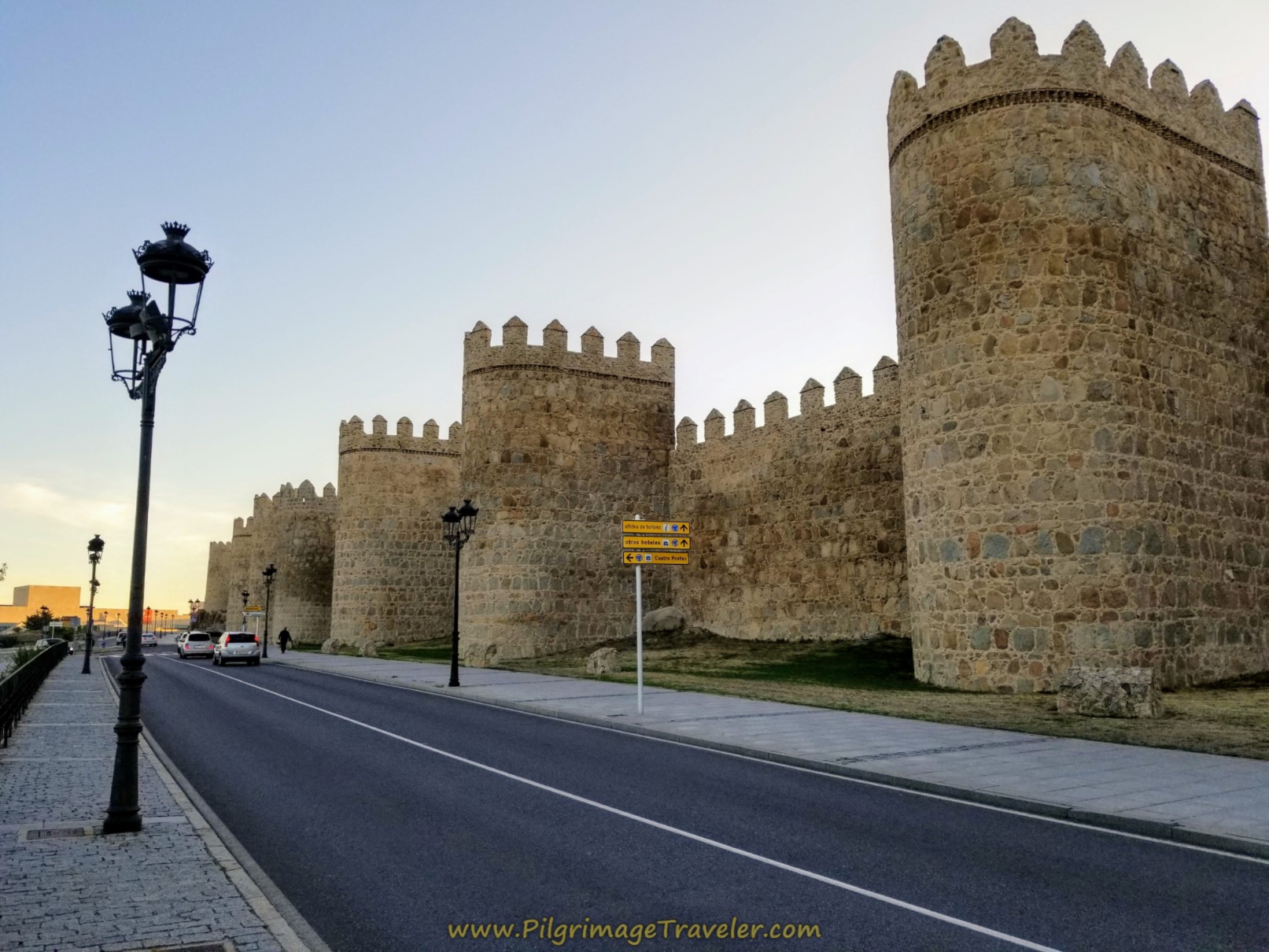
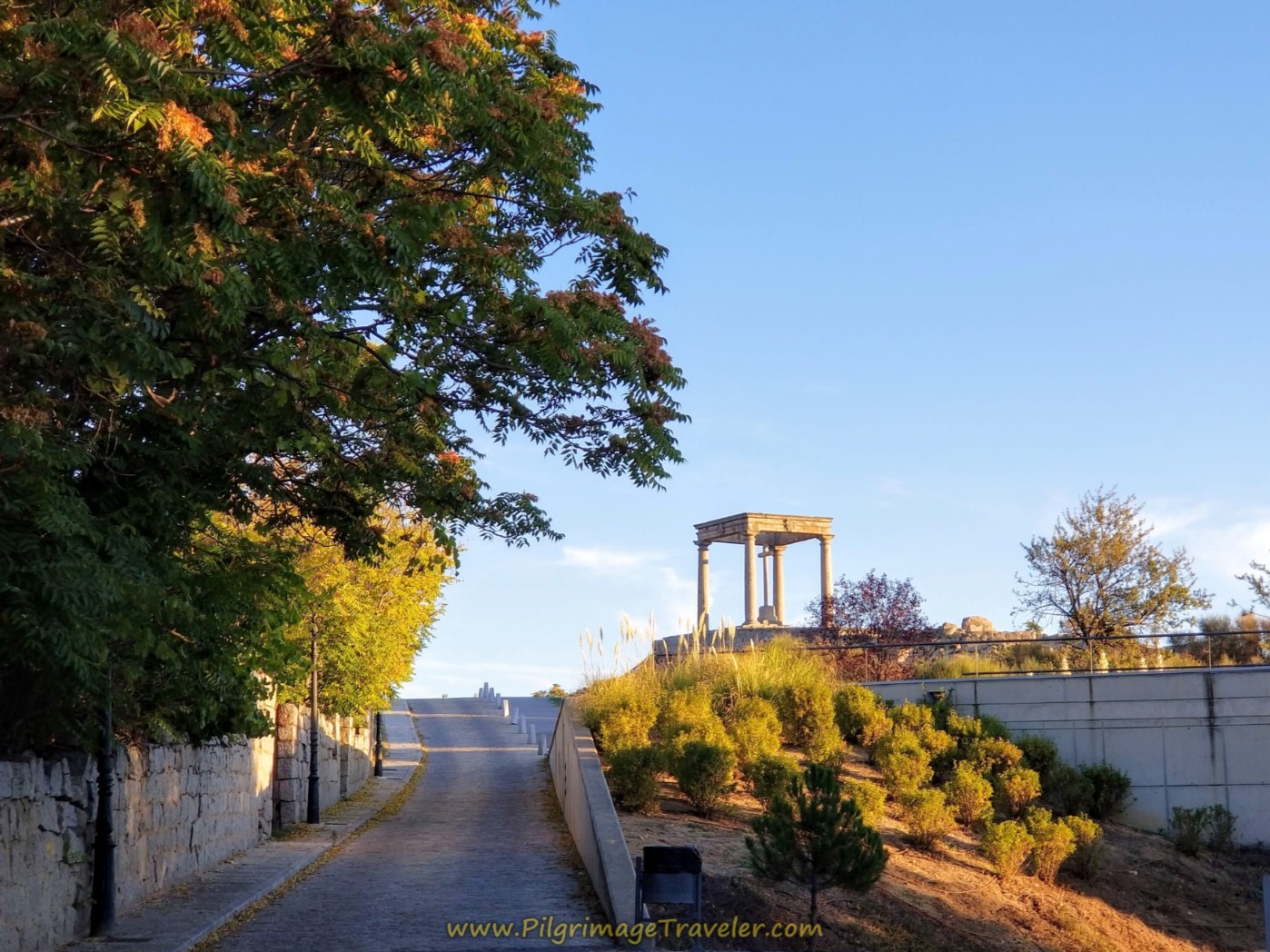
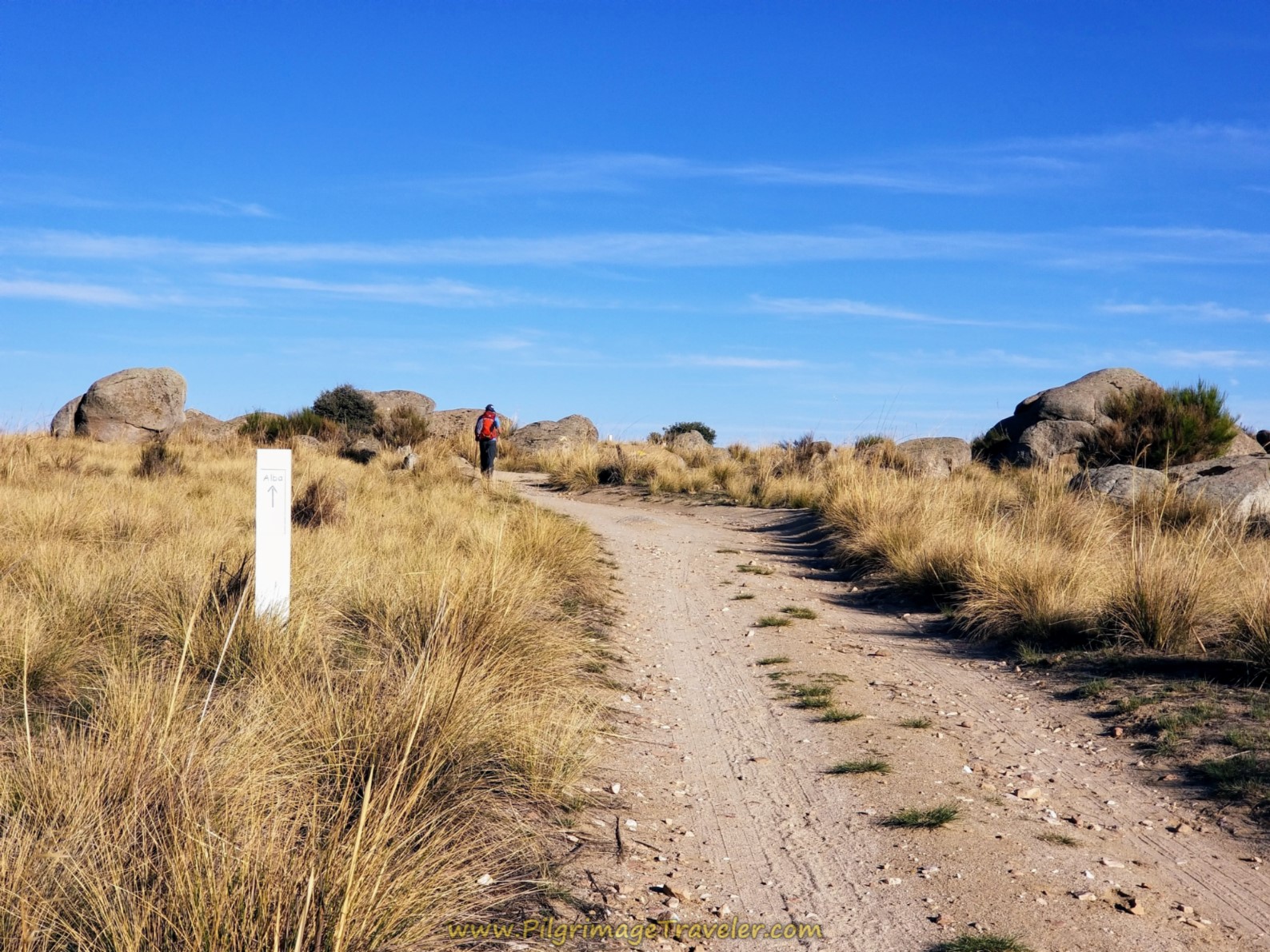
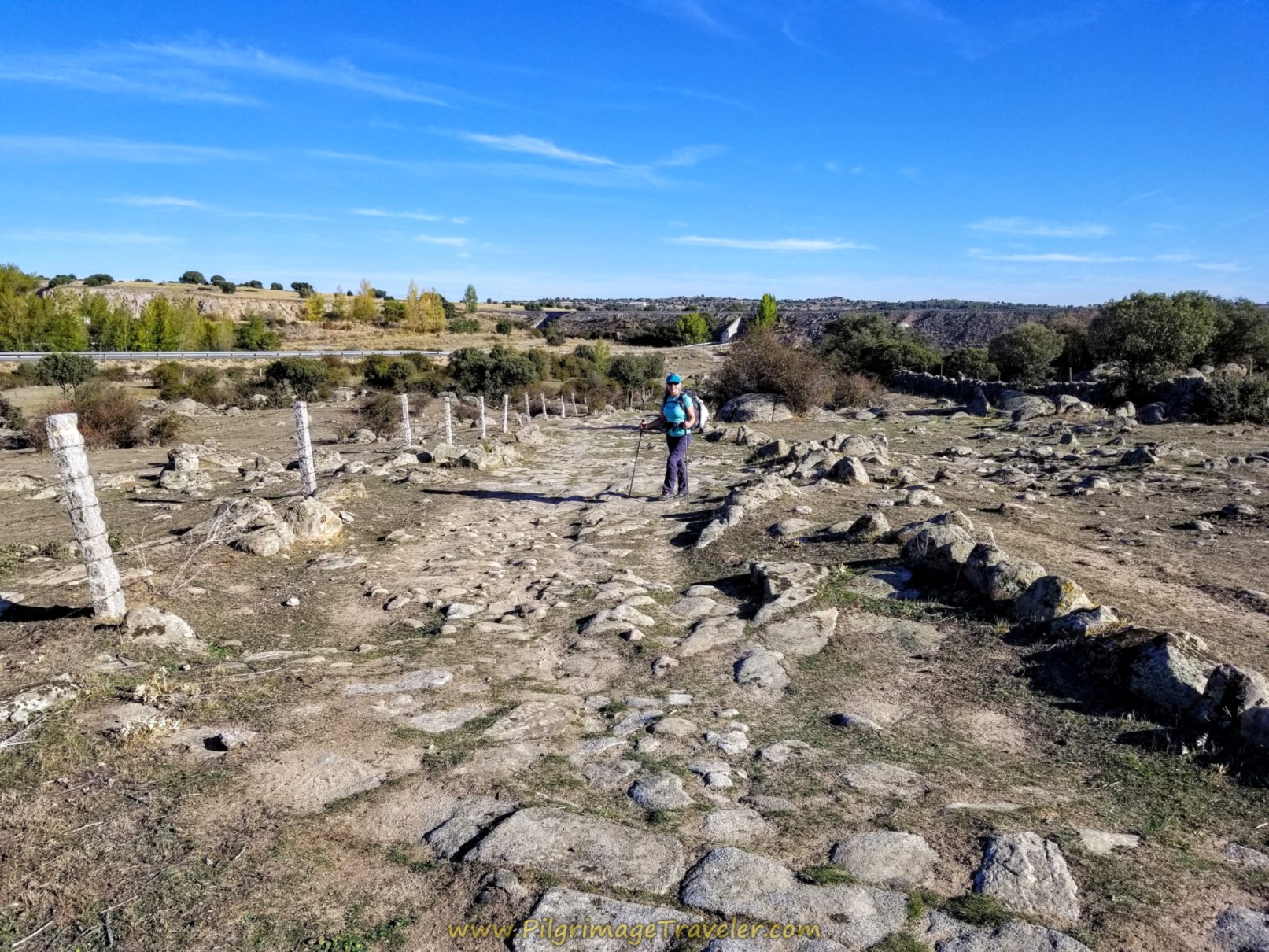
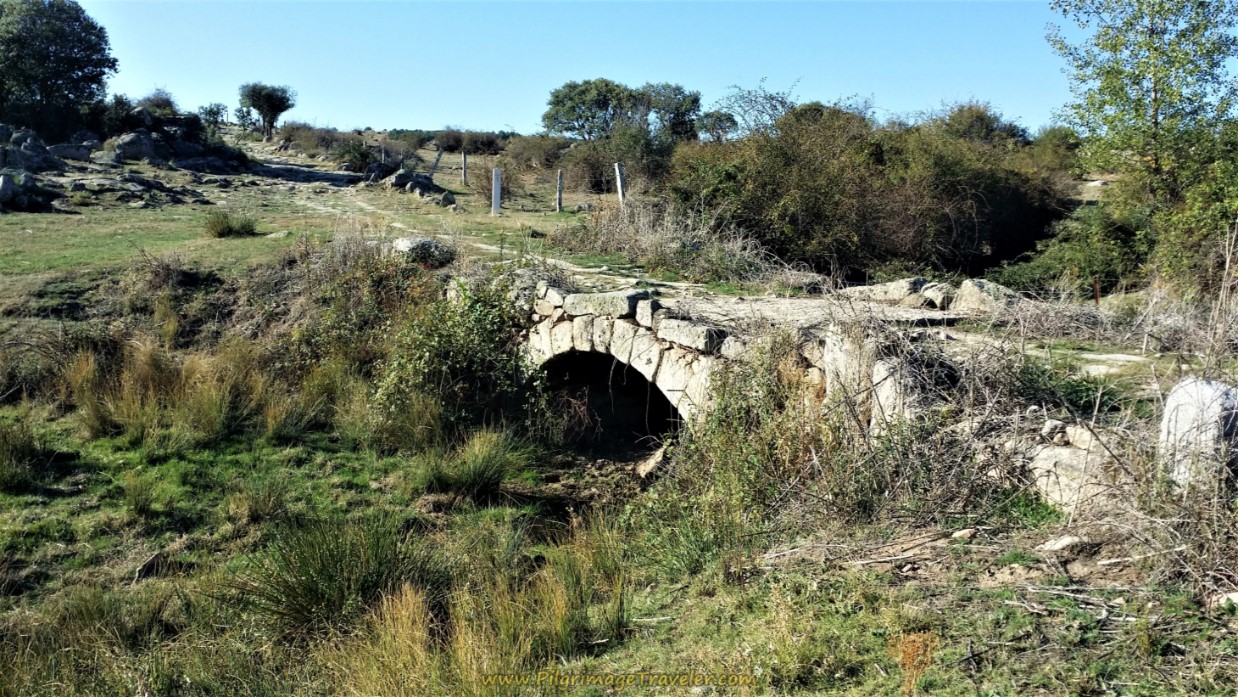
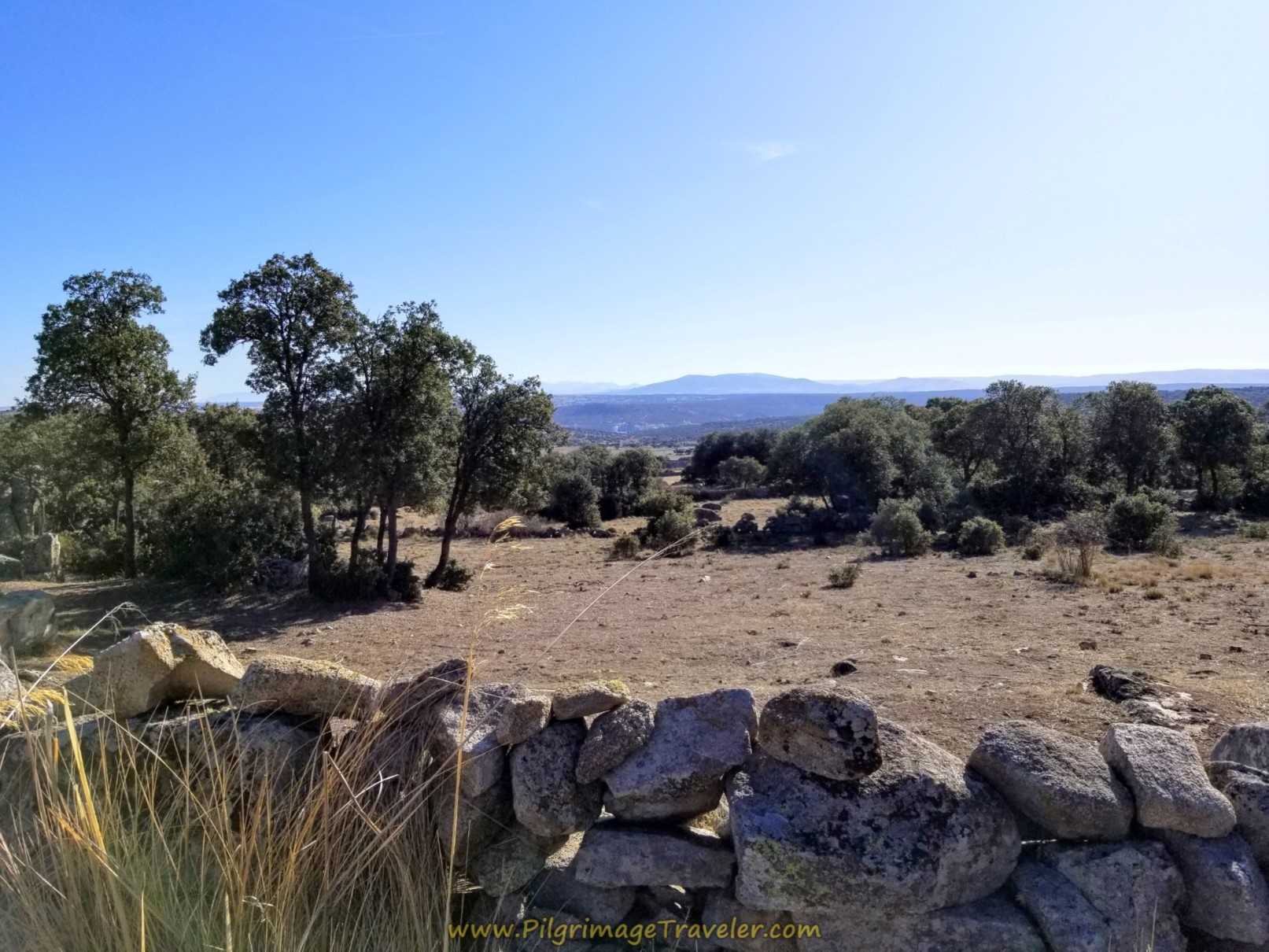
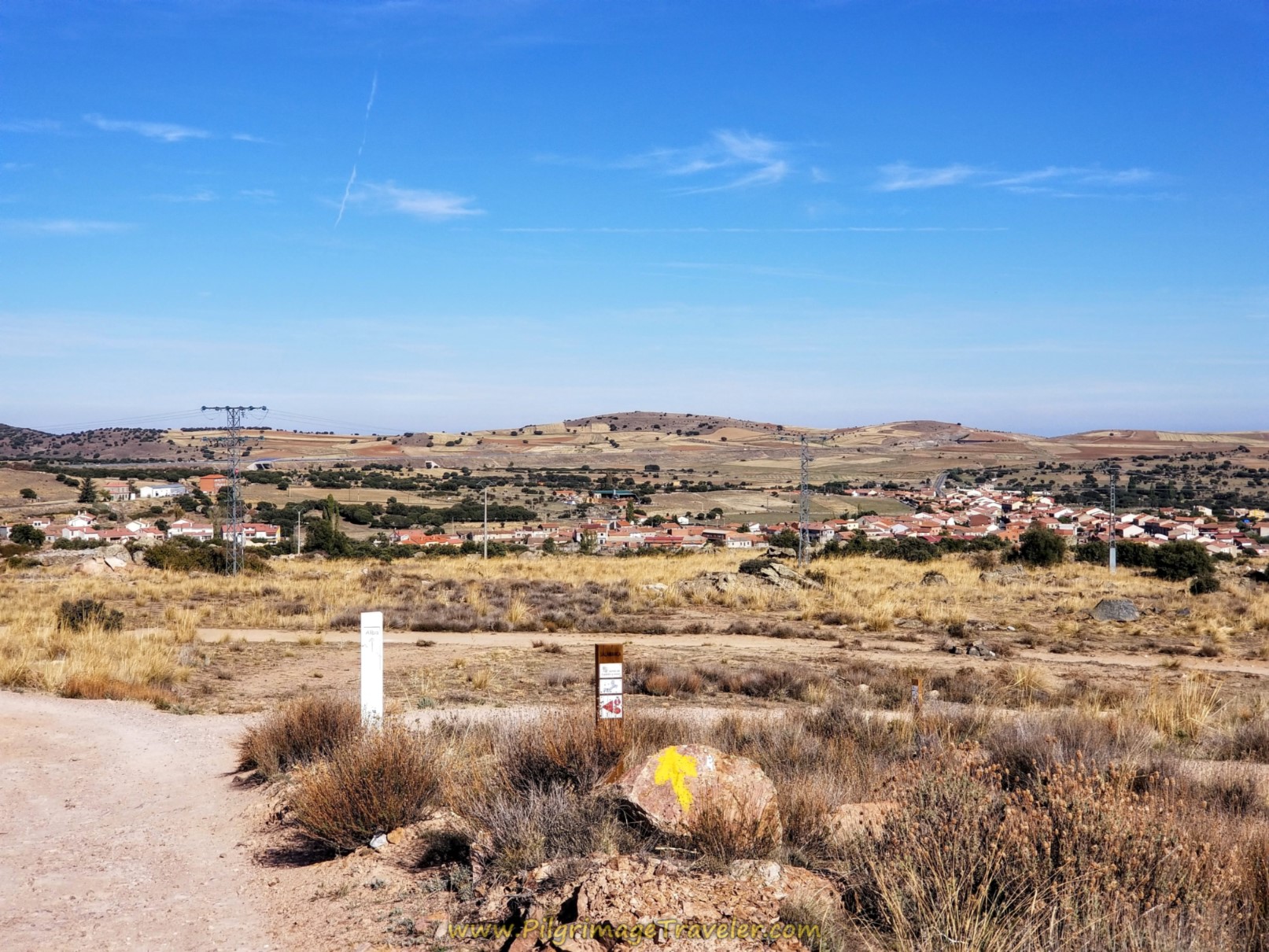
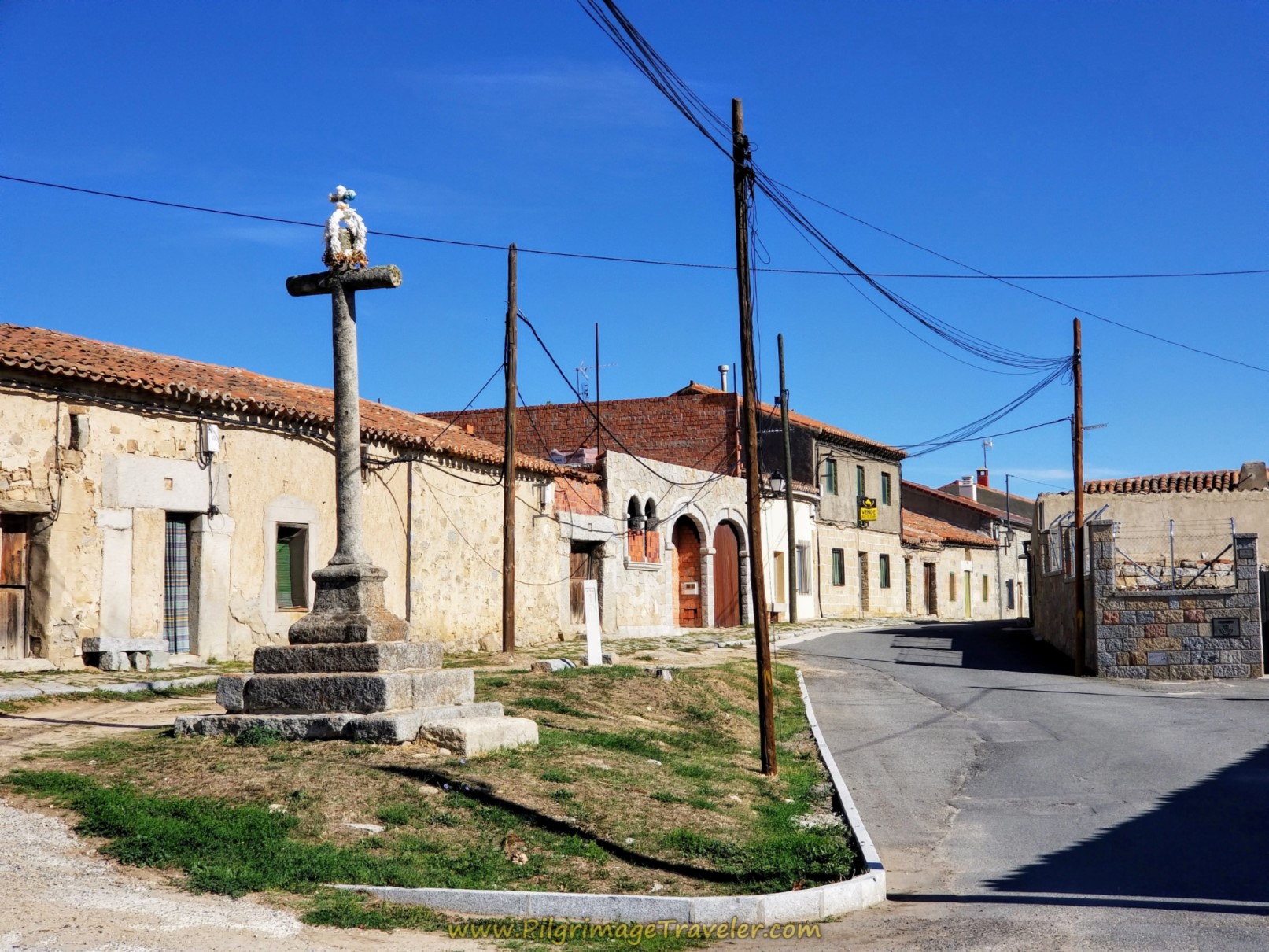
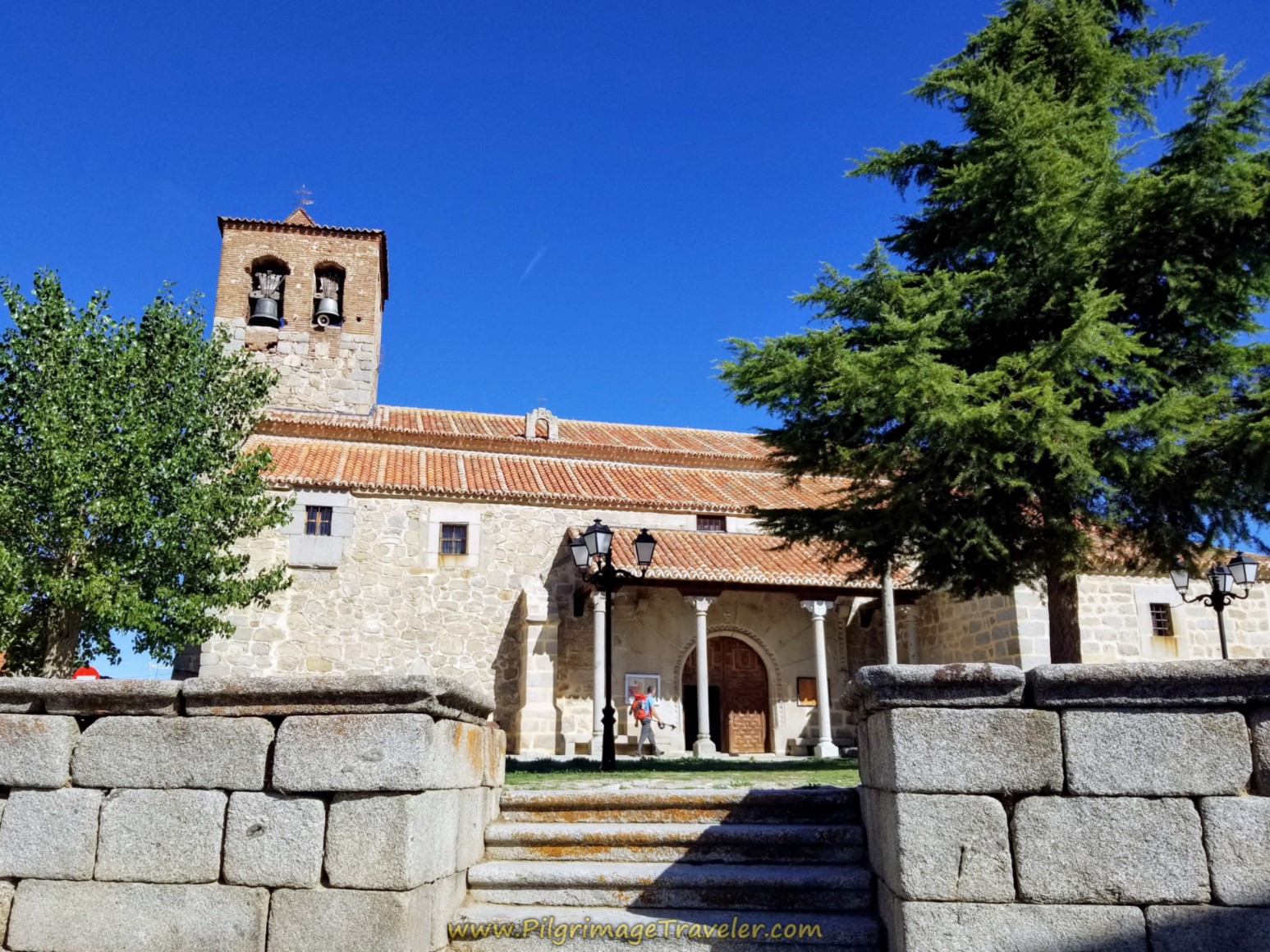
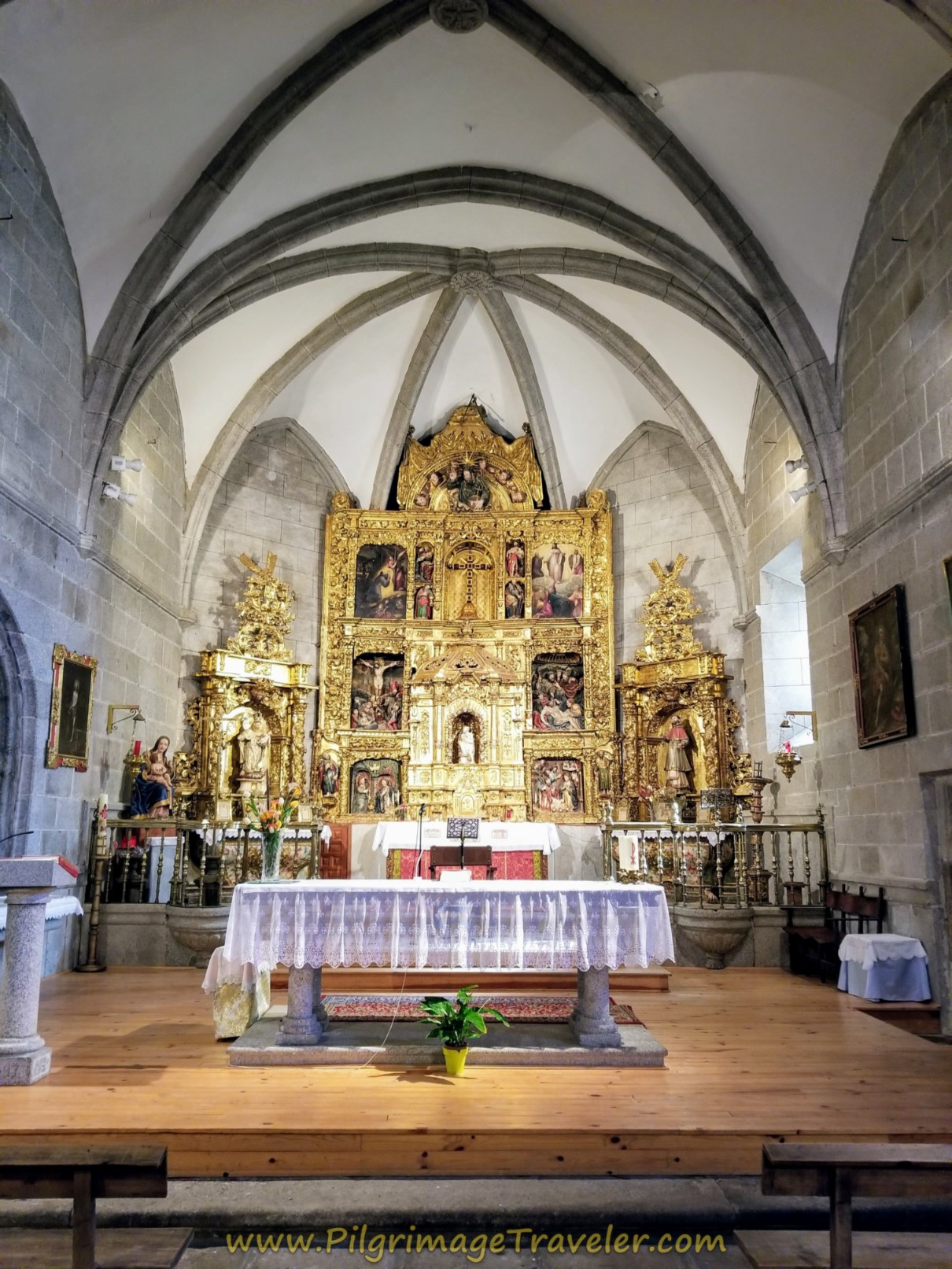
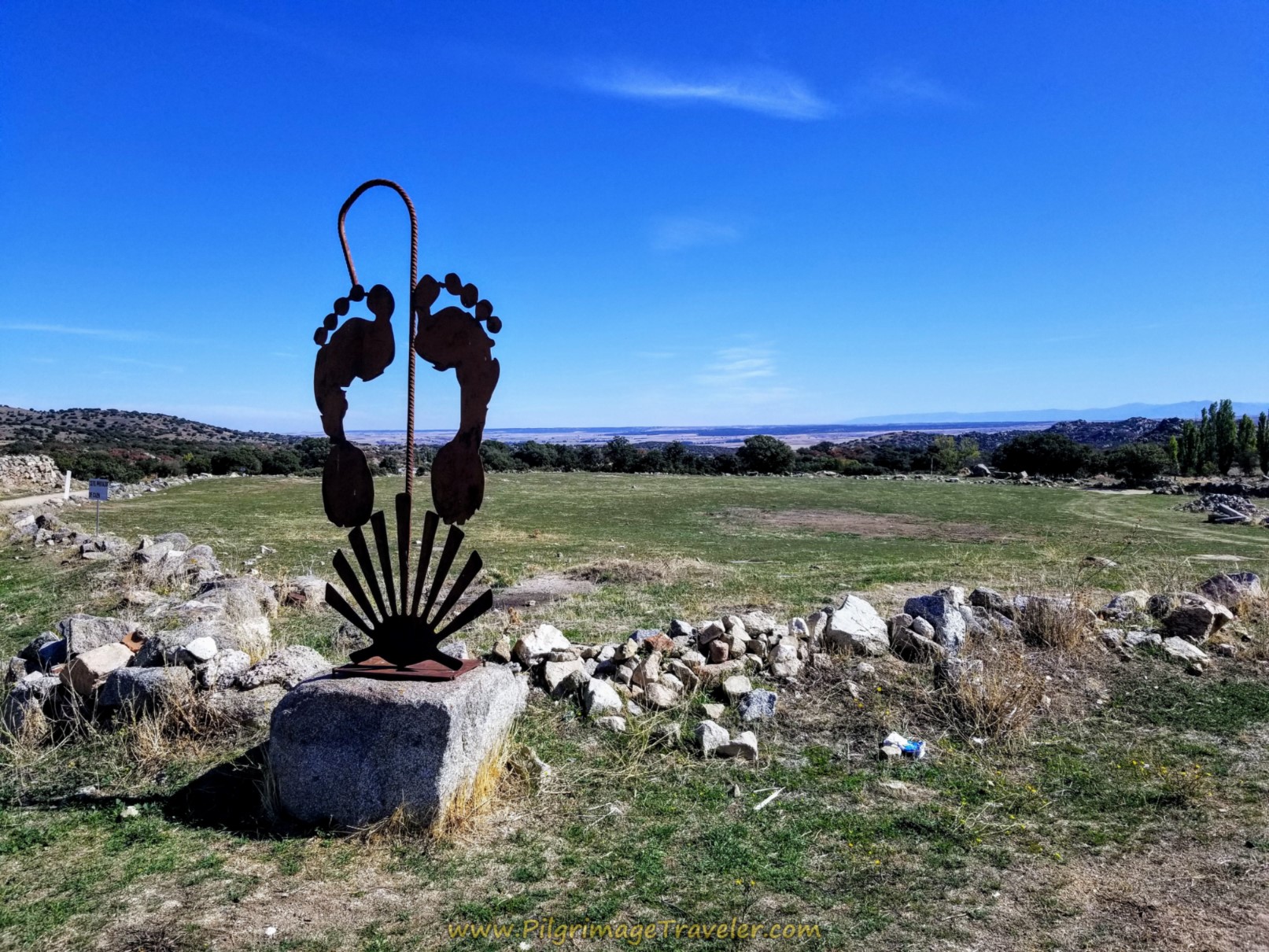
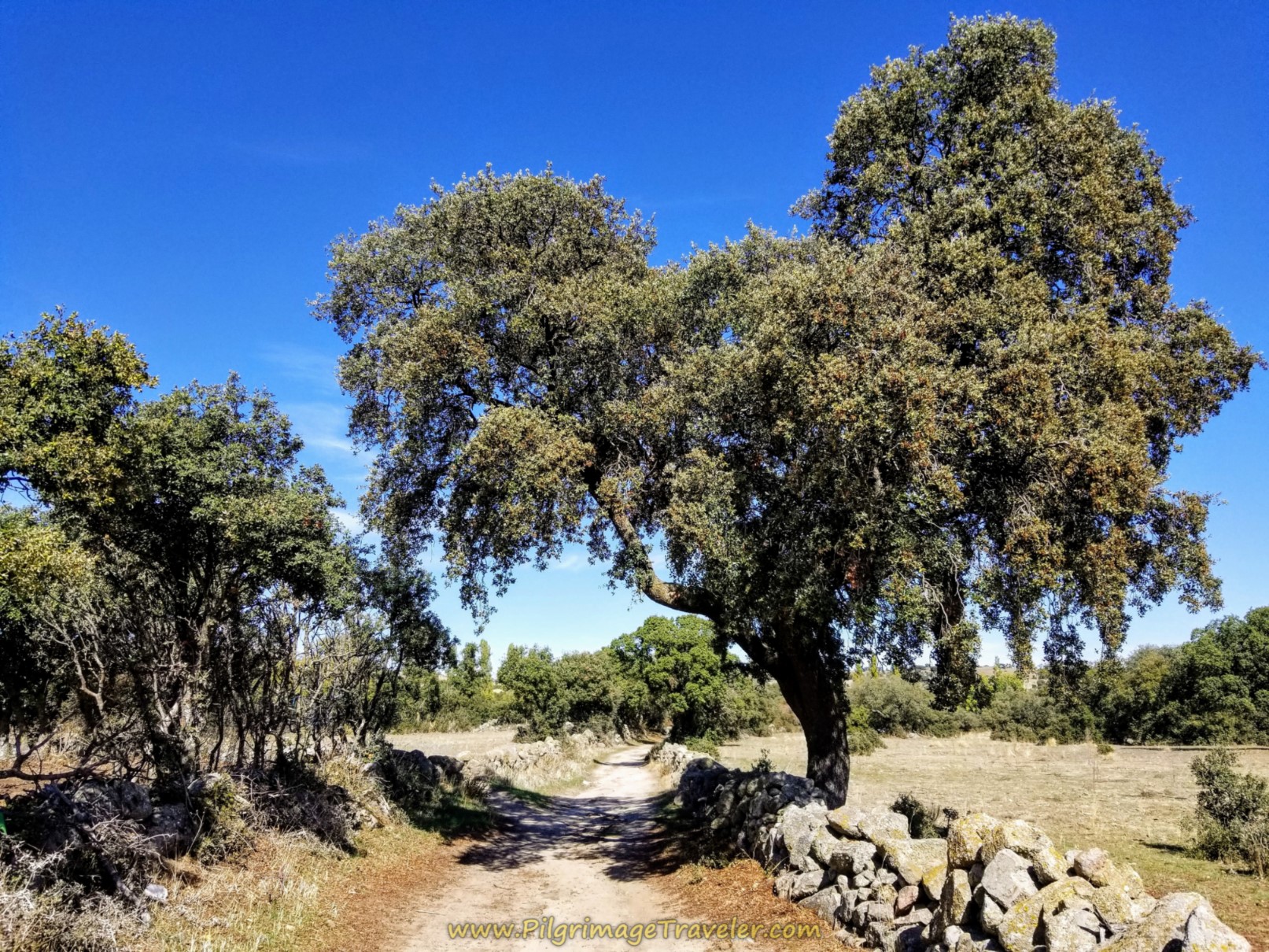
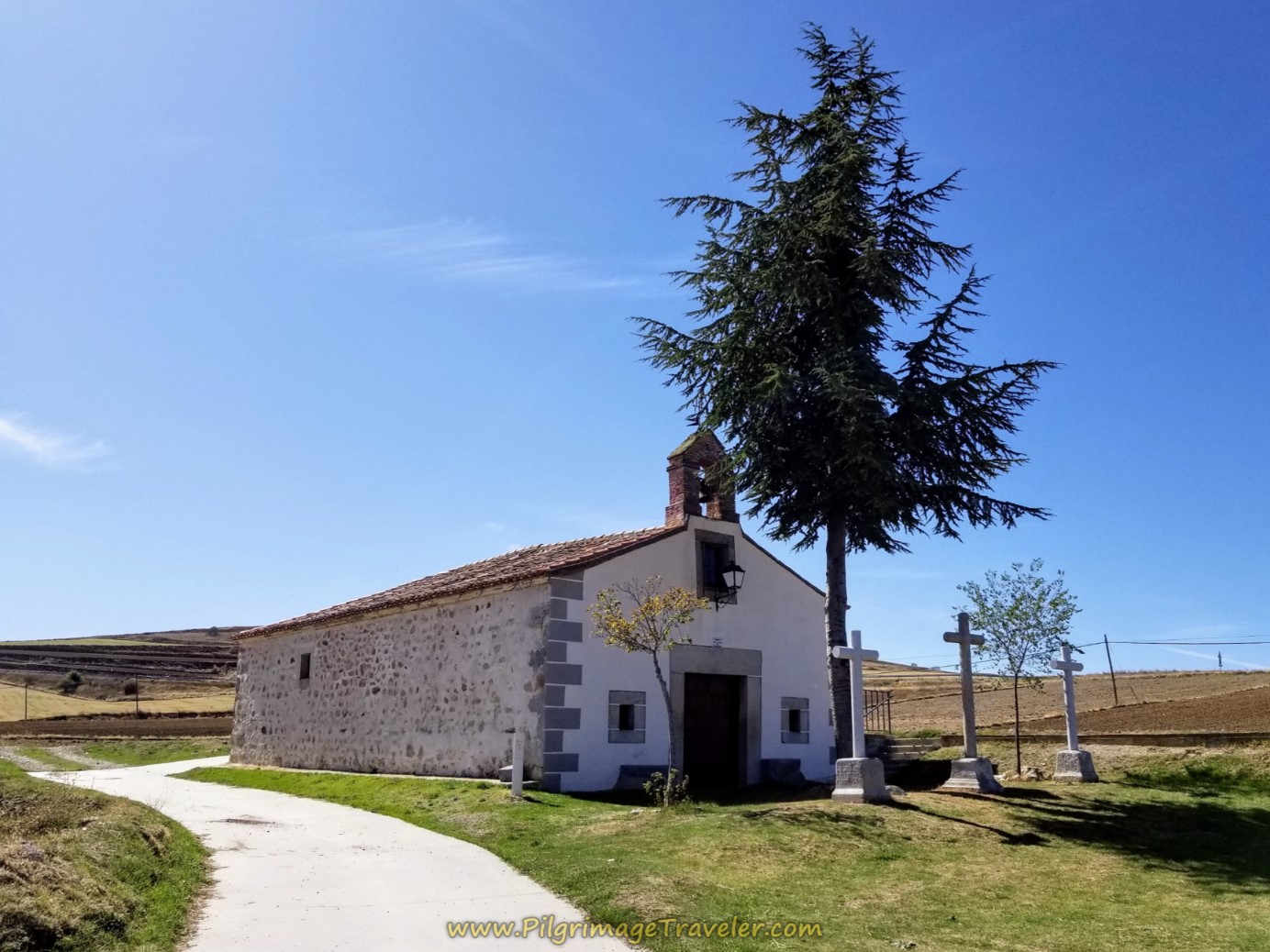
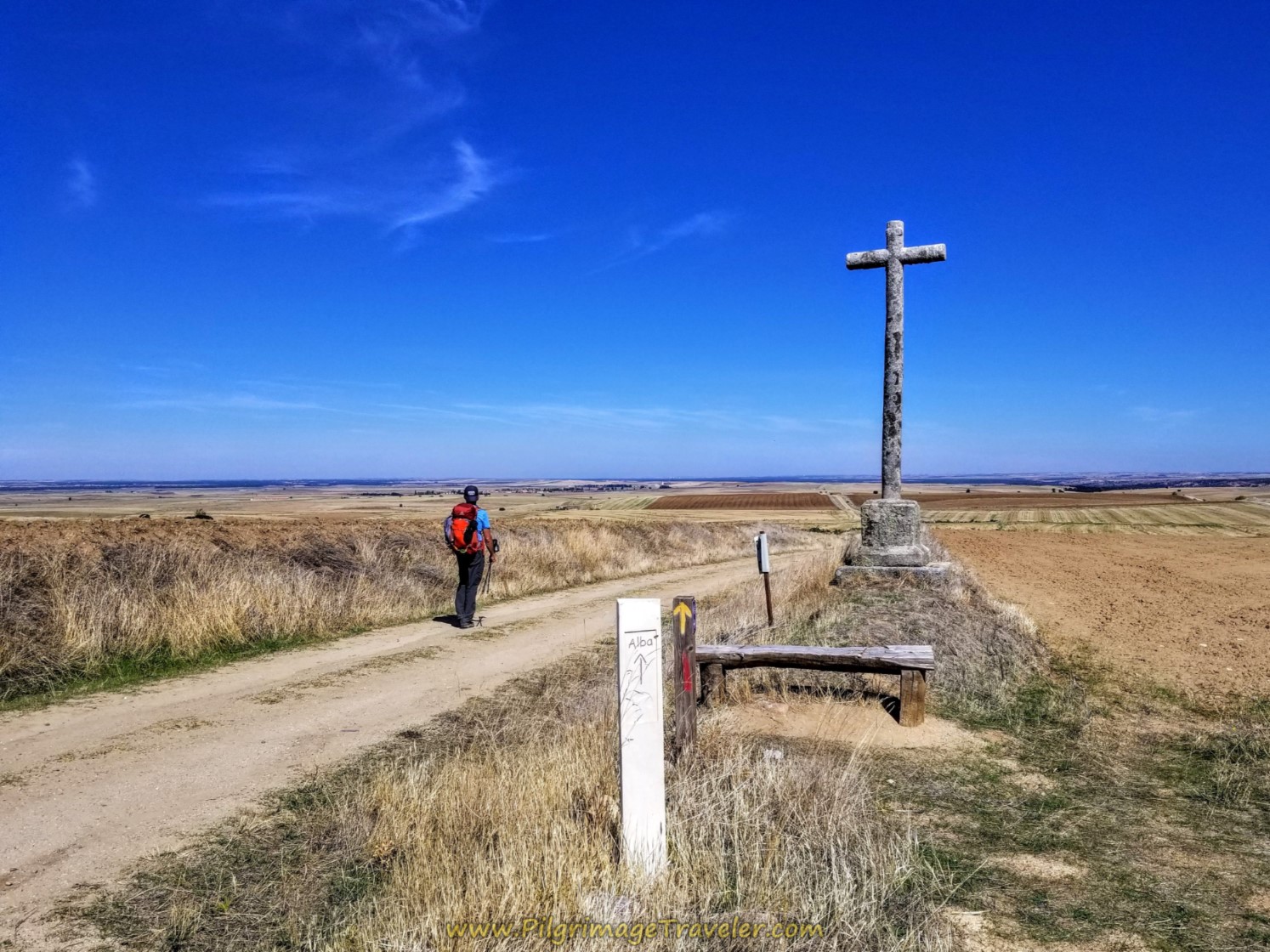
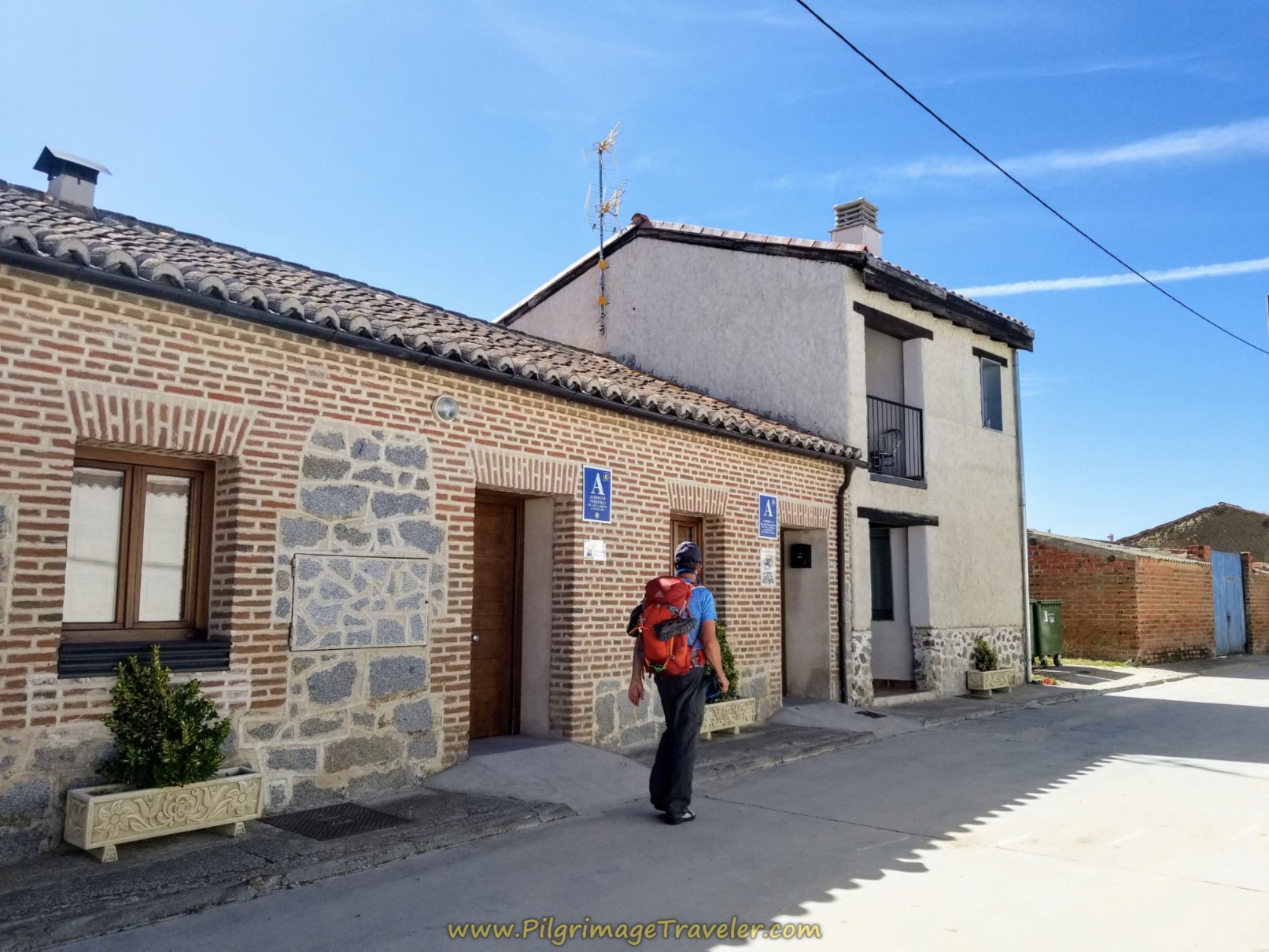
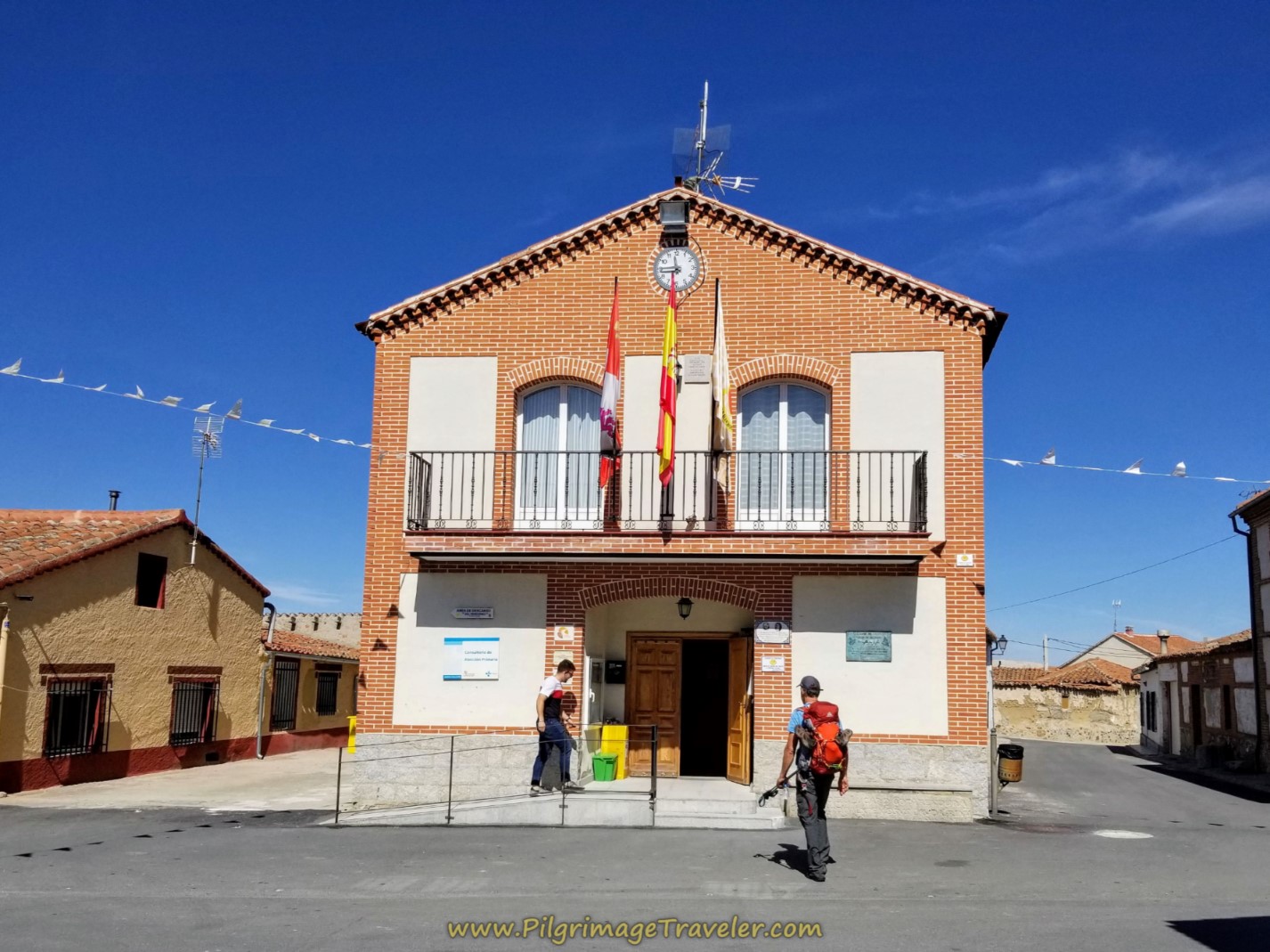
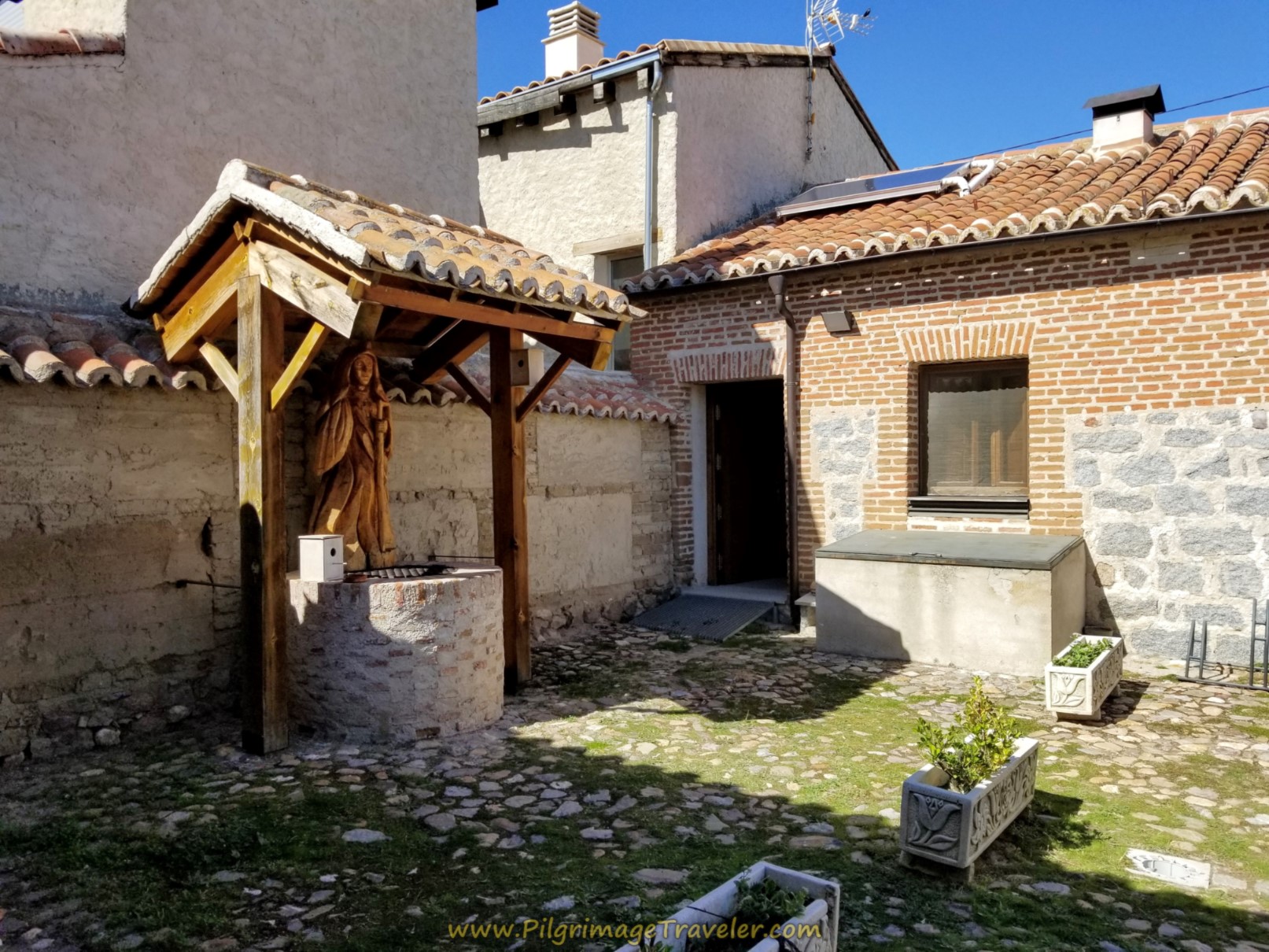
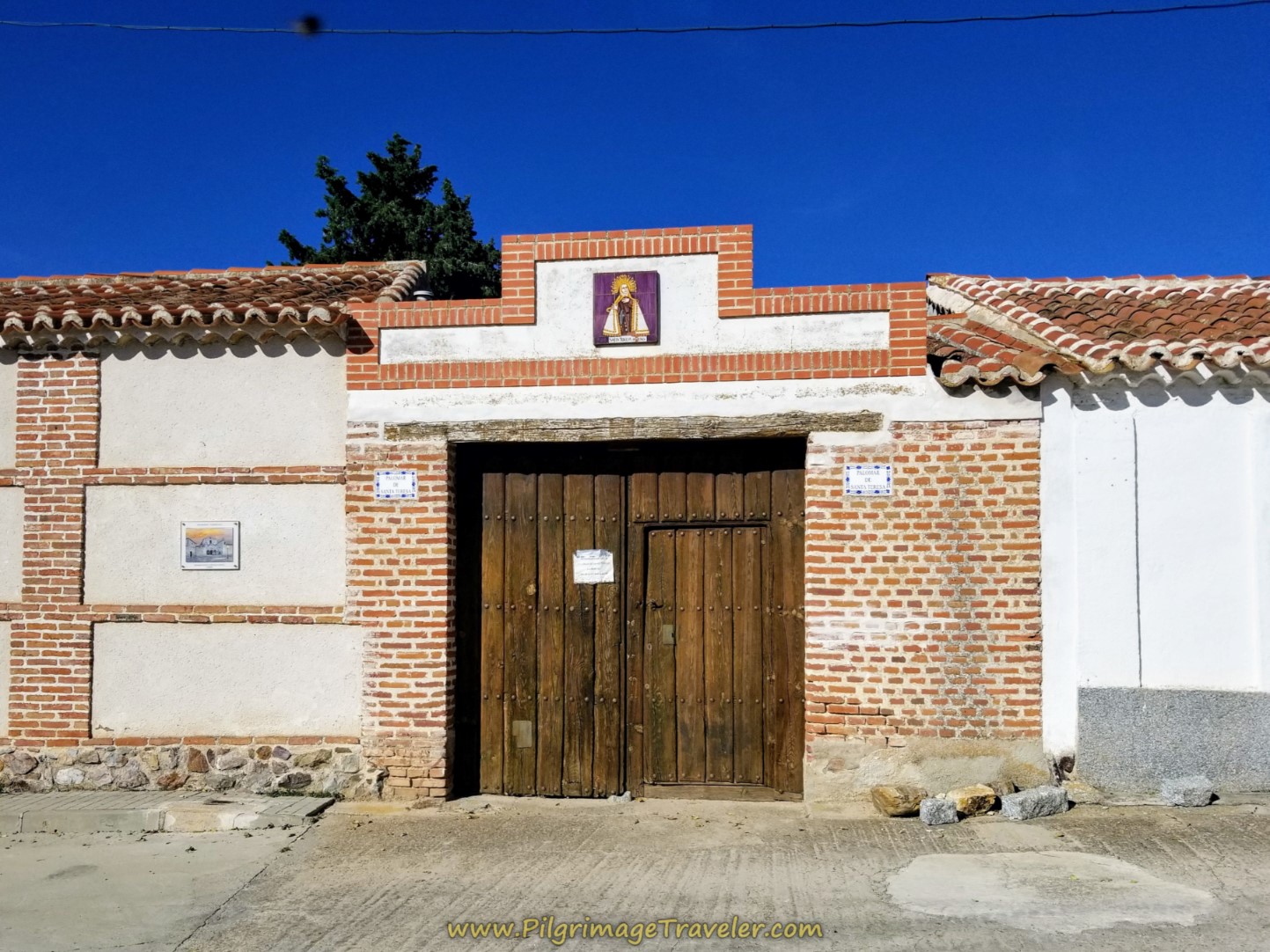
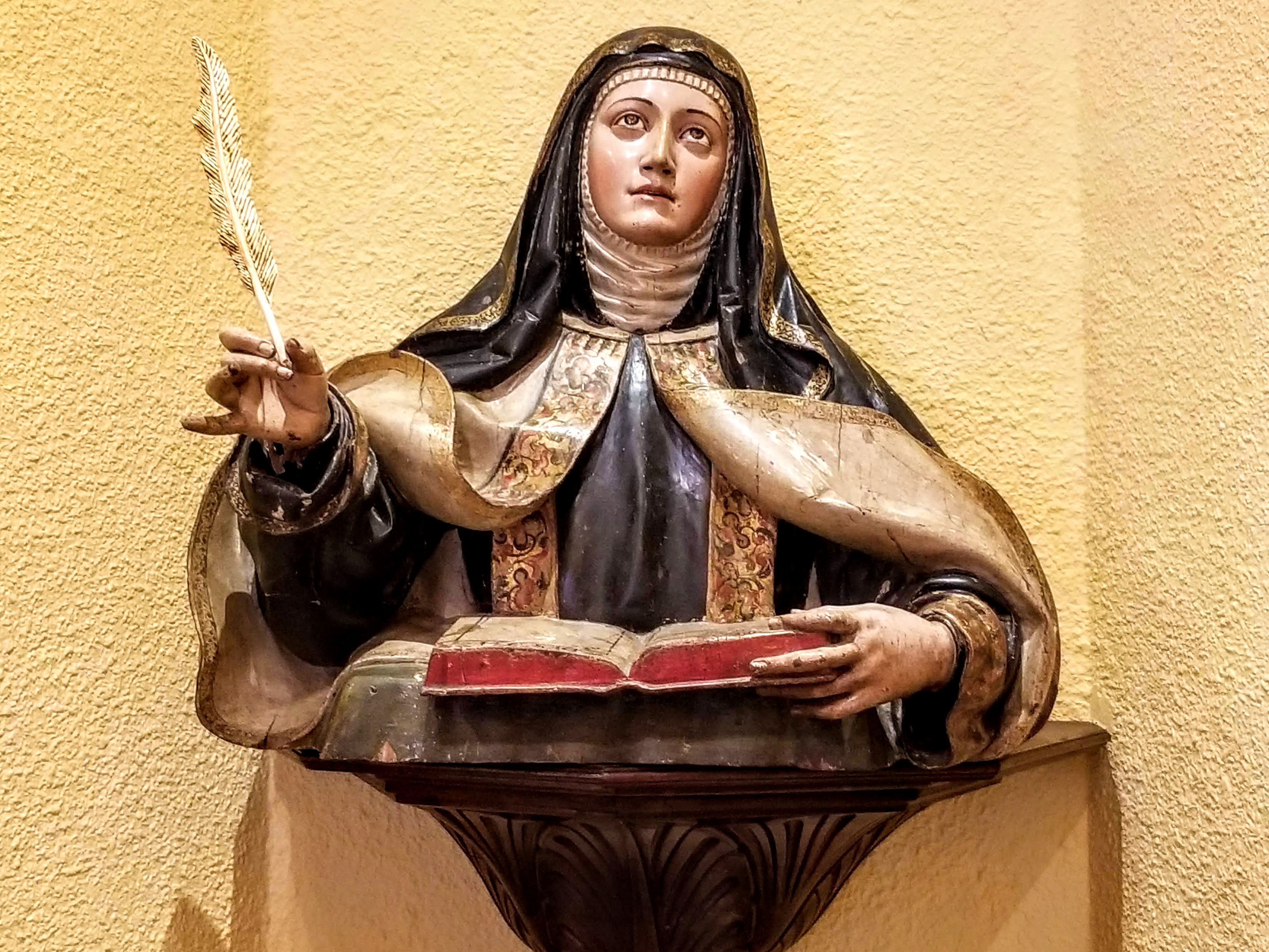
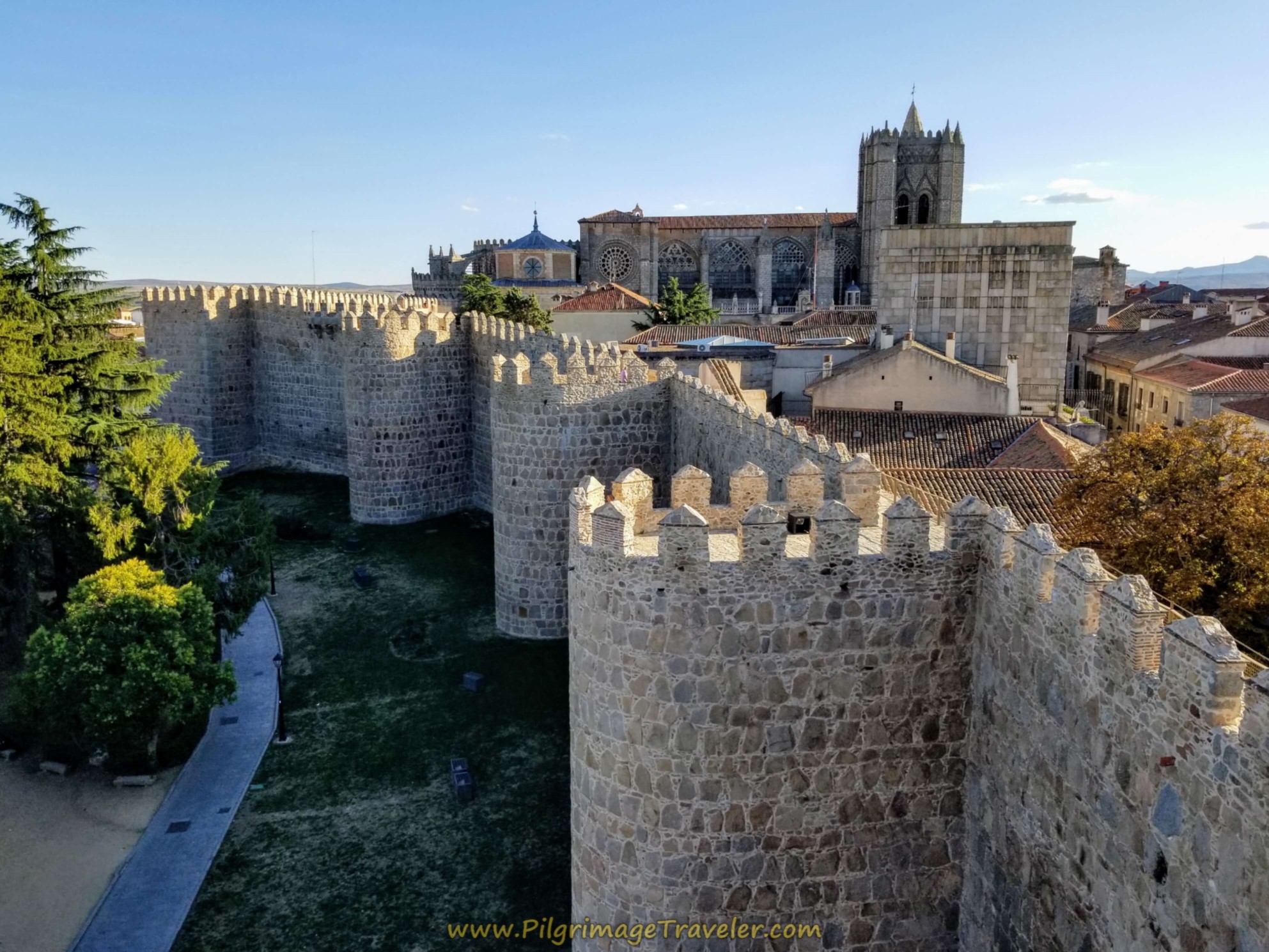
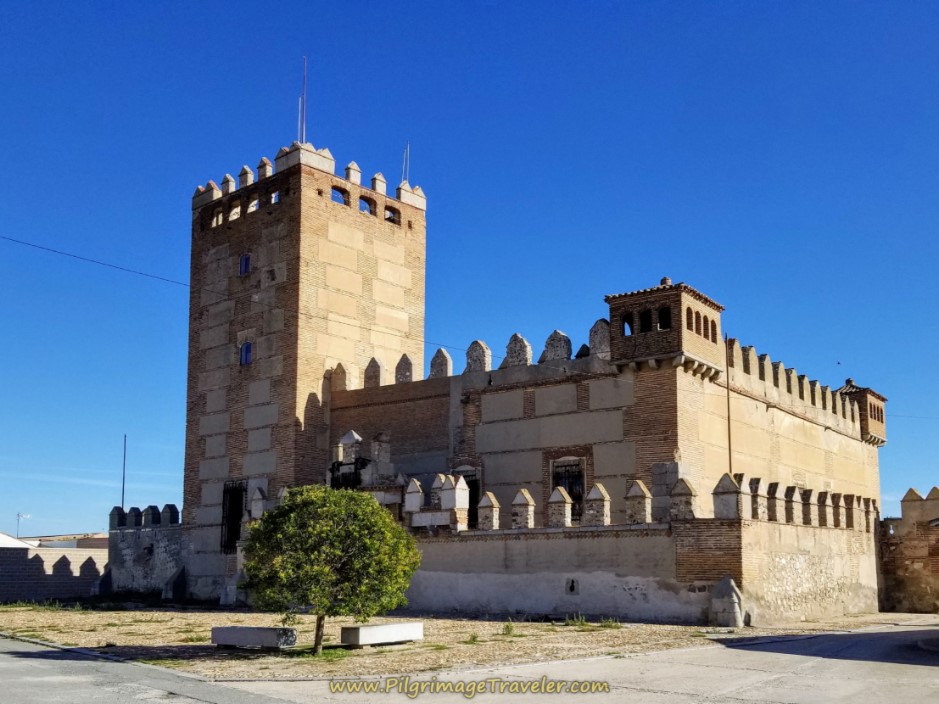
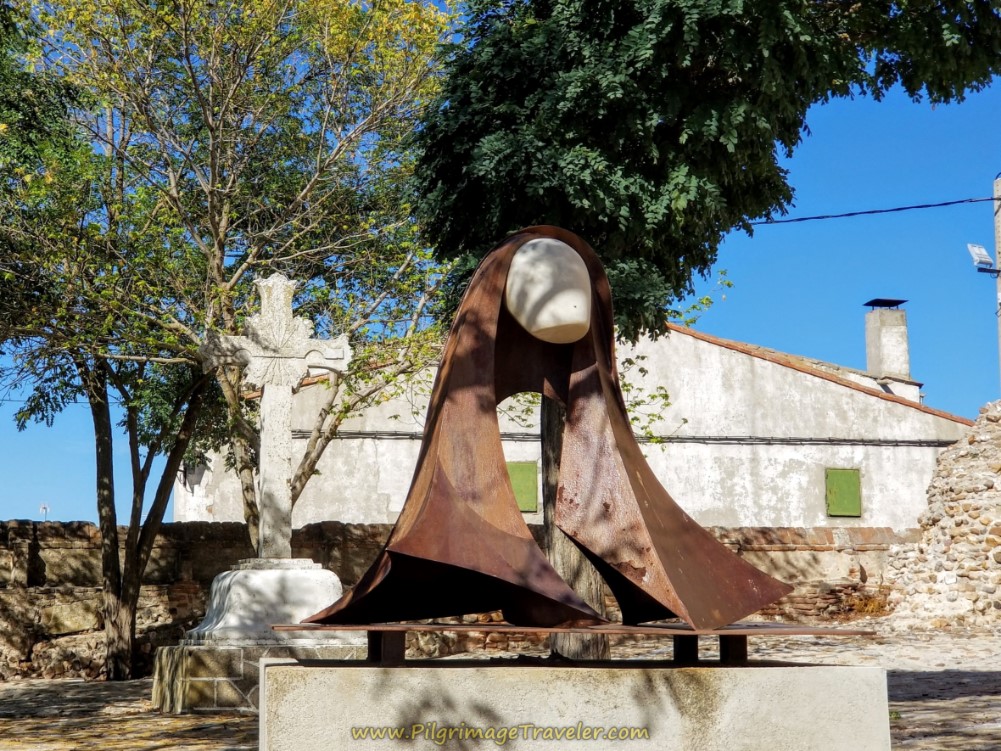
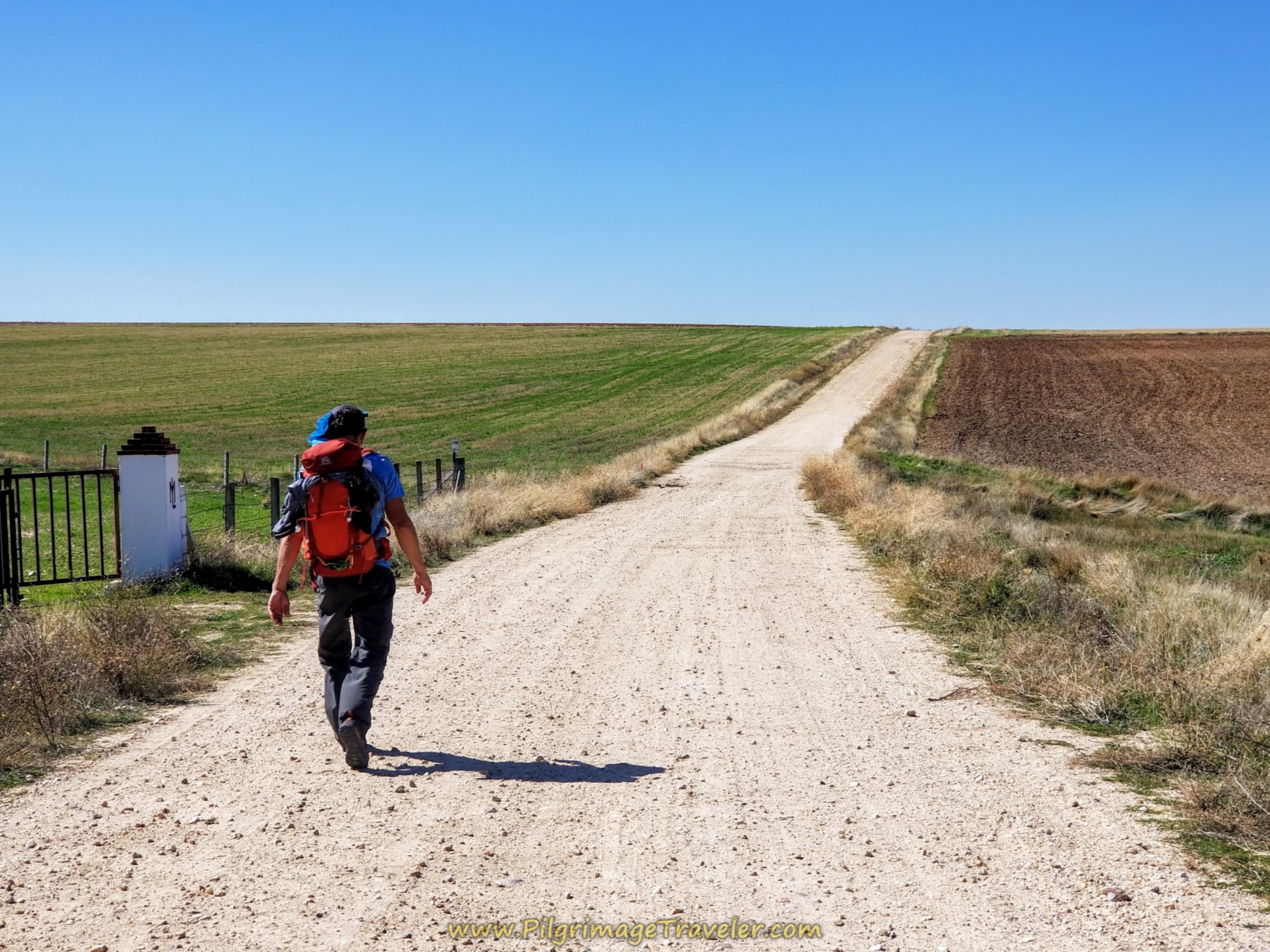
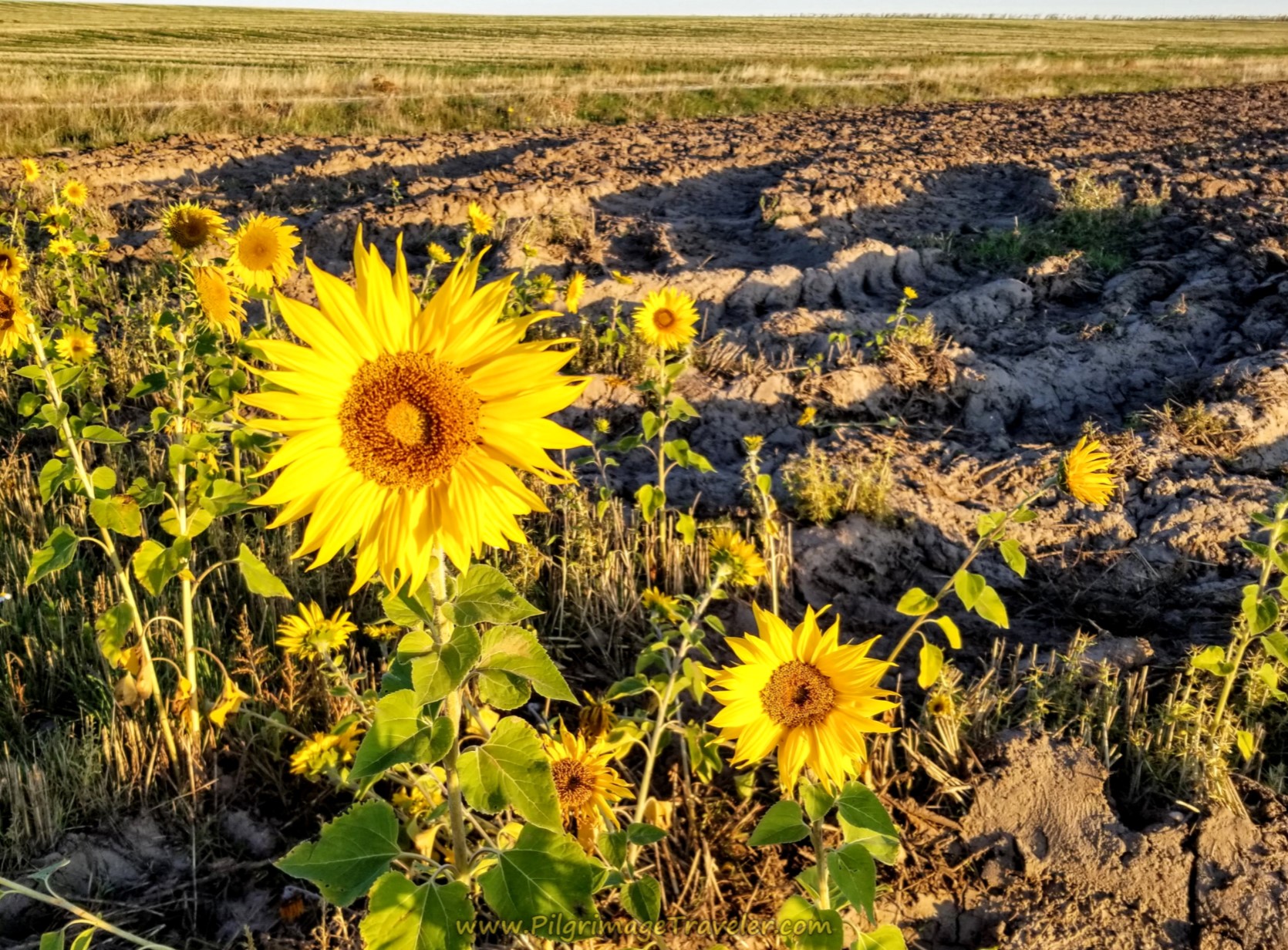
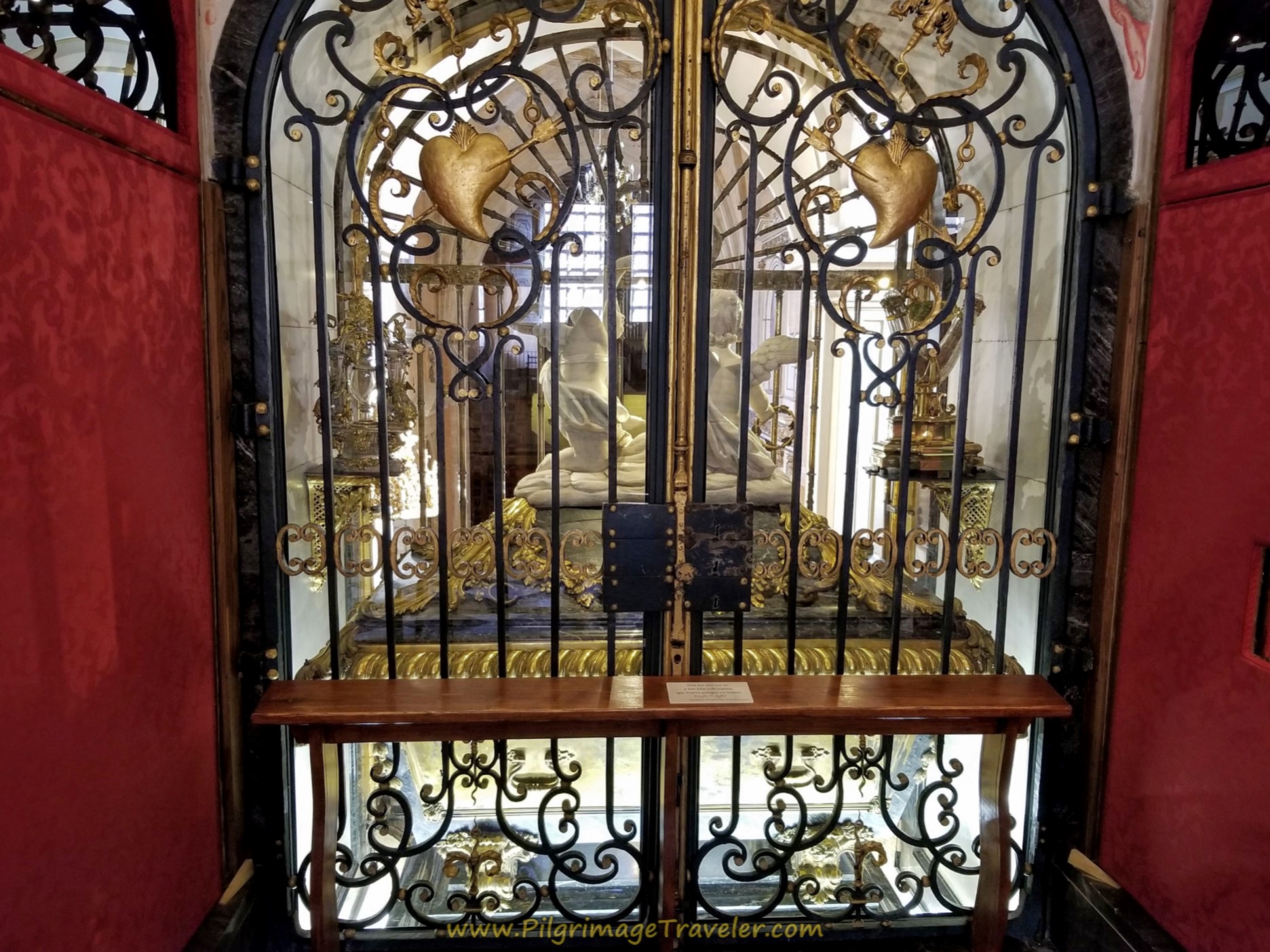
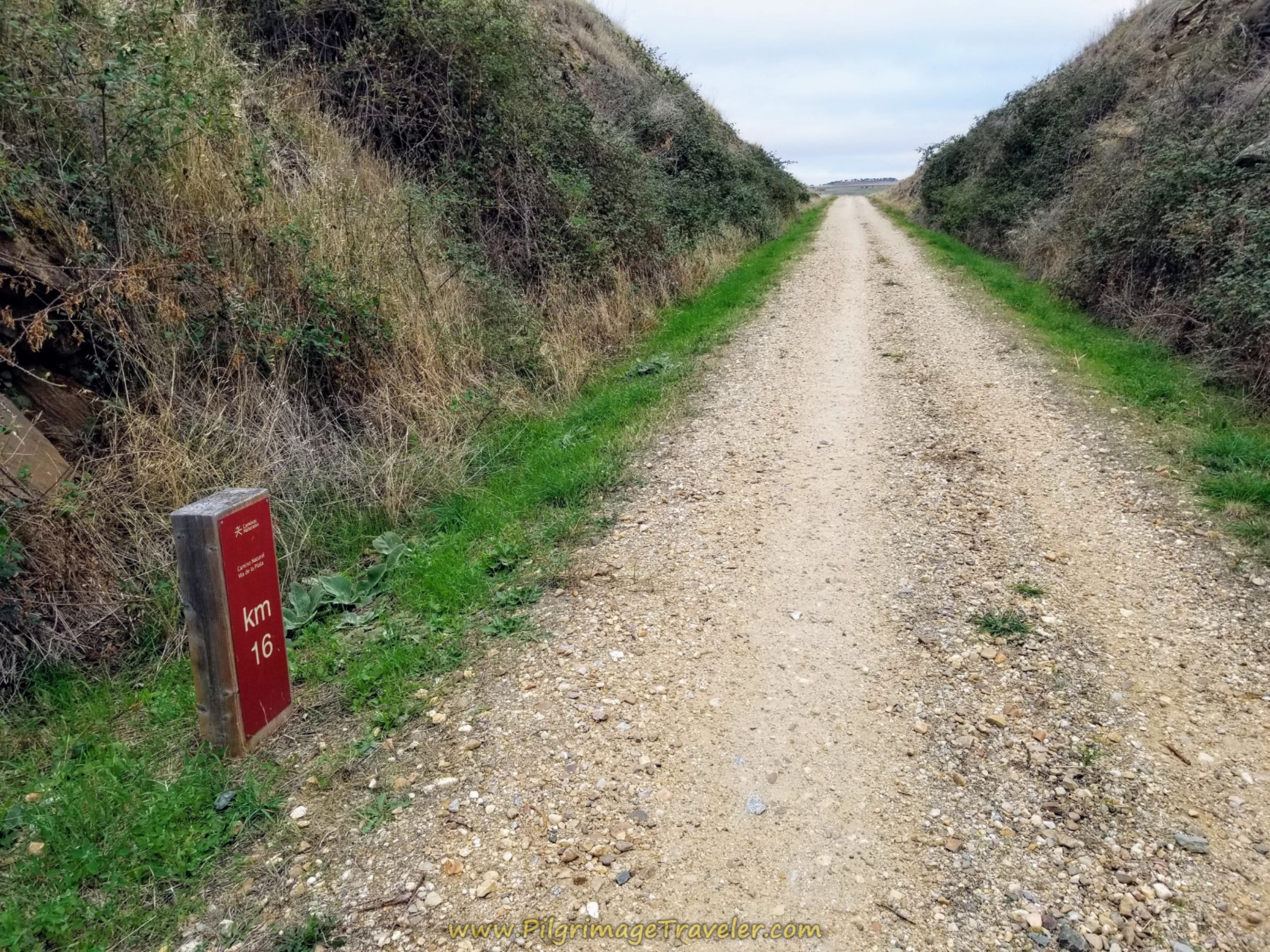
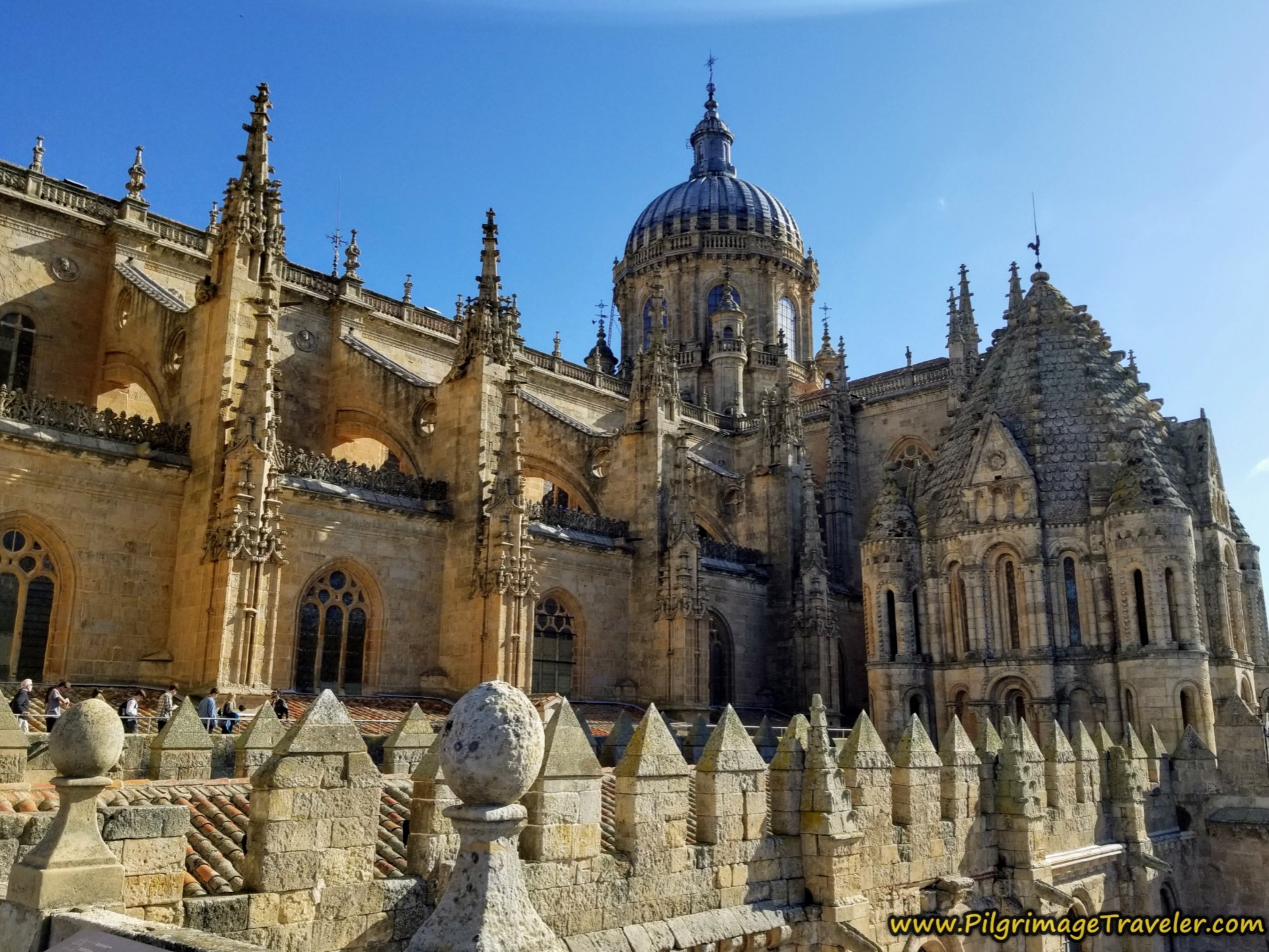











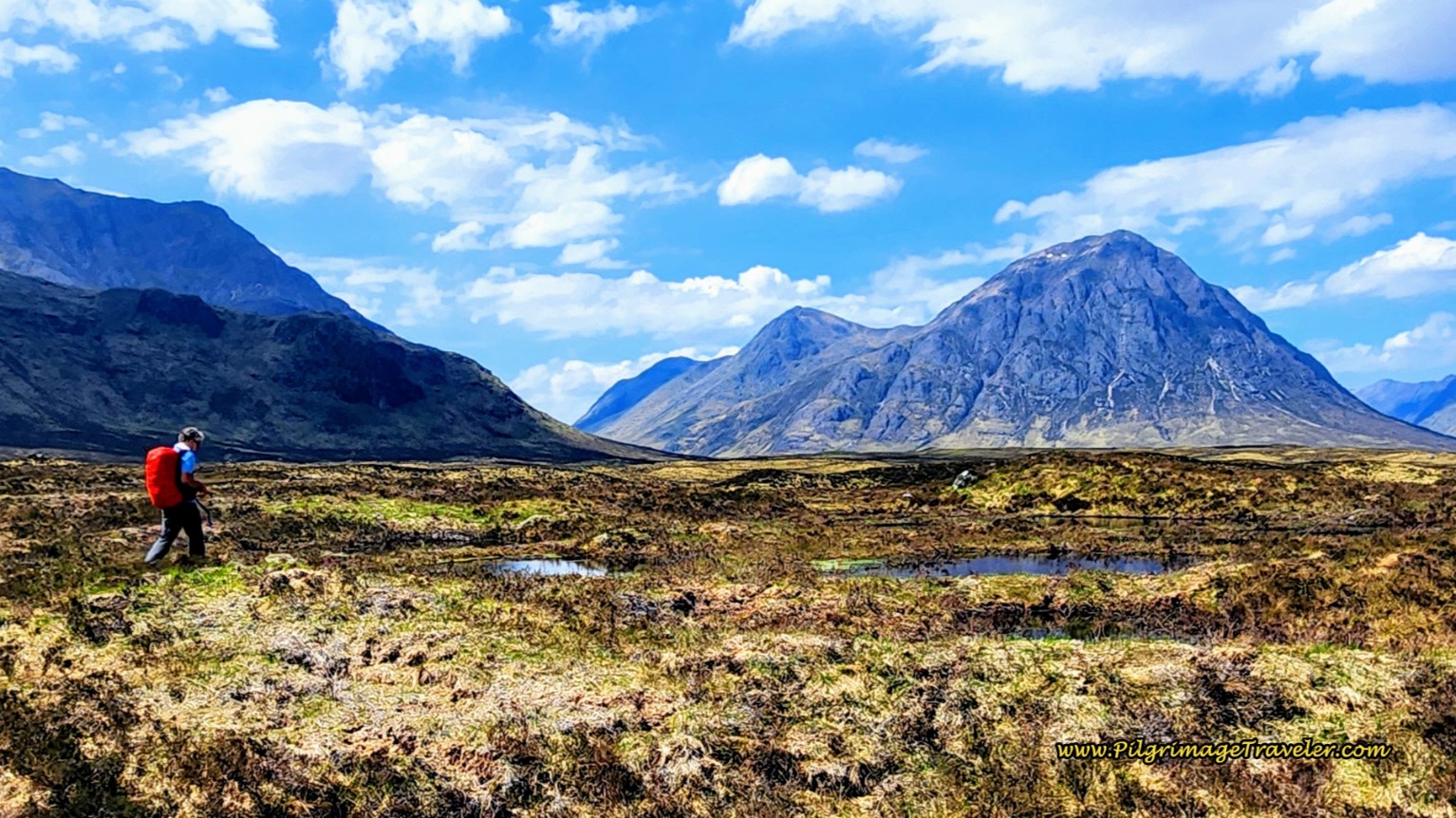
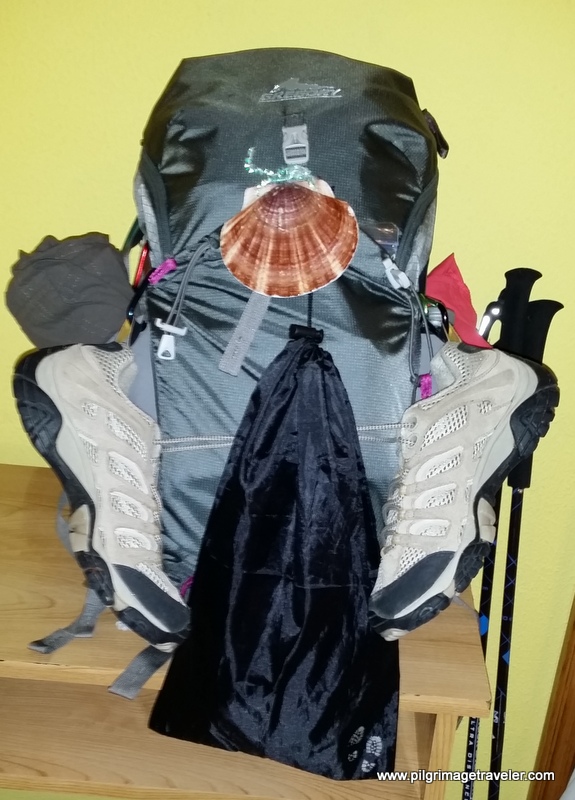



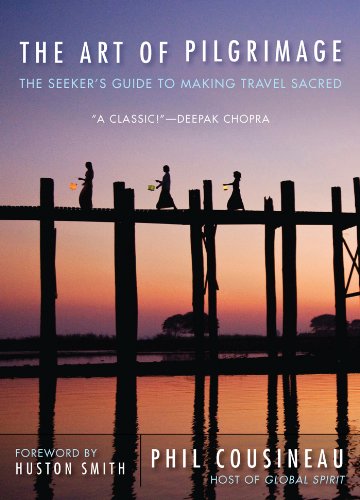


Your Opinion Matters! Comments
Have you had a similar experience, have some advice to give, or have something else you'd like to share? We would love to hear from you! Please leave us a comment in the box below.